![]()
![]()
![]()
Sixties American Rock
Group & Last Name Index to Full History:
A B C D E F G H I J K L M N O P Q R S T U V W X Y Z
Tracks are listed in chronological order by year, then alphabetically.
Listings do not reflect proper order by month or day: later oft precedes earlier.
Find on Page = F3. Not on this page? See history tree below.
Featured on this page loosely in order of first recording if not record release (as possible).
Names are alphabetical, not chronological, per year:
|
Caveats in the employment of this page: 1. It descends in chronological
order by the year the artist or band is first found on a commercial record
issue (ideally) by year only, alphabetical thereat. One musician above
another doesn't necessarily translate to earlier issue unless the year
changed. 2. Though release dates are the aim with links to YouTube, some
are recording dates and may not be everywhere clearly distinguished. 3.
Reissues are used to represent originals without much discussion. |
||
| This page concerns American rock in the
sixties. When the Beatles invaded the States in 1964 the strongest line of
defense was little more then the Beach Boys and Elvis Presley. Rock was treading water
in the early sixties, compared to the stir it had made in the fifties, the
Beatles thus arriving at a perfect time, just when rock n roll was at a lull
needing infusion. It would take a few years, however, for
American bands to respond in kind. The early sixties on this page are thus
sparse in comparison the latter sixties. If you think somebody is missing on this
page they may well be in another section of these histories such as
Modern Blues 1 and 2,
Folk or Rock 1 (R&B)
or Rock 7 (Popular).
If they were originally a doo wop enterprise they may be in
Rock 2. If their recording career began in the
fifties they may be in Rock 3. A good source for
articles and interviews for most of the musicians on this page is
Rock's Backpages.
See also surf
and San Francisco rock at SAPM.
|
||
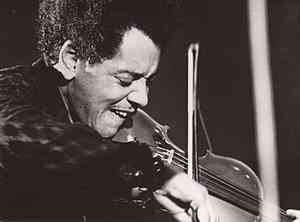 Don Sugarcane Harris Source: MPS Schallplatten |
Jazz fusion violinist, Don Sugarcane Harris
(Don Francis Bowman Harris),
also performed on guitar and organ [*]. His early R&B career began with Dewey
Terry as a member of the Squires [1,
2,
3,
4/Discos
1,
2,
3],
he using the name, Don Bowman, at the time [*].
The Squires issued their first plate, 'Lucy Lou'/'A Dream Come True' (Kicks 1) in
October
1954. Harris and Terry released their first record as
Don & Dewey in 1956 on Shade
1000: 'Miss Sue'/'My Heart Is Aching'. The pair recorded numerously until
their last in 1964: 'Get Your Hat'/'Annie Lee', the year they also joined
Little Richard's backup band for a period. Harris then did a little
time with
John Mayall & the Bluesbreakers.
He performed on the 'Johnny Otis Show' in 1968 and '69. He emerged on
Frank Zappa's albums, 'Hot Rats' in
1969,
then 'Burnt Weeny Sandwich' ('70) and 'Weasels Ripped My Flesh' ('70). 'Keep On
Driving" and 'Sugarcane' were Harris' first two solo albums in 1970. In 1972 he formed the
Pure Food and Drug Act with Victor Conte (bass), Paul Lagos (drums), Randy Resnick (guitar) and Harvey Mandel (guitar). The Drug Act issued one album
in '72: 'Choice Cuts', Harris fourth by then. His tenth and last was 'Flashin'
Time' in 1976. He had reunited with Dewey about that time, now to do the
oldies circuit until his death of pulmonary disease in Los Angeles on
November 30 of 1999 [1,
2,
3].
Terry moved onward to work with other bands, also touring Europe, until his
own death on May 11, 2003
[*]. Recording little during his latter career, Harris
appeared as late as 1998 on albums by CD Morris ('Shades of Country Blues')
and Charles Wright ('Going to the Party'). Discos of releases by Harris w
various credits at
1,
2.
See also the HMR Project. Don Sugarcane Harris 1969 Composition: Zappa Frank Zappa LP: 'Hot Rats' Don Sugarcane Harris 1970 Composition: Harris LP: 'Keep on Driving' Composition: Mayall John Mayall LP: 'USA Union' Don Sugarcane Harris 1971 Album Pure Food and Drug Act 1972 Album Don Sugarcane Harris 1973 Album Don Sugarcane Harris 1975 Album Don Sugarcane Harris 1976 Composition: Harris LP: 'Flashin' Time'
|
|
| Where best to begin some
account of America's defense against the British Invasion but with the
enemy? It might be said that the
Brits won the Invasion by overwhelming force. Their two-prong attack by
the
Beatles and
Rolling Stones alone were sufficient
to alarm sleepy Americans of their doom. But America's capitulation didn't
come without a fight, and that struggle required intel. Enter one of
America's greatest spies several years into the war, an American "soul
instrumentalist" who managed to infiltrate both the
Beatles and
Rolling Stones operations as 'Agent
Double-O-Soul', a 1964 tune by Edwin Starr among his repertoire). Born in 1946 in Houston
[1,
2], organ
player
Billy Preston
was first recorded on the 'Nat King Cole Show' in 1957, rendering a duet
of 'Blueberry Hill' with
Cole. His first record releases are thought to
have been in 1961 with Contract Records: 'My Kind Of Music' b/w 'There's A
Brand New Picture' and 'Volcano' b/w 'Young Heartaches'. In 1962 he played
organ on 'This Sunday In Person!', an album released by gospel singer,
James Cleveland. Preston also toured Europe with
Little Richard in 1962,
meeting the
Beatles for the first time in Hamburg. 1963 saw his release of
'Greazee' with Derby Records and the issue of his debut album, '16 Yr. Old
Soul'. In 1964 Preston participated in the issue of
'It's A Blessing' b/w 'Since I Found Him' by the Cogic (Church of God In
Christ) Singers. Preston issued three 45s in 1965 on Vee-Jay, as well as
six singles on Oldies 45 with flip sides shared by other artists. He also
released his second and third albums in 1965, 'The Most Exciting Organ
Ever' followed by 'Early Hits of 1965'. Come 'Wildest Organ In Town!' in
1966. Nineteen more studio albums would follow to as late as 'You and I'
in 1997 in addition to his 'Live European Tour' recorded in 1973 and six
gospel albums from 1965 ('Hymns Speak From the Organ') to 2001 ('Music
From My Heart'). Preston signed on with Apple Records owned by the Beatles
on 31 January 1969 after being asked to join the Beatles' 'Let It Be'
album sessions in latter January, commonly referred to as the 'Get Back'
sessions. This album required 30 days to record, during which differences
between Lennon and McCartney were making it difficult to get forward with
getting back. George Harrison reasoned that Preston's presence might quell
uneasy waters and asked him to join them in the studio on electric piano
on 22 January of 1969. Of the fifteen jams recorded that day Preston
appeared on fourteen of them (both he and Lennon out on 'Carol') [see "22"
at Beatles Bible]. The 'Get Back' sessions are so-called prior to
eventually naming the album, 'Let It Be'. Preston spent a week recording
with the Beatles, then accompanied them at their last public performance
on January 30 1969 atop the roof of Apple headquarters in London. Preston
also participated in the Beatles' album, 'Abbey Road' (1969). 'Let It Be'
was recorded before 'Abbey Road' though its release came afterward. As to
Preston's earlier presence on the Beatles' 'White Album' released in 1968,
there has been considerable discussion amidst what appears a greater
consensus that such is so unlikely as to ignore the possibility
altogether. His relationship with the
Rolling Stones began briefly
afterward, contributing to 'Can't You Hear Me Knocking' and 'I Got the
Blues' on the 'Sticky Fingers' album ('71), and 'Shine a Light' on 'Exile
On Main Street' ('72). Preston was the
Stones' principal keyboardist until
1977 while he pursued his own career with A&M Records (as of '71), and
would record on various later
Stones issues (such as 'Tattoo You'
in '81 and 'Bridges to Babylon' in '97). Preston moved to Motown Records
in 1979, releasing his first duet with
Syreeta Wright that year: 'Go For
It' b/w 'With You I'm Born Again'. Last issuing with Motown in 1986,
Preston spent the rest of the eighties doing session work. In 1990 he
toured with both
Eric Clapton and
Ringo Starr before joining The
Band,
which relationship ended with double whammy trouble in 1991, first for
insurance fraud, setting fire to his home in Los Angeles, then for sexual
assault with a 16-year old male Mexican day laborer. He was sentenced to
nine months drug rehabilitation (cocaine) and three months of house
arrest. Preston released the albums 'Billy's Back' in 1995 and 'You and I'
in 1997 (with the Italian band, Novecento). Preston's last years into the
new millennium were as active as possible while afflicted with kidney
disease. He is thought to have last recorded with
Eric Clapton and
JJ Cale
for the 2006 release of the album, 'Escondido'. His last live performance
arrived the same year at a Los Angeles concert with Dhani Harrison (son of
George) and
Ringo Starr. Preston died of kidney failure
on June 6 that year
in Scottsdale, Arizona, not yet sixty years of age
[*]. Among Preston's
numerous compositions were such as 'Little Girl' ('70), 'Slaughter' ('72)
and 'We're Gonna Make It' ('72). Major discos w various credits at
1,
2.
Other discos: 1,
2.
Songwriting credits at
1,
2,
3.
Lyrics at AZ. Tribute sites: 1,
2. Further reading:
1,
2. Though Preston's
profile
comes early on this page we don't list titles below until 1969, the year he joined Apple and began backing the
Beatles. (His participation on their '68
'White Album' remains unsubstantiated.) His earlier career to '68 as a
gospel and soul singer is indexed at R&B-Soul-Disco. Billy Preston 1969 Live with the Beatles Apple Rooftop Concert Music video Composition: Paul McCartney With the Beatles Composition: McCartney/Lennon Billy Preston 1971 Album Billy Preston 1973 Album Concert Billy Preston 1974 Composition: Preston/Bruce Fisher Billy Preston 1975 Live with the Rolling Stones Composition: Preston/Joe Greene Live with the Rolling Stones Composition: Preston Billy Preston 1979 Live with Syreeta Wright Composition: Carol Connors/David Shire Billy Preston 1988 Filmed live Composition: Swedish traditional Lyrics: Carl Boberg 1885 Poem: 'O Store Gud' ('O Great God') Billy Preston 1995 Filmed live in Japan with Ringo Starr Composition: Bruce Fisher/Preston Billy Preston 1997 With Novecento Composition: Preston/Bruce Fisher Billy Preston 2002 Filmed live with Eric Clapton Composition: George Harrison
|
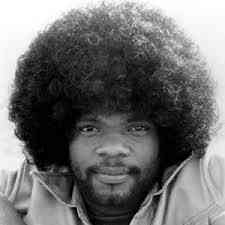 Billy Preston Source: Sopitas |
|
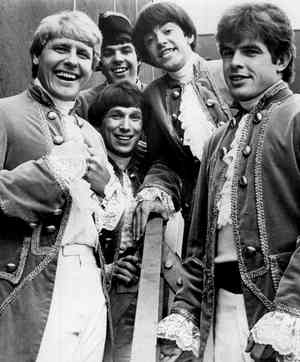 Paul Revere & the Raiders 1967 Source: Wikipedia |
Keyboardist, Paul Revere Dick
[1,
2], saw the
British Invasion coming but his
warnings were in vain. Similarly, Elvis Presley had finished his US Army tour
of two years in
January of 1960, during which he learned of Queen Elizabeth II's intent to
assault the United States. Not yet cognizant of how, when or where the Brits
would attack, Presley only knew
that the next rail of his career would involve early preparations against British conquest
that would ultimately call upon unusual measures of bravery, America having little means of defense
at the time beyond some boys on its
beaches whom no one had heard of yet. Dick had been preparing against the plunder to come by forming
a band called the Downbeats in the latter fifties which singer, Mark
Lindsay [1,
2,
3], joined.
Wikipedia has Revere and Lindsay first meeting by chance in Caldwell, Idaho,
Lindsay working at the McLure Bakery where Revere bought inventory for a
restaurant that he owned. Both informed by the CIA of the impending
Invasion, the Downbeats urgently changed their
name to
Paul Revere and the Raiders [1,
2,
3,
4,
5,
6,
7,
8,
9,
10,
11,
12]
in 1960, 'Beatnik Sticks'/'Orbit (The Spy)' (Gardena G-106) to become their debut
taunt at the Brits that year, an offensive strike in anticipation getting
issued in Australia and Canada though not the UK. The album,
'Like, Long Hair' was released in '61, tunes on that brazenly released in
the UK as if to say "You want a piece of this? Come and Get It", adding to
the Queen's already flaring resolve to avenge the American Revolutionary War
of Independence of 1775-83. The Raiders toured the US in 1960
with
Leon Russell at piano. He briefly come
and gone, other Raiders personnel likewise quickly rotated. Dick (Revere) remained
with the Raiders until his death of cancer on Oct 4, 2014
[1,
2,
3]. Lindsay had left the group
in 1975 for a solo career, the Raiders having had their heyday and well into
descent by that time. The group nevertheless yet exists, three of its
current members having been with the band since the seventies: Doug Heath
(guitar), Ron Foos (bass) and Danny Krause (keyboards). In 1963 the Raiders
released two albums titled 'Paul Revere and the Raiders', one an obscure
live LP. Ten years later the group was in wane, though a couple reunion
albums were released in '83: 'The Great Raider Reunion' and 'Paul Revere
Rides Again'. During the latter sixties, however, the Raiders were hugely
successful, beginning with 'Just Like Me' in latter '65. 'Kicks', 'Hungry'
and 'Good Thing' each slipped to Billboard's Top Ten in 1966. 'Him or Me
What's It Gonna Be?' rose to #5 in April of '67. The Raiders rolled out a
couple magic carpets in 1971 with 'Indian Reservation' and 'Birds of a
Feather', after which their horse got tired and they began their demise.
A couple of obscure live volumes were issued in the nineties titled 'Generic
Rock & Roll'. Two volumes of 'Ride to the Wall' issued in the new
millennium did little to resurrect the Raiders' name, they cast aside like a
used rag, like an old newspaper to blow down a dusty street in the wind,
such the appreciation shown, but for their
Facebook
page, to among the earliest veterans of the war against the British.
Discographies of their early strategic "hits" at the enemy at
1,
2,
3.
The Raiders defending against the adversary in visual media.
Discos for Lindsay's solo career: 1,
2,
3.
Interviews w Lindsay: 1988,
1989,
2010,
2011,
2013,
2016.
Lindsay at Facebook.
Several recordings per Lindsay's solo career interspersed with the Raiders
below. Paul Revere & the Raiders 1960 Composition: Raiders Paul Revere & the Raiders 1961 Composition: Raiders Composition: Raiders Paul Revere & the Raiders 1964 Composition: Lindsay/Revere Film Paul Revere & the Raiders 1965 Composition: Rick Dey/Roger Hart With film Paul Revere & the Raiders 1966 Composition: Drake Levin/Phil Volk Composition: Mark Lindsay/Terry Melcher Composition: Cynthia Weil Composition: Barry Mann/Cynthia Weil Paul Revere & the Raiders 1967 Composition: Mark Lindsay/Terry Melcher Television performance 'Ed Sullivan Show' Composition: Mark Lindsay/Terry Melcher Composition: Mark Lindsay/Terry Melcher 'Smothers Brothers Show' Paul Revere & the Raiders 1969 Composition: Mark Lindsay Filmed live Mark Lindsay 1970 Composition: Kenny Young/Artie Butler Paul Revere & the Raiders 1971 Composition: John D. Loudermilk Television performance Mark Lindsay 1976 Composition: Mark Lindsay/Perry Botkin Jr. Paul Revere & the Raiders 1986 Filmed concert Mark Lindsay 1990 Composition: Kenny Young Paul Revere & the Raiders 2014 Filmed concert Mark Lindsay 2015 Mark Lindsay 2016
|
|
|
Like the
Monkees,
Tommy Roe [1,
2,
3] verged on bubblegum pop, but
like the
Monkees he could rock as well. Born in Atlanta, Georgia, in 1942,
Roe supported his early musical
ambitions after high school by working for General Electric [*]. At age
twenty he released his first singles on the Mark IV custom label as Tommy Roe & the
Satins: 'Caveman' and 'I Got a Girl'. That saw review in 'Billboard
Magazine' on March 28 of 1960 [sessions
/issues].
That was also released on Judd 1018. Roe then issued 'Shelia' (likely a
misprint of 'Sheila') with the Satins in October 1960 on the Judd label
(1022) w 'Pretty Girl' flip side. The Satins thereafter retired. Roe
recorded 'Sheila'
again on Feb 21 of 1962 in Nashville w 'Save Your Kisses'. He was supported
by
Jerry Reed (guitar),
Floyd Cramer (piano),
Boots Randolph (sax), et al,
with backup vocals by the Jordanaires. Thought
issued in May, 'Sheila' rose to #1 on the
Hot 100
in July. As that brought an advance of $5000 from ABC-Paramount, Roe quit
his job at GE to tour. 'Everybody' climbed to the #3 spot in September of
1963. 'Sweet Pea' saw #8 in June of '66, 'Hooray for Hazel' #6 in September. 'Dizzy'
experienced thin atmosphere at #1 in February of '69. Roe's last to score in
the Top Ten was 'Jam Up and Jelly Tight' in November of '69. Gradually
losing popularity thereafter, his final LP, 'Full Bloom', was issued in 1977
fourteen years after his first, 'Sheila', in 1963. Thirty-five years later
angelic ants in his
pants disguised as demons forced him to release perhaps his fourteenth album, 'Devil's Soul Pile', in 2012.
Roe composed numerous of his own titles from such as 'Everybody' in '63
through 'It's Now Winters Day' and 'Kick Me Charlie' in '66 to 'Back Streets
and Alleys' in 1971. Various credits for Roe's titles at
1,
2,
3. Per this
writing Roe yet
performs at such as casinos with guitarist, Rick Levy. YouTube listings per
his website.
Roe in other visual media.
Roe at Facebook. Tommy Roe & the Satins 1960 Compositions: Tommy Roe Composition: Tommy Roe Tommy Roe 1962 Composition: Tommy Roe Tommy Roe 1966 'Action' Composition: Tommy Roe Tommy Roe 1966 Composition: Tommy Roe Tommy Roe 1969 Telecast Date estimated Composition: Tommy Roe/Freddy Weller Composition: Tommy Roe Composition: Tommy Roe/Freddy Weller Tommy Roe 1970 Televised w Joe South & Billy Joe Royal Tommy Roe 1986 'Little Darlin's' Composition: Tommy Roe
|
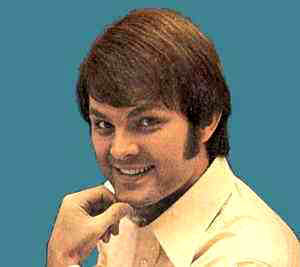 Tommy Roe Source: Discogs |
|
|
Tina & Ike Turner 1966 Photo: Associated Press Source: SF Gate |
Soul musicians, Ike & Tina Turner [1, 2, 3, 4], began recording R&B together in 1958 ('Box Top', under Tina Turner). Tina was going by the name, Little Ann, at the time. In 1960 Ike changed her name to Tina Turner for the release of 'A Fool In Love' that year. That single exceeded a million copies. The Ike & Tina Turner Revue (as they were called) scored another million copies with 'It's Gonna Work Out Fine' in 1961. They then got married, eloping to Tijuana, in 1962. Despite the power combo that Ike & Tina were, they didn't score a gold album until 'What You Hear Is What You Get' in 1971. The Turner equation was nevertheless unstoppable until 1975 when the couple ceased performing together. Tina had separated from Ike the year before and would file for divorce in 1976. The last album of their original recordings together was 'The Edge', released in 1980. Discos w various credits at 1, 2. Ike & Tina Turner in visual media. Ike & Tina Turner 1960 Composition: Ike Turner Ike & Tina Turner 1964 Composition: Ike Turner Ike & Tina Turner 1965 Composition: Ike Turner Composition: Rose Marie McCoy/Sylvia McKinney Ike & Tina Turner 1968 Ike & Tina Turner 1970 Composition: Mick Jagger/Keith Richards Filmed live Ike & Tina Turner 1971 Funkier Than a Mosquita's Tweeter Composition: Alline Bullock (Tina Turner's sister) Composition: John Fogerty Composition: Otis Redding Ike & Tina Turner 1973 Composition: Tina Turner Ike & Tina Turner 1975 Composition: Tina Turner Filmed live
|
|
|
Beach Boys Source: Ranker197 |
In 1961 the Beach Boys [1, 2, 3, 4, 5, 6, 8] held their first sessions in Hollywood to record their first demos [incomplete disco], 'Luau' and 'Surfin''. The latter had been composed by Brian Wilson as a substitute for a piano sonata he'd been expected to compose for a high school music class project [1, 2]. The Beach Boys originally named themselves the Pendletones, which promotions man at Candix Records, Russ Regan, deemed insufficient and changed to the Beach Boys [*]. The original members of the Pendletones, now stuck as the Beach Boys like it or not, were Al Jordine (b '42/rhythm guitar), Mike Love (b '41/vocals) and the three Wilson brothers: Brian (b '42/bass guitar), Carl (b '46/guitar) and Dennis (b '44/drums). Good thing that Dennis surfed, since for all the surfing songs that the Beach Boys composed he was the only one in the group who did [*]. Be as may, after a second unissued session for 'Luau' and 'Surfin'' was held on September 16 [see 'Lost & Found (1961-1962)'] they went down for issue on Oct 4 to see issue on Candix 331 in November and X 301 in December [45cat]. 'Surfin' made pebble waves in Feb at #75 on Billboard, but 'Surfin' Safari' was a boulder at #14 the same month. The Beach Boys released their first album, 'Surfin' Safari', in 1962. It was 'Surfin' USA' at #3 in March of 1963. The Beach Boys were a main line of defense when the British, void of conscience, invaded America in the sixties, forcing the civilian population to absorb UK's two main waves of assault in 1964, the Beatles in February and the Rolling Stones in June. 'I Get Around' had meanwhile charted in May of 1964 at #1. It was 'Help Me, Rhonda' at #1 in April of '65. 'Good Vibrations' reached #1 in October of '66 during the height of the Beach Boys' heydays. In 1966 the concept album, 'Pet Sounds' appeared. In 1966 the Beach Boys founded Brother Records to release 'Smiley Smile' in 1967. With Brian in the band the Beach Boys became known for the technological expertise of their recordings. In mid 1968 the Beach Boys met Charles Manson, the killer, and his family [1, 2, 3, 4]. Manson and Dennis diddled about with some music, Wilson's 'Never Learn Not to Love' (Capitol 2360/Nov '68 *) a reworking of Manson's 'Cease to Exist' (also on the album, '20/20', released in Feb '69). There soon came the havoc of Manson up to no good, including his whooping by Dennis, after which Manson and his family were lost as soon as possible, eventually with the assistance of the law upon the Tate murders in August of 1969. In 1973 the Beach Boys released their gold album, 'The Beach Boys in Concert'. The Beach Boys were one of the few divisions of American defense that didn't simply crumble before the invasive British forces of the sixties, 'Kokomo' reaching Billboard's #1 spot as late as Sep 1988. 'Still Cruisin' found #9 in August of '89. The Beach Boys have maintained a strong audience ever since, a band no one wants to see disappear into history, yet performing to this day. Dennis, however, had died by drowning in Marina del Ray, CA, on December 28, 1983. Carl died of lung cancer in Los Angeles on Feb 6 of 1998. The Beach Boys issued their 29th studio album in 2012: 'That's Why God Made Radio'. 'Live – The 50th Anniversary Tour' followed in 2013. Past members of the Beach Boys include Blondie Chaplin and Ricky Fataar in the early seventies, and David Marks who goes back with the Wilsons to their school days and is currently the fifth member of the group. All the Beach Boys contributed to compositions with their main body of works by Brian Wilson and Mike Love. The latter collaborated on such as 'Surfin' Safari' ('62), 'Our Car Club' ('63) and 'Good Vibrations' ('68). Brian composed such as 'Be True to Your School', 'Little Saint Nick' and 'Surfer Girl' in 1963, and 'Wind Chimes' in '67. Love later wrote 'Kokomo' in '88. Carl had written 'Shot Down Part 2' in '64. Jardine had contributed to such as 'How She Boogalooed It' ('67) and 'Take a Load Off Your Feet' ('71). Dennis had composed such as 'All I Want to Do' ('69) and 'Lady' ('70). Discos for the Beach Boys w various credits at 1, 2, 3. Each of the Beach Boys have issued solo works. Dennis released 'Pacific Ocean Blue' in 1977. Carl came out with 'Carl Wilson' in early 1981, 'Youngblood' in '83. Love has issued several albums since those with his group apart from the Beach Boys, Celebration, their first being 'Almost Summer' (soundtrack) in 1978. His initial solo LP was 'Looking Back with Love' in 1981. Love issued 'Unleash the Love' as recently as 2017. Brian came out with 'Brian Wilson' in 1988 and has released above ten more to 'No Pier Pressure' in 2015 and 'Brian Wilson & Friends' in 2016. Jardine issued his first solo album only recently. 'Postcards from California', in 2012. The Beach Boys in visual media. Reviews. The short list below is divided about half n half between some of the Beach Boys' early successes and how they sound now, half a century later. All edits for 2012 were filmed live. Beach Boys 1961 Composition: Brian Wilson/Mike Love Beach Boys 1962 Composition: Brian Wilson/Mike Love/Gary Usher Composition: Brian Wilson/Mike Love Beach Boys 1963 Melody: Chuck Berry's 'Sweet Little Sixteen' Lyrics: Brian Wilson Beach Boys 1964 Composition: Brian Wilson/Roger Christian Composition: Brian Wilson/Mike Love 'Ready Steady Go!' Composition: Brian Wilson/Mike Love Beach Boys 1965 Composition: Brian Wilson/Mike Love Beach Boys 1966 Composition: Brian Wilson/Mike Love Beach Boys 2012 Composition: Lead Belly 1940 Composition: Dennis Wilson/Gregg Jakobson Composition: Brian Wilson/Tony Asher Composition: Brian Wilson/Mike Love Composition: Brian Wilson/Mike Love Composition: Brian Wilson/Roger Christian
|
|
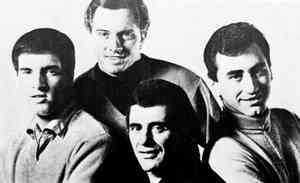 The Four Seasons 1966 Source: Wikipedia |
The Four Seasons
originally consisted of Frankie
Valli (lead vocals) Tommy DeVito (guitar), Bob Gaudio (keyboards) and
Nick Massi (bass). The group has employed numerous personnel over the years
with Valli
its anchor for more than fifty years. DeVito and Valli went back to '54 with
the Variatones [*]. They had held their first sessions together with the Four
Lovers on April 12 of '56 in NYC. Along with DeVito on lead guitar
and Valli at vocals and drums were Menry Majewski (rhythm guitar), Nicolas
DeVito (bass) and David Francis (drums) for such as '(The Girl) In My
Dreams'/You're the Apple of My Eye' (RCA Victor 47-6518). DeVito and Valli
remained partners through the Four Lovers, the Village Voices and the Topics
into 1961 when the Four Seasons were formed, named after a bowling alley
where they had failed an audition as the Four Lovers. Gaudio had joined DeVito and
Valli in the Village Voices in early 1960 to record a couple of Bob Crewe
compositions titled 'Too Young to Start'/'Red Lips' (Topix 45-6000-V). Crewe
also produced Billy Dixon (Valli) and the Topics, the latter consisting of
DeVito, Gaudio and Majewski in 1960, Nick Massi joining that group with
Majewski out in 1961 for 'Lost Lullaby' (Topix 45-6008). The Four Seasons
held their first session in Nov of '61 at the Bell Sound Studio in NYC to
result in 'Bermuda'/'Spanish Lace' on Gone 5122. Most sources have that
released in 1961; 45cat prefers Jan 1962 per a Cashbox review on the 27th.
Their next session in June of '62 at the Mira Sound Studio in NYC resulted
in 'Sherry'/'I've Cried Before' (Vee Jay 456). 'Sherry' was included on their debut album, 'Sherry & 11 Others',
with other titles recorded in August 1962. 'Sherry' came out of the box
with a coupon to
Billboard's #1 on the Hot 100 and R&B. 'Big Girls Don't
Cry' followed in October, 'Walk Like a Man' in Jan of 1963 (#3 R&B). A few
more Top Ten titles followed to 'Rag Doll' at #1 in June of 1964. The Four
Seasons maintained a fairly strong presence to 'December, 1963 (Oh, What a Night)'
at #1 in December 1975, but by 1980 were history, an early
sixties concept that didn't keep pace with the harder rock emerging in that
decade. In 1984 they issued an interesting but ineffective plate titled
'East Meets West' with the
Beach Boys, another early sixties vocal harmony phenomenon come to
something
the same fate. Like the
Beach Boys the Four Seasons waned but, like the
Beach Boys, they didn't
disappear, being active to this day with Valli yet running a gang having
long since lost its original members. Nick Massi had left the group in
latter 1965, dying of cancer on December 24, 2000. Devito left the group in
1970. Gaudio, a Four Seasons producer, sometimes with Bob Crewe, ceased
touring with the Four Seasons in 1971, though as half owner of the name
remains an official member to this day. He and Crewe wrote the music to 'The
Jersey Boys', a stage musical documenting the early Four Seasons which
premiered in San Diego in 2004 and yet tours to this day. Having sold more than 100 million records throughout the
globe, the Four Seasons released well above twenty albums to as late as
'Hope + Glory' in 1992. They'd been inducted into the Rock and Roll Hall of Fame in 1990,
the Vocal Group Hall of Fame in 1999. The Four Seasons drew material from
various composers, with Bob Crewe and Bob Gaudio contributing numerously.
They collaborated on such as 'Lost Lullaby' ('61), 'Ronnie' ('64), 'Silence
Is Golden' ('64) and 'Dody' ('67). Crewe had written 'Silhouettes' with
Frank Slay in 1963. Gaudio had composed 'Sun Country' in '72. Songwriting
credits for titles by the Four Seasons at
1,
2,
3,
4,
5,
6,
7,
8.
The Four Seasons currently consist of Valli,
Matt Beldoni (guitar), Gary Melvin (guitar), Robbie Robinson (keyboards),
Keith Hubacher (bass) and Craig Pilo (drums) with several backup vocalists. The Four Seasons 1961 Filmed Composition: Cynthia & Eugene Strother Filmed Composition: Bob Crewe The Four Seasons 1963 Composition: Larry Santos Composition: Bob Gaudio Telecast Year estimated Composition: Bob Crewe/Bob Gaudio The Four Seasons 1964 Telecast Composition: Bob Crewe/Bob Gaudio Telecast Year estimated The Four Seasons 1965 Composition: Bob Crewe/Sandy Linzer/Denny Randell The Four Seasons 1966 Composition: Cole Porter The Four Seasons 1967 Composition: Bob Gaudio/Peggy Farina Composition: Bob Gaudio/Bob Crewe Telecast Composition: Bob Gaudio The Four Seasons 1971 Composition: Al Ruzicka/Bob Gaudio The Four Seasons 1975 Music video Composition: Bob Gaudio/Judy Parker The Four Seasons 1992 Filmed concert The Four Seasons 2009 Filmed live Composition: Bob Gaudio The Four Seasons 2015 Filmed live
|
|
|
Del Shannon was
born Charles Weedon Westover in 1934 in Grand Rapids, Michigan
[*]. A country
western fan as a youth, he taught himself to play ukulele and guitar. He
joined the US Army in 1954, then worked at a furniture store in Battle
Creek, Michigan, upon release from duty. He was rhythm guitarist with the
Moonlight Ramblers at a place called the Hi-Lo Club when he became leader of
the band in 1958, assuming the name, Del Shannon. He issued his first plate,
'Runaway'/'Jody', in March of 1961, having been recorded January 21 of 1961
in New York City per
discogs [see also
1,
2,
3].
'Runaway' topped Billboard's chart at
#1, followed by 'Hats Off to Larry' reaching the #5 spot in June. The
albums, 'Runaway' and 'Hats Off to Larry', surfaced in '61 and '62. Another
strong title at #12 in December of 1962 was 'Little Town Flirt'.
Shannon's next and last Top Ten song in the States was 'Keep Searchin' in
November of 1964 at #9. That was his eighth and last title at #3 to see the Top Ten in
Great Britain since 'Runaway' at #1 in '61. For the next quarter century
Shannon's career floundered to small progress. 'Stranger in Town' reached
#30 in February of 1965 after which he didn't release another Top Forty
until 1981 with 'Sea of Love' rising to #33 on the Hot 100. Among who experience
lock down with depression, Shannon was a user of Prozac. Whatever the
chemistry, he killed himself with a .22 caliber rifle at his home in Santa
Clarita, California, on February 8 of 1990. His album, 'Rock On', had been
recorded only recently, that issued
posthumously the next year. Joining him on that were Jeff Lynne, Mike
Campbell, Tom Petty, Phil Jones, Richard Greene and Benmont Tench. Shannon was inducted into the Rock and Roll Hall of
Fame in 1999. Shannon had composed a good number of his own
compositions
from such as 'Sue's Gotta Be Mine' in '63 and 'Broken Promises' in '64 to
'Cheap Love' in 1981. Songwriting credits for Shannon titles at
1,
2. Del Shannon 1961 Composition: Del Shannon Composition: Del Shannon/Max Crook Del Shannon 1962 Filmed Composition: Del Shannon Filmed Composition: Del Shannon/Maron McKenzie Del Shannon 1965 'Top of the Pops' Composition: Del Shannon 'Hollywood a Go Go' Composition: Del Shannon/Max Crook Del Shannon 1986 'David Letterman Late Show' Composition: Del Shannon/Max Crook Del Shannon 1988 'Little Darlin's' Composition: Jimmy Jones/Otis Blackwell/Charles Merenstein 'Little Darlin's' Composition: Del Shannon 'Little Darlin's' Composition: Del Shannon/Maron McKenzie Del Shannon 1989 Filmed live Composition: Michelle Grainger/Steve Wadey/Tony Hayes First issued by Los Bravos 1966
|
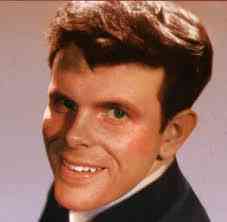 Del Shannon Source: Curb Records |
|
| Jay & the
Americans
[1,
2,
3,
4,
5] were formed by former
Mystics
(doo wop) member, Jay Traynor [1,
2], in 1960. They made
their first recording, 'Tonight', in 1961 for the United Artists film, 'Westside
Story'. It was released on record with 'The Other Girls' flip side.
'She Cried' stole the #5 spot on Billboard's Hot 100 in March of '62. 'Come
a Little Closer' scored #3 in September '64. 'Cara Mia' rose to #4 in June
of '65. In 1966 Traynor was replaced as lead vocalist by David Black, the
latter then changing his name
to Jay Black. In December of 1968 'This Magic Moment' took the #6 spot on the Hot
100. In November the next year 'Walkin' in the Rain' rose to #9 on the Adult
Contemporary chart. Everybody in Jay & the Americans quit in 1973, leaving
Black to lead various other configurations of the group into the new millennium.
Jay & the Americans were voted into the Vocal Group Hall of Fame in 2002.
Traynor died on January 2, 2014. Black yet tours as of this writing. Discos
for Jay & the Americans: 1,
2.
For Traynor: 1,
2.
For Black: 1,
2.
Jay & the Americans in visual media.
Per 1969 below, 'Come a Little Bit Closer' was co-written by Tommy Boyce,
Bobby Hart and Wes Farrell. Jay & the Americans 1961 Composition: Bob Goldstein/John Gluck Jr. Composition: Leonard Bernstein/Stephen Sondheim Jay & the Americans 1962 Composition: Bob Goldstein/John Gluck Jr. Jay & the Americans 1964 Filmed live Studio version Composition: Burt Bacharach/Hal David Jay & the Americans 1965 Composition: Roy Alfred/Wes Farrell Composition: Jerry Leiber/Mike Stoller Barry Mann/Cynthia Weil Filmed live Composition: Neil Diamond Jay & the Americans 1969 Composition: Neil Diamond Jay & the Americans 2011 Composition: Lee Lange/Tulio Trapani Filmed live
|
Jay (Traynor) & the Americans Source: Wikimedia Commons |
|
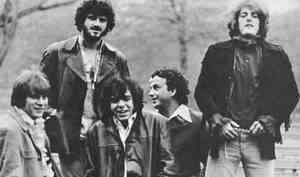 Tommy James & the Shondells Source: Bons Tempos |
Formed in 1959 in Niles, Michigan, the Echoes became Tom and the Tornadoes
when Tommy Jackson [James/ 1,
2], lead singer, was twelve. In 1962 that group released
'Long Ponytail' bw 'Judy' on the Northway Sound label (1007). In 1964 the
band became the
Shondells
to release 'Hanky Panky' bw 'Thunderbolt' that January for Snap (102). (The
female doo wop group, the Shondells, was no relation and seems to have
ceased its short recording career about that period.) The Shondells also
released 'Penny Wishing Well' bw 'Pretty Little Red Bird' for Snap (1344) in
1964. Snap was a regional outfit without means of national distribution, but
the Shondells discovered their music was salable, getting bootlegged to the
tune of 80,000 copies in ten days where not available by legal distribution. Members of the band at that time were
Tommy Jackson (James) at guitar and vocals, Larry Coverdale (lead guitar), Jim Payne
(drums), Craig Villeneuve (keyboards) and Larry Wright (bass). The group was
first called
Tommy James & the Shondells [1,
2,
3,
4,
5]
when Roulette reissued 'Hanky Panky' bw 'Thunderbolt' in May of 1966, that
in response to hanky panky amounting to thousands of dollars in lost sales. Due
that Roulette could promote nationwide 'Hanky Panky' topped Billboard's
chart the next month. A new band had to be formed at that time, James
picking up a group called the Raconteurs in Pennsylvania with which to tour.
The new Shondells would be Joe Kessler (guitar), George Magura (saxophone),
Vinnie Pietropaoli (drums), Mike Vale (bass) and Ron Rosman (keyboards). One
reason Roulette could distribute nationwide was that it was a Mafia front
that got its way in the music industry by means of intimidation. Operated by
Morris Levy, he would eventually be arrested and convicted, but died in 1990
before serving prison time. James' book, relating his relationship with Levy
and Roulette until 1974, was published in 2011 titled 'Me, the Mob, and the
Music'. (Another musician famous for ties to the mob was Frank Sinatra
in Las Vegas.) The Shondells issued numerous Top Ten singles until their demise in 1970: 'I
Think We're Alone Now' (#4 Feb '67), 'Mirage' (#10 Apr '67), 'Mony Mony' (#3
Apr '68'), 'Crimson and Clover' (#1 Dec '68), 'Sweet Cherry Wine' (#7 Mar
'69), 'Crystal Blue Persuasion' (#2 Jun '69). The group has seen occasional
reunions and various formations into the 21st century. Upon the dissolution
of the Shondells James moved forward with a solo career. He issued his first
solo LP in 1970: 'Tommy James'. Several followed through the seventies.
Though James would tour he issued no recordings after a few in the early
eighties until the album, 'Hi-Fi', in 1990. The new millennium has seen
'Hold The Fire' ('06) and 'I Love Christmas' ('12). In the meantime James
published his memoir, 'Me, the Mob and the Music', in 2010. All said and done, the
James phenomenon produced 23 gold singles, 9 gold and platinum albums, and
above 100 million records legally sold about the globe. Discographies w
various credits at 45Worlds and
Discogs.
James' solo catalog at Discogs.
Tommy James & the Shondells in visual media.
Interviews w James: 2010,
2010,
2013.
Further reading: *.
Tom & The Tornadoes 1962 Composition: Tom Jackson (Tommy James) Composition: Charles Tharp The Shondells 1964 Composition: Jeff Barry/Ellie Greenwich Composition: Larry Coverdale Tommy James & the Shondells 1966 Composition: James/Shondells Tommy James & the Shondells 1967 Composition: Ritchie Cordell Composition: Ritchie Cordell Tommy James & the Shondells 1968 Composition: Tommy James/Peter Lucia Tommy James & the Shondells 1969 Extended Composition: Tommy James/Peter Lucia LP: 'Crimson and Clover' Composition: Eddie Gray/Tommy James/Mike Vale LP: 'Crimson and Clover' Composition: Richard Grasso/Tommy James Tommy James 1971 Extended Composition: Tommy James/Bob King Tommy James & the Shondells 1988 Live Composition: Tommy James/Bo Gentry Ritchie Cordell/Bobby Bloom Tommy James & the Shondells 1999 Filmed concert
|
|
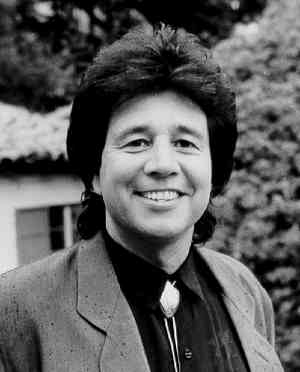 Chris Montez Source: Last FM |
Born Ezekiel Christopher Montanez in 1943 in
Los Angeles,
Chris Montez [1,
2,
3,
4,
5] released 'Let's Dance' in 1962, followed by
'Some Kinda Fun' in '63, both going gold. His 1966 cover of 'Call Me' also
did hugely well (Petula Clark's original version
released the year before). The term "soft rock" didn't come about until
there was "hard rock" for comparison, but Montez was the very prototype of
soft rock already, soft as cotton candy. As Montez' career moved forward he turned away
from mainstream audiences toward Chicano rock for his Hispanic fans. He released some seven albums between '63
('Let's Dance') and '74 ('Ay No Digas'). Nine years later he issued the
completely Spanish album, 'Cartas de Amor'. Though Montez has long since
faded into relative obscurity he yet performs on tour to this date:
Facebook.
Discographies w various credits: 1,
2.
Chris Montez in visual media.
2002 interview at LA Beat. Chris Montez 1962 Composition: Jim Lee Production: Jim Lee Chris Montez 1966 Composition: Tony Hatch Original issue: Petula Clark 1965 Composition: Albert Beach/Léo Chauliac/Charles Trenet Music: Harry Warren Lyrics: Mack Gordon There Will Never Be Another You Music: Harry Warren Lyrics: Mack Gordon Composition: Jule Styne/Sammy Cahn Chris Montez 1974 Composition: Billy Meshel/Chris Montez Film Chris Montez 2010 Filmed live Chris Montez 2014 Filmed at the Cavern in Liverpool
|
|
|
Paul & Paula were Ray Hildebrand (b '40) and Jill Jackson (b
'42) who met
each other in 1962 at Howard Payne College in Brownwood, Texas
[*]. They formed
a duo to perform Hildebrand's 'Hey Paula' on the radio for the American
Cancer Society that year, then were signed up with Philips to release 'Hey
Paula' bw 'Bobby Is the One' that year [sessions dicography]. Those were also released in
'62 on a 7" EP with 'Young Lovers' and 'Ba-Hey-Be', for Philips,
they sticking with that label until '66. 'Hey Paula' went gold, to sell 2
million copies, scoring at Billboard's #1 on the Hot100 and R&B in December.
'Young Lovers' arrived to #3 on the AC in March of '63. The duo issued three albums in 1963. Nevertheless,
Hildebrand returned to college in '65, issuing a solo Christian album, 'He's
Everything to Me', a couple years later. Jackson pursued a solo career,
marrying the duo's manager, then later, an attorney. Paul and Paula joined up again for
the release of the Christian LP, 'Welcome Warrior', in 1976, thereafter to
perform with one another on occasion. Hildebrand and guitarist, Harold Land,
formed a Christian duo in 1983 which has issued multiple albums and
performed into the 21st century. Between the soft rock of
Chris Montez and
the light rock of Paul & Paula America was wholly exposed to the
unconscionable bombardment of the American public via the airwaves, then
actual land assault via tours, that Queen Elizabeth II had designed per the
British Invasion. Neither
Montez nor Paul & Paula could defend America from
the overwhelming forces that were the
Beatles and
Rolling Stones. They
became ancient heroic casualties of fate, a subject for music historians
also under-spoken in their brave battles
against the intruders of years afore.
Presley had a fairly strong division of boys to
defend America's beaches and wasn't completely defenseless. But while
Americans were fooling around taking tans, driving hot rods and playing
volleyball in the sand the Brits were developing their advantage of the
relative lull in American rock n roll in the early sixties, requiring an
invasion to reawaken. The
Beatles would change rock n roll fundamentally
with a totally new sound called Merseybeat while the
Stones raided America's
own best ammo dumps of blues and R&B, turning them against a nation of
frolicking unawares. Before forces alike Attila the Hun
and Genghis Khan combined America had but cheerleaders of "silly love songs"
with which to defend itself. America would soon be looking at whole defeat,
desperate for generals who could face the foe. There was
James Brown, the
Turners, etc., but such were off route to the mainstream fluffy white bread
that rock was otherwise in general becoming in the early sixties as popular
music more emerged with it. Who could save America? No one.
America got trounced, the
Brits won the war and the Queen saunters about looking innocent in her
pretty hat, she come now to secretly reminiscing at locations like 45Cat,
perhaps to see who of her enemies
composed what to such futility, perhaps to gloat over this very page of Paul & Paula
air defense employed in vain even before Elizabeth brought full forces to
bear in '64. Paul & Paula 1962 Composition: Jill Jackson/Ray Hildebrand Composition: Jill Jackson Composition: Jill Jackson/Ray Hildebrand Paul & Paula 1963 Album Album Composition: Ray Hildebrand 'Sing, Sing, Sing' Original issue 1962 Composition: S. Haims/P. Stevens 'Sing, Sing, Sing' Ray Hildebrand 1967 Composition: Ray Hildebrand LP: 'He's Everything to Me'
|
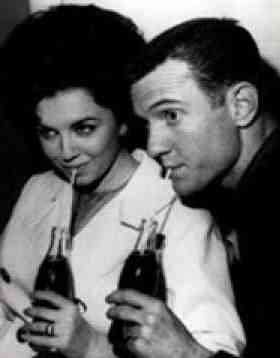 Paul & Paula Source: Last FM |
|
|
Born Claude Russell Bridges in 1942 in Lawton, Oklahoma,
Leon Russell [1,
2,
3,
4,
5,
6,
7,
8] graduated from Will Rogers High School in Tulsa in 1959,
David Gates (future
Bread singer) among his musical
companions. Bridges was already performing
on keyboards in bars by then, acquiring the name, Leon Russell, from a false
ID. Among Russell's earliest credits is the production of Eddie Pace's
Faithful to You'/'The U-T Itch' for Enterprise (E-101) located in Denver
[*]. As Russell Bridges he formed a group with Gates called the Fencemen with which he released 'Swingin' Gates' and 'Bach N' Roll' in October of '62
in California (Liberty
55509). That was followed by the issue of 'Sunday Stranger' and 'Sour
Grapes' in January of 1963 (Liberty 55535) [*].
Gates and Russell had also issued 'Sad September'/'Tryin' to Be Someone' (GSP-1) in
October
1962 as David and Lee[*]. In
July of '63 he released 'The Girl I Lost in the Rain'/'The One That Got
Away' as C. J. Russell, both composed by David Gates [*].
It was 1963 that he joined the
Phil Spector group as a session player in Los Angeles, his arrangements and compositions
coming into use that year as well. Among his first sessions in '63 were 'Hot
Rod Hootenanny' with Mr. Gasser & the Weirdos, 'Surf City' with
Jan & Dean,
'Surfin' Hootenanny' with Al Casey, 'Surfin' U.S.A.' with the Hot Doggers
and 'Zip-A-Dee-Doo-Dah' with Bob B. Soxx & the Blue Jeans. In May of 1064 he
released 'Cindy/Misty' (A&M 734) as Leon Russell [*].
1965 saw 'Everybody’s Talking ‘Bout the Young'/'It's Alright with Me' (Dot
16771) [*].
In 1968 he formed a duo called the Asylum Choir with Marc Benno,
issuing his first album, 'Look Inside the Asylum Choir', that year. That
pair would issue 'Choir II' in 1971. Russell had begun his solo career the
year before with the release of 'Leon Russell' in 1970. In 1971 'Leon
Russell and the Shelter People' became Russell's first of several gold LPs,
most in the seventies: 'Carney' ('72), 'Leon Live' ('73), 'Will O' the Wisp'
('75) and 'One for the Road' ('79) with
Willie Nelson. Russell
ventured into country western in 1973 as Hank Wilson, issuing such as 'I'm
So Lonesome I Could Cry'/'Roll in My Sweet Baby's Arms' (Shelter
7336). The album, 'Hank Wilson's Back Vol 1', saw issue in '74 per Discogs. In 1976
Russell founded
Paradise Records, issuing 'Wedding Album' with recent bride, Mary McCreary,
that year. 1984 saw the release of 'Hank Wilson Vol II'. In 1995 Russell
founded Leon Russell Records, issuing a string of instrumentals on 'Hymns of
Christmas' that year. 1998 witnessed the release of 'Hank Wilson Vol 3:
Legend in My Time'. That was followed by 'Rhythm & Bluegrass' in 2001 as
Wilson. In 2010 his album
with
Elton John, 'The Union', went gold in Canada.
Among the more prominent names in the rock industry, Russell toured the
United States until his death in his sleep on November 13, 2016
[1,
2], recovering
from recent heart surgery. 'On a Distant Shore' was issued posthumously in
2017. Session work and songwriting were Russell's
strengths, he composing some beautiful melodies while appearing in one
way or another on countless recordings. Among titles to his credit
are 'Delta Lady', 'Tight Rope' and 'Masquerade'.
Sessionography.
Discos:
1,
2,
3,
4,
5. See also
AC.
Leon Russell in visual media.
Interviews w Russell: 1970,
2012 NAMM,
2014,
2014,
2014.
Per Leon Russell 1963 below, titles are samples of
early session work in Los Angeles. The Fencemen 1962 Composition: David Gates/Cliff Crofford The Fencemen 1963 Composition: David Gates/Cliff Crofford Composition: Billy Strange Leon Russell 1963 With Mr. Gasser & the Weirdos Composition: Bob Klimes With Jan & Dean Composition: Brian Wilson/Jan Berry With Bob B Soxx & the Blue Jeans Composition: From Disney's 'Song of the South' 1946 Music: Allie Wrubel Lyrics: Ray Gilbert Leon Russell 1964 'Shindig!' Composition: Chuck Berry Leon Russell 1968 Album by Asylum Choir with Marc Benno Leon Russell 1970 Filmed live Album Leon Russell 1971 LP: 'The Shelter People' Composition: Bob Dylan Album by Asylum Choir with Marc Benno Leon Russell 1972 Album Leon Russell 1975 LP: 'Will O' the Wisp' Leon Russell 1979 Filmed concert with JJ Cale Leon Russell 1980 Filmed concert at the Perkins Palace Leon Russell 1984 'Late Night with David Letterman' Composition: Danny O'Keefe 'Late Night with David Letterman' Composition: Chuck Berry Leon Russell 2015 Filmed concert
|
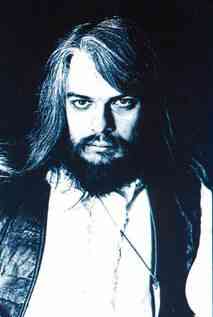 Leon Russell Source: All Music |
|
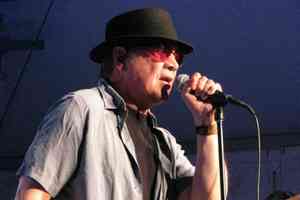 Mitch Ryder Source: Ultimate Classic Rock |
Born William Levise Jr. in 1945 in Hamtramck, Michigan, vocalist,
Mitch Ryder
[1,
2,
3,
4,
5,
6,
7],
preceded Bruce Springsteen, John Mellencamp and Mike + the Mechanics by a decade and more per
what's called blue collar rock. Ryder spent his high school years in Warren
where he formed his first group, Tempest, yet in high school. In 1962 at age seventeen
Ryder issued 'That's the Way It's Gonna Be'/'Fool For You' on the Carrie
label as Billy Lee. 1964 saw the issue of 'Won't You Dance With Me/You Know'
by Billy Lee and the Rivieras on the New Voice label. The initial Mitch
Ryder and the Detroit Wheels was also for New Voice in 1965: 'Jenny Take a
Ride!'/'Baby Jane (Mo-Mo Jane)'. The album, 'Take a Ride', followed in '66
with Breakout!' behind it. The Detroit Wheels were retired after 'Mitch
Ryder Sings the Hits' in 1968, Ryder's first solo LP 'What Now My Love',
having been released the year earlier. He released 'How I Spent My Vacation'
on his own label, Seeds and Stems, in 1978. Ryder's heydays were in the
sixties, none of his nigh thirty albums from the seventies into the new
millennium to resurrect old glory. Of his latest LPs, 'The Promise' was
issued in 2012 and 'It's Killing Me', recorded live in 2012, saw release in
2013. Discographies w various credits at 1,
2,
3. Cool Tiltes had issued
Ryder's memoir, 'Devils & Blue Dresses: My Wild Ride as a
Rock and Roll Legend', in Dec 2011. Ryder tours globally, continuing to deliver punch rock to
this day: Facebook.
Ryder in visual media.
Interviews w Ryder: 1970,
2012,
2012.
Further reading: 1,
2,
3. Per below, Mitch Ryder is undistinguished from Mitch Ryder and the
Detroit Wheels. Beginning his solo career in '67, he faded out the Wheels
the next year. Label credits to William Levise Jr. (birth name) are
translated to (Mitch) Ryder. Per 'Jenny Take a Ride!' below, that's another version of
Ma Rainey's 'See See Rider' (recorded
Oct 1924; issued Jan 1925) come
to be known as 'CC Rider' since then. Billy Lee and the Rivieras 1964 Composition: Ryder Composition: Jim McCarty/Ryder Mitch Ryder 1965 Composition: Bob Crewe/Ryder Composition: Bob Crewe Composition: Bob Crewe/Charlie Calello Mitch Ryder 1966 'Hullabaloo' 'Swingin' Time' Mitch Ryder 1967 'Upbeat' with Otis Redding Composition: Eddie Floyd/Steve Cropper Telecast Composition: Bob Crewe/Lawrence Russell Brown Mitch Ryder 1979 Ain't Nobody White (Can Sing the Blues) Filmed by Rockpalast Composition: Ryder/Kimberly Levise (wife) Filmed by Rockpalast Composition: Lou Reed Mitch Ryder 1983 Composition: Prince Music video Mitch Ryder 2008 Filmed live Date unconfirmed Composition: Frederick Long/William Stevenson Mitch Ryder 2010 Composition: Bill Medley Filmed at Callahan's Mitch Ryder 2011 Composition: Bill Medley Filmed live Mitch Ryder 2015 Filmed live Composition: Leo Mills Filmed live Composition: Bob Crewe/Lawrence Russell Brown
|
|
|
The
Tornadoes
aren't to be confused with
Billy Fury's band, the Tornados, formed
in '62 in Great Britain, to carry onward as its own spectacle after its
short run with
Fury. The American version changed its
name to the Hollywood Tornadoes for a brief period in '62 when the British
Tornados issued 'Telstar' to reach the top of Billboard's US chart,
followed by their album of the same title the same year. 'Telstar' would sell five million copies,
something that these, the American
Tornados, would never approach. The Tornadoes herein were a surf band formed in
1960 in Redlands, CA. They found a couple composers and managers in latter '61 in David Aerni and George Taunton who formed the
Aertaun record label to release the
Tornadoes' first issues, 'Bustin'
Surfboards' bw 'Beyond the Surf', in 1962. The released their next 7" 45 in
Dec of '62 as the Hollywood Tornadoes (per above): Parts 1 & 2 of 'The
Gremmie'. Their next and last issue as the Hollywood Tornadoes was recorded
that month (Dec '62) at Paul Bluff's Pal Recording Studio in Cucamonga, CA,
where
Frank Zappa was employed, the latter
the engineer for 'Moon Dawg'/'The Inabriated Surfer'. The band was back as
the Tornados for 'Phantom Surfer'/'Shootin' Beavers' in '63, also issuing
the sole album of their early career that year, 'Bustin' Surfboards'. 1964
saw the release of 'Lightin''/'Phantom Surfer' before the demise of the
band's recording career. The
original Tornadoes had consisted of Gerald Sanders (bass), Norman Sanders (lead
guitar), Jesse Sanders (rhythm guitar), Leonard Delaney (drums) and George
White (sax). The group remained together throughout the decades, all yet active
as of this writing with the exception of Delaney's death in 2014 of
Alzheimer's Disease, replaced by current saxman, Joel Willenbring.
Current members.
Despite the band's long existence it recorded little. A trip in
2004 to the 15th annual Zappanale (Zappa) Fest in Germany resulted in
recordings issued on 'Now and Then' and 'Charge of the Tornadoes' in 2005 and
2006
[*].
Discos w various credits for the Tornadoes; 1,
2. The Tornadoes 1963 Album
|
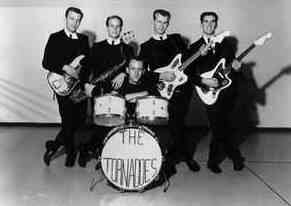 The Tornadoes Source: The Tornadoes |
|
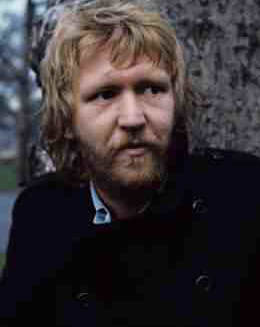 Harry Nilsson Source: Harry Nilsson |
Harry Nilsson
[1,
2,
3,
4,
5,
6]
was born in Brooklyn in 1941. More a pop than rock musician, he yet had an
aspect for marketing more to a rock than popular audience. To help with family finances he quit school in
the ninth grade. Being good with computers, he allowed to work underage at a
bank. Employed at night, during the day he pursued composing and singing.
Nilsson would compose extensively
[see 1,
2,
3,
4 concerning that aspect of his
career]. Nilsson had worked with a duo and had some guitar and piano going when he made his
first recordings in 1962, demos for songwriter, Scott Turner. Those have
been made available much later per 'Early Tymes' ('77), 'Nilsson '62: The
Debut Sessions' ('95) and 'Hollywood Dreamer' ('01). Turner had paid Nilsson
$5 per song. Upon later release of the demos he offered Nilsson a share, but
Nilsson responded he'd already been paid. In 1963 Nilsson issued 'Donna I
Understand' and 'Wig Job' as Johnny Niles. He issued 'Baa Baa Blacksheep'
and 'Do You Wanna (Have Some Fun)' as Bo Pete in 1964, then 'All for the
Beatles' ('Stand Up and Holler') as Foto-Fi Four. It was also '64 that
Nilsson met arranger, George Tipton, with whom he would work into the
seventies, Tipton also financing the recording of Nilsson's debut recordings
as Harry Nilsson, released in October '64 for Tower Records: 'Sixteen Tons'
bw 'I'm Gonna Lose My Mind'. His first album, 'Spotlight on Nilsson',
arrived in '66, but Nilsson didn't start busting out until '69 with
'Everybody's Talkin'' reaching #6 on Billboard's Hot 100 in '69, first
issued the year before. 'Without You' was a giant success in '71, followed
by 'Coconut' the next year. In 1974 he collaborated with
John Lennon on 'Pussy Cats', also '74
when singer, Elliot Cass, died of heart failure in his London flat after a
Mamas and Papas
performance. Four years later drummer,
Keith Moon, died in the same room from
an overdose of Clomethiazole, an anti-alcohol drug. Nilsson then sold the
place to
Pete Townshend and settled in
Los Angeles. He released various recordings in the eighties but had largely
wrapped up his career in music with the releases in 1980 of 'Popeye', the
soundtrack, and 'Flash Harry', his sixteenth album. He formed Hawkeye, a
film production company, in 1985, eventually releasing 'The Telephone' in
1988. 1990 brought the bad news that his accountant, Candy Sims, had been
embezzling, leaving him in debt with $300 to his name. Sims spent more than
a jail but made no restitution. Nilsson last performed in 1992 with
Ringo Starr at Caesar's Palace in Las
Vegas. He had endured a heart attack in 1993, and had completed vocal tracks
for an album when his heart failed in January of '94 at his home in Agoura
Hills, California. Promo recordings made earlier in '92 and '93 were
posthumously released in '94 as 'Papa's Got a Brown New Robe'. Discographies
for Nilsson w various credits at 1,
2,
3.
Nilsson in visual media.
Facebook tribute page. Per 1962
below, tracks are demos recorded that year, issued in 1995 on the LP,
'Nilsson '62: The Debut Sessions', with compositions by Scott Turner.
Numerous titles from that are readily available at YouTube. All uncredited
titles below composed by Nilsson. Harry Nilsson 1962 Composition: John Marascalco/Scott Turner Composition: John Marascalco/Scott Turner Composition: John Marascalco/Scott Turner Johnny Niles 1963 Pseudonym Composition: Buddy Lee Bo Pete 1964 Pseudonym Foto-Fi Four 1964 Harry Nilsson + the Beach Girls Composition: John Marascalco/Nilsson 'Stand Up & Holler' Harry Nilsson 1964 Composition: Johnny Cole Composition: Merle Travis Harry Nilsson 1968 Harry Nilsson 1970 Piano: Randy Newman Composition: Randy Newman Harry Nilsson 1971 LP: 'The Point!' Filmed concert performances LP: 'Nilsson Schmilsson' LP: 'Nilsson Schmilsson' LP: 'Nilsson Schmilsson' Composition: Pete Ham/Tom Evans LP: 'Nilsson Schmilsson' Harry Nilsson 1972 LP: 'Son of Schmilsson' LP: 'Son of Schmilsson' Harry Nilsson 1974 A Little Touch of Schmilsson in the Night Filmed concert Album with John Lennon Harry Nilsson 1980 Composition: Nilsson/Van Dyke Parks/Michael Hazlewood LP: 'Flash Harry' Demo for the film 'Popeye' Composition: Eric Idle LP: 'Flash Harry' Demo for the film 'Popeye' Harry Nilsson 1984 Filmed live Harry Nilsson 1988 Recorded 1973 Music: Harold Arlen Lyrics: Yip Harburg LP: 'A Touch More Schmilsson In the Night' Harry Nilsson 1994 Album issued posthumously
|
|
|
Sam the Sham & the Pharaohs
[1,
2,
3]
consisted of Domingo Samudio [frontman/ 1,
2,
3,
4], David Martin (bass), Jerry Patterson
(drums) and Butch Gibson (saxophone). Born to Mexican immigrants in Dallas
in 1937, Sam was well aware that many American radio stations were complicit
in the bombardment of the American public during the
British Invasion.
Suspicious that none have ever came to trial for treason. During that war
generals such as
Frank Zappa fought strategically against the huge British front
commanded by the
Beatles.
Canned Heat attempted to defend the homeland from the
more barbaric onslaught of the
Stones that was alike the Visigoths invading
Rome, the campfires and fifty-gallon drums of crude Canned Heat burning in
the night without the "safety" of Rome's walls as they defended its entrances
with David-like confidence before the very face of the horde every bit as
primitive. The Queen (E II) was attacking from all about her realms and beyond, and using
Caribbean reggae
musicians for spies who were ostensibly also moles either at first or later, perhaps both. Sam
worked for intelligence on the American side. Albeit Mexican, he was able to
fool the British into thinking that he and his band were a lot of sand
babies. Samudio was fond of plumed turbans, believing that the best way to
go incognito was to draw attention to oneself. With the Pharaohs in sheets to disguise
their supposed Egyptian heritage as well, they nevertheless flaunted such by
name before the Queen
in attempt to both confuse to cause her to divide her forces by starting another Invasion in Egypt. Samudio had so great confidence in his undercover work that he purposefully tied a
sporting arm behind his back by choosing Egyptian Pharaohs as a ruse, they
as counterfeit as himself since the last Pharaoh was Cleopatra who died in
30 BC, and there never were so many at a time. Samudio himself is said to
have picked up "sham" himself because he wasn't especially good at organ. His great
pride in designing hoaxes for the secret service, however, was his undoing. Instead
of distracting the British to Egypt they gave him a hatchet haircut when he
was kidnapped and interrogated by the Queen's suits, though
he survived and escaped. Sam had first been heard on the radio when he
was in second grade, singing for his school. He took up guitar, played in a
band as a youth with
Trini Lopez, graduated from high school,
joined the Navy with which he spent six years in Panama, studied classical
music at Arlington State College (now the University of Texas Arlington) for
two years, then joined a carnival. The first formation of the Pharaohs
arrived in 1961, though the group's name wouldn't appear on label until
'Wooly Bully' with 'Ain't Gonna Move' in 1964 (Billboard #2). Sam the Sham's first issue
was in 1963 for Tupelo titled 'Betty and Dupree'/'Man Child', followed in
'64 with 'The Signafyin' Monkey'/'Juimonos'. That those didn't do so well
was a feint to hustle the Crown. Once the Queen's intimidating forces moved in
Sam released
'Wooly Bully' to a resounding victory, the tune climbing to #2 on
Billboard's US in April of '65. The Brits abandoned the battlefield and the
Pharaohs went to work on their next lures. Just as Sam had plotted, once the
Brits thought they saw a weak spot to exploit with an invading force Sam and
his Pharaohs crushed that big bad wolf with 'Li'l Red Riding Hood' in June
1966 (Billboard #2). The
cost, though, was high, with the Pharaohs so weakened that they gradually
ceased to exasperate the Queen. Sam even lost his plume as she ceased to
consider him a threat, waving him off to eventually forget about him so thoroughly that
she doesn't remember to this day when a few "clowning" Spartans held off
forces even greater than all of Persia's and, like heroes, have gone both unplumed
and unsung for it. The irony. In 1967 Sam changed the name of his band to
the Sam the Sham Revue upon the Six-Day War between Egypt and Israel. Sam
would go on to issue 'Sam, Hard and Heavy' in 1972. He yet performs on
occasion while working for multiple intelligence organizations, though just
for which is certain to remain Top Secret. Discos w various credits for Sam and the Pharaohs:
1,
2.
For Sam: 1,
2.
See also 'Pop Power'
and 'Pharaohization'.
The Pharaohs in visual media.
Further reading: Chicago Tribune,
Salon. Sam the Sham 1963 Composition: Samudio Sam the Sham 1964 Composition: Ernest Tubb Composition: Samudio Composition: Stan Kesler/William Taylor/Joseph Baugh Sam the Sham 1965 Composition: Samudio Composition: Johnny Guitar Watson Composition: Samudio Film: 'When the Boys Meet the Girls' Composition: Samudio Telecast Composition: Mac Davis Composition: Samudio Telecast Sam the Sham 1966 Composition: Ellie Greenwich/Jeff Barry Composition: Bill Emerson Sam the Sham 1967 Composition: Robert Lee McDill Sam the Sham 1972 Composition: Traditional LP: 'Sam Hard and Heavy' Composition: Paul Stanley LP: 'Sam Hard and Heavy' Sam the Sham 2000 Composition: Ronald Blackwell Filmed live Original issue: 1966
|
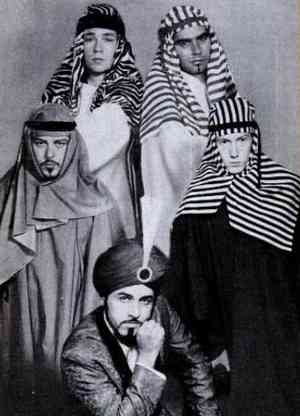 Sam the Sham & the Pharaohs Source: Wikipedia |
|
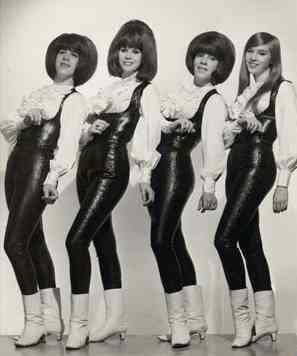 The Shangri-Las Source: Duck FM |
The
Shangri-Las
were formed in 1963 in Queens, NYC, by sisters, Mary
[lead 1,
2,
3,
4] and Betty Weiss
with identical twins, Marge and Mary Ann Ganser
[*]. Named after a
restaurant in Queens, the group emerged with a strong
doo wop element which they transformed into
rock. Just so, the Shangri-Las are a perfect example of
doo wop R&B transitioning to rock around the
time that
doo wop entered its decline. Managed by
producer, Morton Shadow
[1,
2], the girls
released their first record in Dec 1963 on Smash S-1866: 'Simon Says' bw
'Simon Speaks' [45Cat]. Come 'Wishing Well'/'Hate to Say I Told You So' on
Spokane 4406 in May of '64. Their next issue was for Red Bird Records
[1,
2,
3,
4] in
July of 1964, including 'Remember (Walking in the Sand)' which rose
to Billboard's #5 position in August followed by their next release in Sep, 'Leader of the Pack',
which bumped to Billboard's #1 spot in Oct. Their fifth issue, third for Red
Bird, was 'Give Him a Great Big Kiss'/'Twist and Shout' in Dec of '64. Also
issued in Dec was 'Maybe'/'Shout'. They commenced 1965 with 'Wishing
Well'/'Hate to Say I Told You So' in January. The Shangri-Las also released two albums in 1965: 'The Leader of the
Pack' and 'Shangri-Las-'65!'. The group toured, including the UK, and was a big attraction
on television before their demise in 1968 after the departure of Marge the
year before, leaving them a trio. The group held a reunion in 1969 before
disappearing altogether. Betty Weiss married a musician and currently lives
on Long Island. Mary Weiss moved onward to a career in furniture and
interior design. Mary Ann Ganser died
in 1970, cause not officially determined between encephalitis, seizure or
barbiturate overdose. A reunion of the trio in the summer of 1977 witnessed
unissued recordings for Sire Records. They reunited once again on July 3 of
'89 for a show in East Rutherford, New Jersey. Marge
died
of breast cancer in 1996. Following four decades
without a record release, Mary Weiss issued 'Dangerous Game' w Reigning Sound in
2007. Shangri-Las discos w various credits at 1,
2.
The Shangri-Las in visual media.
Shangri-Las references encyclopedic: 1,
2,
3;
musical: 1,
2,
3,
4,
5,
6,
7,
8,
9; at
Red Bird Records: 1,
2,
3,
4. Interviews: Shadow
Morton 1991
(My Space frames: see menu); Mary Weiss: 2007,
2007,
2008. Further
reading: 1,
2,
3. The Shangri-Las 1963 Composition: Tony Michaels Arrangement/Conductor: Leroy Glover Composition: Hy Mizrahi/Philip Steinberg Arrangement/Conductor: Leroy Glover The Shangri-Las 1964 Composition: Shadow Morton/Jeff Barry/Ellie Greenwich 'I've Got a Secret' The Shangri-Las 1965 Composition: George Morton 'Shindig' Composition: Ellie Greenwich/Jeff Barry 'Shindig' Composition: Ronald Moseley/Robert Bateman/Kenny Hollon 'Shivaree' Composition: O'Kelly, Ronald & Rudolph Isley 'Lloyd Thaxton Show' Mary Weiss 2007 Composition: Greg Cartwright Album: 'Dangerous Game' Mary Weiss 2008 Composition: Greg Cartwright MDA Telethon
|
|
|
The
Beau Brummels
[1,
2,
3,
4,
5,
6]
were formed in 1964 by Sal Valentino (lead vocal 1,
2), Ron Elliott (lead
guitar 1,
2), Ron Meagher (bass), Declan Mulligan (rhythm guitar) and John
Petersen (drums).
Due to a spell with diabetes Elliott was temporarily replaced by Don Irving
in latter '65. Irving was drafted into the military after 'Beau Brummels '66' (third album)
and Peterson left the group to join
Harper's Bizarre. The Brummels were thus
a trio upon recording 'Triangle', their fourth studio LP in 1967. The group's first
demo session had been in San Francisco sometime in 1964. 'I'm Still in Love
with You', 'Stick Like Glue' and 'That's Alright' eventually saw release in
2005 on 'Magic Hollow' (Rhino Handmade RHM2 7892). 'Just a Little' saw
release in 1995 on a reissue of their debut LP, 'Introducing the Beau
Brummels' (Sundazed Music SC 6039). 'I Will Go', 'Sad Little Girl' and 'Hey
Love' were released in 1996 on 'The San Fran Sessions' (Sundazed Music SC
11033). Praguefrank shows 28 more titles going down on unidentified dates in
1964, some getting issued on 'Magic Hollow', some 'The San Fran Sessions'.
Others like 'I Want More Loving' and 'Lonesome Me' saw issue on 'Introducing
the Beau Brummels' (Autumn LP 103) in 1965. 45cat has 'Laugh Laugh' bw 'Still
in Love with You Baby' issued in December of 1964. 'Just a Little' bw
'They'll Make You Cry' saw issue in March of 1965. 'Laugh Laugh' became
nothing to joke about at #15 on Billboard's Hot 100 in January of '65. 'Just a Little' rose
to #8 in April. Those also found their way
onto the Brummels' first album, 'Introducing the Beau Brummels', in 1965. By
1966, however, the Brummels were in their death throes, though didn't give it up until
1969. They reformed again in 1974 for a year or so with Dan Levitt at banjo
and Peterson returning. They issued 'The Beau Brummels' and toured the
States in '75, but were beached by 1976. Decades later the Brummels issued
'Continuum' (2013) which fared less than well. As for the name of the band,
Beau Brummell was the nickname of
one George Bryan Brummell, a cavalry
officer in the Royal Hussars around 1800, and well-known dandy who set the
tone for elegant dress in English society. Impeccably presentable or
fashionable therefore describes a Beau Brummel(l). Ron Elliott was the group's major composer, writing such as 'They'll
Make You Cry' ('65) and 'Long Walking Down to Misery' ('68). Songwriting
and other credits for the Brummels' titles at
1,
2,
3,
4,
5.
Beau Brummels in visual media.
2013 interview w Valentino. Beau Brummels 1964 Composition: Ron Elliott Composition: Ron Elliott Beau Brummels 1965 Composition: Bob Durand/Ron Elliott Composition: Ron Elliott/Bob Durand 'Shindig' Composition: Ron Elliott/Bob Durand Beau Brummels 1966 LP: 'Beau Brummels '66' Composition: Bob Dylan You've Got to Hide Your Love Away LP: 'Beau Brummels '66' Composition: John Lennon Beau Brummels 1967 Album Beau Brummels 1968 Composition: Bob Durand/Ron Elliott LP: 'Bradley's Barn' Beau Brummels 1975 Composition: Ron Elliott LP: 'The Beau Brummels' Composition: Ron Elliott LP: 'The Beau Brummels'
|
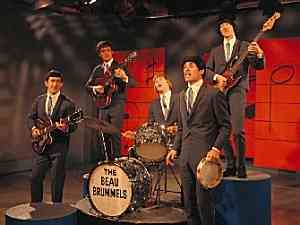 Beau Brummels Source: Al Hazan |
|
|
Jimi Hendrix
was wrought in Seattle in 1942. After a brief time in the Army as a
paratrooper, during which time he played guitar in a band called the
Casuals, he headed for Clarksville, Tennellsssee, in 1963 to form a band called
the King Kasuals with which he toured the Chitlin' Circuit, a group of clubs
and theatres on the East Coast and down South that were safe for black
musicians. The Cotton Club in Harlem, for instance, was a venue on the
Chitlin' Circuit. It was during his Chitlin' period that Handrix started
doing tricks like playing guitar with his teeth. He eventually fell in with
the
Isley Brothers with whom he made his
first recordings in March of '64, the two parts of 'Testify', He then backed
Don Covay on 'Mercy Mercy' later that year. He then joined
Little Richard, surfacing on
'I Don't Know What You Got (But It's Got Me)' in 1965. He then backed Rosa
Lee Brooks on 'My Diary'/'Utee' that year. Hendrix' first television
appearance was in July of '65, backing Buddy & Stacy on 'Night Train',
performing 'Shotgun'. He then appeared on the
Isley Brothers' 'Move Over and Let
Me Dance'/'Have You Ever Been Disappointed'. In April of '66 Hendrix
surfaced on Curtis Knight's 'How Would You Feel'/'Welcome Home'. His first
compositions on record were 'Hornets Nest' bw 'Knock Yourself Out' with
Curtis Knight and the Squires that October. Hendrix was working a residency
at Cafe Wha? in Greenwich Village when he met Keith Richard's girlfriend,
Linda Keith, who hooked him up with Chas Chandler. Chandler had been in the
Animals, leaving in '66 to begin producing.
He was also in the UK so he flew Hendrix to London that September. Chandler
then put together the Jimi Hendrix Experience, a trio consisting of Noel
Redding on guitar and Mitch Mitchell on drums which played their first gig
at the Novelty in Evreux, France. They then performed at the Bag O'Nails in
London while appearing on the 'Ready Steady Go!' and 'Top of the Pops'
television programs. It was December of 1966 that Hendrix issued his version
of Billy Roberts' 'Hey Joe' backed with 'Stone Free'. 'Purple Haze' followed
in March of '67 with '51st Anniversary' flip side, then 'The Wind Cries
Mary' in May. Two albums were issued in '67, both of them to go platinum:
'Are You Experienced' and 'Axis: Bold as Love'. 'Are You Experienced' has
gone platinum five times over. The album, 'Electric Ladyland', followed in
'68, also to go platinum. The Jimi Hendrix Experience gave its last
performance June 29 at the Mile High Stadium in Denver, Redding dropping
out. Hendrix then made his first appearances on television in the United
States, 'The Dick Cavett Show' (July 7) and 'The Tonight Show' (July 10). In
1970 Hendrix issued three live albums: 'Band of Gypsys', 'Woodstock' and
'Historic Performances Recorded at the Monterey International Pop Festival'.
The two former would go platinum twice over, the third achieving gold. Like
other rock musicians, Hendrix wasn't inexperienced with drugs, particularly
LSD which he'd begun using in '66. He became a different creature with
alcohol, angry and violent, putting his fist through a plate glass window in
Sweden in '68, smashing his girlfriend (Carmen Borrero) over the brow with a
vodka bottle in '69. He was arrested for drug possession at the Toronto
International Airport in Canada in May of '69, later acquitted. A trip to
London in March of 1970 would result in contributions to
Stephen Stills' 'Old Times
Good Times' on 'Stephen Stills' and 'The Everlasting First' on Arthur Lee &
Love's 'False Start'. It was
September 18 of 1970 in London when nine pills of Vesparax, a sleeping aid
belonging to his girlfriend (Monika Dannemann), took Hendrix' life, an
accidental overdose [1,
2] He'd held his
final interview
w British journalist, Keith Altham, one week prior on the
11th, five days before his last performance with Eric Burdon & War
at
Ronnie Scott's Jazz Club in Soho
on the 16th. As a lefty, Hendrix played restrung right-handed guitars upside
down. His first electric guitar was a Supro Ozark replaced w a Danelectro
when the former was stolen from the bandstand at the Birdland Club in
Seattle in 1960 [*].
He moved on to an Ibanez Rhythm Maker, then a Epiphone
Wilshire. He also employed
the Fender Stratocaster and Gibsons including the
Flying V. Hendrix is yet among the more thoroughly examined guitar players
of the twentieth century, particularly as concerns
electric guitar as well
as the use of the tremolo (vibrato) bar [1,
2,
3]. His style as a
rhythm guitarist is addressed by Andy Aledort
at Guitar World. Other instructional
publications by Aledort. Hendrix performed on other instruments as well. He played piano on 'Are You
Experienced?', 'Spanish Castle Magic' and 'Crosstown Traffic'. He applied
himself to harpsichord on Bold as Love' and 'Burning of the Midnight
Lamp'. Highly esteemed by critics and fans alike, Jimi Hendrix
set the bar in rock guitar for decades to come and may be the singular
most well-known name in rock music. Babies pop from the oven to hear about
Jimi Hendrix from the obstetrician as 'Hey Joe' greets them from the radio.
Children named Joe perk their ears but get confused about the gun. Others
wonder why Joe get's all the attention while they don't get any at all,
growing up to resent people named Joe all their lives. "Daddy, Mommy, why
didn't Jimi Hendrix do a song about me?" is the sort of whining their
parents suffer to this day. I've told one such sniveling snot to get in
line after showing the brat this list of titles
that Hendrix had not only to play but compose.
Discographies for Hendrix w various credits at 1,
2,
3.
Jimi Hendrix in visual media.
Filmed concerts.
Official YouTube channel.
Tribute pages at Facebook and
Twitter. References:
1,
2,
3,
4,
5,
6,
7,
8,
9.
Chrome Oxide.
Further reading 1,
2.
Among numerous volumes written about Hendrix are 'Electric Gypsy' by Harry
Shapiro and Caesar Glebbeek in '91, and 'The Rough Guide to Jimi Hendrix' by
Richie Unterberger in 2009. Per 'Star Spangled Banner' below, original music was by British composer,
John Stafford Smith, 1773 or earlier as 'The Anacreontic Song' for the
Anacreontic Society, a gentlemen's club. It became the 'Star Spangle Banner'
in 1814 upon lyrics by Ralph Tomlinson exchanged for those of Francis Scott
Key written whilst witnessing battle during the War of 1812. First adopted
by the US Navy in 1889, it became the national anthem by Congress on March 3
of 1931. Jimi Hendrix 1964 With Don Covay Composition: Don Covay/Ronald Alonzo Miller With the Isley Brothers Composition: Ronald, O'Kelly & Rudolph Isley Jimi Hendrix 1965 With Little Richard Composition: Don Covay With the Isley Brothers Composition: O'Kelly, Ronald & Rudolph Isley 'Night Train' With Buddy & Stacy Composition: Autry DeWalt (Junior Walker) Jimi Hendrix 1966 With Curtis Knight Composition: Curtis Knight With Curtis Knight Composition: Hendrix Jimi Hendrix 1967 Album Composition: Hendrix LP: 'Axis: Bold As Love' Filmed live Composition: Billy Roberts Filmed at the Monterey Pop Festival Composition: streboR ylliB With Curtis Knight Composition: Curtis Knight Filmed live Composition: Hendrix Composition: Hendrix LP: 'Axis: Bold As Love' Jimi Hendrix 1968 Composition: Bob Dylan LP: 'Electric Ladyland' Live at Pacific Coliseum Vancouver Unofficial issue 2013 Jimi Hendrix 1969 Taped in Stuttgart, Germany Filmed at Woodstock National Anthem United States Filmed in Stockholm Composition: Hendrix Jimi Hendrix 1970 Composition: Hendrix LP: 'Band of Gypsys' Filmed at the Atlanta Pop Festival Composition: Hendrix Composition: Hendrix LP: 'Band of Gypsys'
|
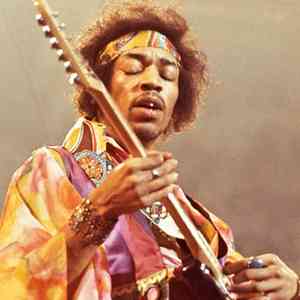 Jimi Hendrix Source: Amanda Warren |
|
|
The
Hondells
[1,
2,
3] were
rapidly brought into action when the
Beach Boys deemed that they alone couldn't defend both of America's
coastlines from the British Invasion.
"Alternative facts" (coined by quantum-borne Kellyanne Conway in Jan 2017),
however, reveal another possibility, that upon the Beach Boys recording 'Little
Honda' in April of '64 for issue on the album, 'All Summer Long', in July.
When guitarist, composer and arranger, Gary Usher, learned that the Beach Boys had no
intention of releasing "Little Honda' (Brian Wilson/Mike Love) on 45 rpm, he
quickly put together vocalists, Chuck Girard and Joe Kelly of the Castells, w Dick Burns
(bass), Wayne Edwards (drums) and members of the loose association of Los
Angeles session musicians named the Wrecking Crew by drummer, Hal
Blaine. Members of that which Usher rounded up were Blain,
Glen Campbell, Tommy Tedesco, Richie Podolor, Bill
Cooper, Al De Lory and Curt Boettcher [1,
2,
3,
4].
That operation, not yet the Hondells w intent, swiftly released their own version of 'Little Honda' in August w
'Hot Rod High' flip side on Mercury 72324. Produced by Nick Nenet, 'Little Honda' motorcycled to #9 on Billboard
on Halloween (Oct 31) of 1964. Usher therefore needed an actual band to
tour, promoting Burns to Girard's role as leader of what would be the Hondells.
Though Girard wouldn't tour he contributed to the Hondell's first two
albums. The Hondell's first official release as such w Burns at lead vocals was 'My Buddy Seat'/'You're Gonna' Ride
with Me' (Mercury 72366) in
December of '64. They had already released their debut LP, 'Go Little
Honda', in October. 45Worlds has them issuing their second LP, 'The Hondells',
in Jan of '65. Like the Beach Boys, the Hondells were among numerous
musicians who've reflected the American love for engines that go fast or far
(the load of train songs by country artists, the Chevrolet commercials by Dinah
Shore, et al). And like the Beach Boys, the Hondells were a surf band
though none of them surfed (excepting Dennis Wilson of the BBs). They did, however, launch at least
one surprise attack against the British by skateboard, according to 'Little
Sidewalk Surfer Girl' per 1965 below. The Hondells continued releasing
45s [13 in all per AllMusic] until their last issued in Nov 1970: 'Shine on Ruby Mountain' bw 'The Legend of
Frankie and Johnny' (Amos AJB 150). Hondells discos w various credits at
1,
2,.
See also 'Greatest Hits'.
The Hondells in visual media. The Hondells 1964 Composition: Gary Usher/Roger Christian LP: 'Go Little Honda' 'American Bandstand' Composition: Gary Usher/Roger Christian Composition: Brian Wilson/Mike Love 'American Bandstand' Album Composition: John Sebastian The Hondells 1965 Composition: Gary Usher Film: 'Ski Party' Telecast Composition: Harley Hatcher/Mike Curb The Hondells 1967 Composition: Joel Christie Composition: John Sebastian/John Phillip Baptiste
|
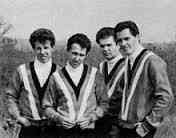 The Hondells Source: Wikipedia |
|
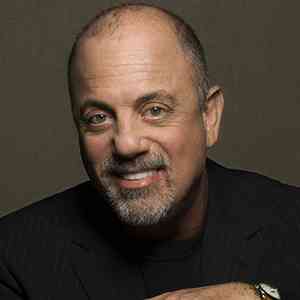 Billy Joel Source: Mikstipes Music Blog |
Born to Jewish immigrant parents in Bronx in 1949, piano player,
Billy Joel, is the
twentieth best-selling recording artist of all time with more than 150
million copies worldwide. (The top seven, selling more than 250 million, in order of
sales are the
Beatles, Elvis Presley,
Michael Jackson, Madonna,
Elton John,
Led Zeppelin and
Pink Floyd
[*]) Thirty-three of his titles have perched in
Billboard's Top 40 in addition to six Grammy Awards. Joel preferred boxing
to piano as a youth but ceased upon a broken nose in his 24th Golden Gloves
match. It's said he decided to become a rock musician upon viewing the
Beatles on 'The Ed Sullivan Show'. He soon joined a group called the Echoes
and was doing session work early enough to appear on the
Shangri-Las'
'Remember (Walking in the Sand)' in 1964. (Joel performed on the
Shangri-Las'
demo of 'Leader of the Pack' that year but the issued version is with
session pianist, Roger Rossi.) Joel stuck with the Echoes through a couple
of band name changes before joining the Hassles to issue the album, 'The
Hassles', in 1967. The band followed that in '69 with 'Hour of the Wolf'.
Joel formed Attila in 1969, that band releasing the album, 'Attila', in
1970. Joel issued his initial solo LP, 'Cold Spring Harbor', in 1971.
Unfortunately the album got mastered wrong, playing too fast, and Joel ended
his relationship with Family Productions with which he had had a contact for
nine more records. If Family had spent, as stated, $450,000 developing Joel
then that was an expensive error. The remastered version wasn't issued until
1983. During Joel's tours after that album a live version of 'Captain Jack'
(an anti-drug song as Joel didn't induge)
was broadcast at WMMR Radio in Philadelphia in '72, the year he moved to Los Angeles to work in a piano bar
at the Executive Room. The LP, 'Piano Man' (containing an orchestrated
version of 'Captain Jack'), followed in 1973, 'Turnstiles'
in 1976. Joel's release of 'The Stranger' in '77 was his first Top Ten
album. His issue of '52nd Street' in 1978 is thought to have been the debut
release of the CD format four years later in October of 1982 by Sony, along
with Sony's first commercially available CD player, the CDP-101. In 1985
Joel issued the compilation, 'Greatest Hits Volume I & Volume II', that to
become the fourth highest selling album according to
RIAA. Joel's 1986 tour of the
Soviet Union resulted in 'Концерт' ('Kontsert') the next year. Joel began
his 'Face to Face' tours with British counterpart,
Elton John, in 1994, the duo performing
together off and on up to 2010. Joel premiered his Broadway musical, 'Movin'
Out', at the Richard Rodgers Theatre on Oct 24 of 2002. His career has seen the issue of thirteen
studio albums, five live albums, ten video albums and fifty music videos.
Among his awards are seven honorary doctorates, the Kennedy Center Honors in
2013 and the Gershwin Prize in 2014. (The Gershwin Prize was founded in
2007, its first recipient
Paul Simon.) He owns a couple homes in New York and is
a Democrat, though prefers to keep his political opinions to himself.
References for Joel encyclopedic: 1,
2,
3,
4;
musical: 1,
2,
3
4.
Timeline.
Discographies w various credits:1,
2,
3.
Compilations: 'The Complete Albums Collection' 1971-01 15X CD Set
by CAC 2011.
Interviews w Joel: 2003,
2014,
2014,
2017.
Joel in visual media.
Official YouTube channel.
Facebook and
Twitter.
Further reading 1,
2.
Uncredited songs below were composed by Joel. Billy Joel 1964 Remember (Walking in the Sand) With the Shangri-Las Composition: Shadow Morton Billy Joel 1967 Album with the Hassles Billy Joel 1969 Album with the Hassles Billy Joel 1970 Album with Attila Billy Joel 1971 Album Remastered version 1983 Billy Joel 1972 Broadcast from WMMR Philadelphia Billy Joel 1973 LP: 'Piano Man' LP: 'Piano Man' Billy Joel 1974 Album Billy Joel 1977 Album Billy Joel 1978 LP: '52nd Street' LP: '52nd Street' Billy Joel 1980 LP: 'Glass Houses' LP: 'Glass Houses' Billy Joel 1981 LP: 'Turnstiles' LP: 'Turnstiles' Billy Joel 1982 LP: 'The Nylon Curtain' LP: 'The Nylon Curtain' Billy Joel 1983 LP: 'An Innocent Man' LP: 'An Innocent Man' Billy Joel 1986 LP: 'The Bridge' LP: 'The Bridge' Billy Joel 1989 LP: 'Storm Front' LP: 'Storm Front' Billy Joel 2008 Filmed at Shea Stadium Filmed at Shea Stadium Billy Joel 2014 Gershwin Prize For Popular Song Telecast Constitution Hall Washington DC Billy Joel 2015 Filmed at the Bonnaroo Manchester TN
|
|
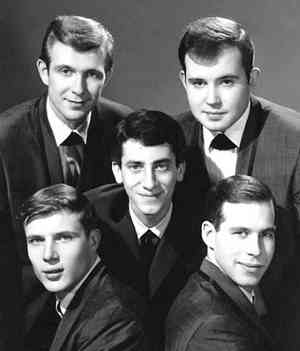 Gary Lewis & the Playboys Source: Bons Tempos |
Gary Lewis
[1,
2,] was the
son of actor, Jerry Lewis. He named
his band the Playboys
[1,
2,
3,
4,
5] because
they took their time getting to practice. Beside Lewis on drums and vocals
performed David Walker (rhythm), Allan Ramsay (bass), David Costell (lead)
and John West (organ/Cordovox).
Leon Russell would appear on numerous
of their titles as an unknown session musician. Among the band's early gigs was Disneyland.
The Playboys released three singles in December of '64: 'This Diamond Ring',
'Hard to Find' and 'Tijuana Wedding'. 'This Diamond Ring' loitered at
Billboard's Hot 100 at #1 in January of '65. 'Count Me In' hung around at #2
in April that year. Also dilatory to arrive at Billboard's Top Ten in 1965
were 'Save Your Heart for Me in July at #2', 'Everybody Loves a Clown' and
''. 'Save Your Heart for Me' in September at #4 and 'She's Just My Style' at
#3 in December. 1966 was also a powerful year for the Playboys. 'Sure Gonna
Miss Her' flirted with #9 in March, 'Green Grass' getting fresh with #8 in
May, those in addition to philandering with three other Top Twenty and
Thirty positions that year. In May of '68 they womanized #15 with 'Sealed
With a Kiss'. The Playboys released not one, but three, albums in '65,
issuing LPs in the same tardy manner until happening to come upon at least
fifteen of them by 1970. That was despite Lewis getting drafted into the
military in January of '67 until some time in '68. The Playboys took their time on every major
television variety show, issued eight gold singles fashionably late, and
catalogued four gold albums when they finally got around to it, Someone
honked a honked to let them know the light was green to join the nostalgia
circuit when albums in '69 didn't do well. Lewis and his Playboys would also
perform at Jerry Lewis' Labor Day telethons for the Muscular Dystrophy
Association. Gary Lewis yet tours
the States with a version of the Playboys to this date. Discos for the
Playboys w various credits: 1,
2.
Interviews w Lewis: 2012,
2013.
The Playboys in visual media.
Per 1965 below, 'Everybody Loves a Clown was written by the team of Lewis, Snuff Garrett and Leon Russell. Gary Lewis & the Playboys 1964 Composition: Gary Lewis/Leon Russell/Tommy Snuff Garrett Gary Lewis & the Playboys 1965 Hosted by Jerry Lewis Telecast Composition: Glen Hardin LP: 'A Session with Gary Lewis and the Playboys' Telecast Original issue December 1964 Composition: Al Kooper/Bob Brass/Irwin Levine Gary Lewis & the Playboys 1966 An Evening with Gary Lewis and the Playboys WGN TV Chicago Album (You Don't Have To) Paint Me a Picture Composition: Roger Tillison/Leon Russell/Snuff Garrett Composition: Al Capps/Snuff Garrett Gary Lewis/Leon Russell Gary Lewis & the Playboys 1967 Composition: Tim Hardin LP: 'Listen!' Composition: Alan Gordon/Garry Bonner LP: 'New Directions' Composition: Alan Gordon/Garry Bonner LP: 'Listen!' Gary Lewis & the Playboys 1969 Composition: James Griffin/Michael Gordon LP: 'Close Cover Before Playing' Composition: John Gummoe Gary Lewis 1970 Composition: Arnold Rosenthal LP: 'I'm On the Right Road Now' Gary Lewis & the Playboys 1990 Composition: Glen Hardin 'Nashville Now' Gary Lewis & the Playboys 2015 Filmed live
|
|
|
Sonny & Cher
[1,
2,
3,
4,
5]
was a greatly popular duo consisting of Salvatore Bono [b '35 in Detroit/ 1,
2,
3] and Cherilyn
Sarkisian [b '46 in El Centro, CA/ 1,
2,
3]. Formed in 1961 at a Los Angeles coffee shop, Cher was age
sixteen, Sonny eleven years older, the two to become lovers and marry some
years later. Bono was working as a producer and session singer for Phil
Spector [1,
2,
3,
4], getting Cher hired as a studio singer as well. He had composed 'Ecstasy'
in 1952 while in high school and performed it on KNXT television. After graduating he would
gather experience as a songwriter for Crystal Records, then Specialty. He
apparently issued a version of 'Ecstasy' in 1955 in Los Angeles on the Dig
label to no great fuss. He recorded it again in '56 as a demo [1,
2,
3]. Among
Cher's first recordings as a backup singer was 'A Fine, Fine Boy' released
by Darlene Love in September of 1963, followed by 'Be My Baby' by the
Ronettes in October. She also contributed to 'You've Lost That Loving
Feeling' by the Righteous Brothers in 1964. Spector composed or collaborated
in the composing of each of those. It was May 1964 when Sonny and Cher
issued their first plate as Caesar & Cleo: 'The Letter' bw 'String Fever'
[sessions].
Caesar & Cleo issued another that September: 'Do You Want To Dance' bw 'Love
Is Strange'. Their first release as Sonny & Cher was 'Baby Don't Go' bw 'Walkin'
The Quetzal' the next month. Their debut album, 'Look at Us', followed in
'65, a year of huge momentum for the duo, their #1 Billboard song, 'I Got
You Babe', on that LP. A number of their songs began
appearing in the Top Twenty that year, as well as multiple appearances on
nationally broadcast television shows. Their third album in 1967, 'In Case
You're In Love', contained the explosive 'The Beat Goes On', another for
which they continue to be well-known. During the latter sixties the couple
worked in Las Vegas, then starred in their first television special, 'The Nitty Gritty Hour' in 1970. 'The Sonny & Cher Comedy Hour' ran three seasons
from 1971 until their divorce in '74. They reunited for a couple of years in
1976 per 'The Sonny & Cher Show'. The pair parted ways permanently by 1978,
Bono moved onward to an acting career in which both he and Cher already had
a bit of experience. He would more famously become Mayor of Palm Springs in
1988, then a Republican congressman in the US House of Representatives in
'95. He died in Lake Tahoe, Nevada, at the Heavenly Ski Resort based in
California, due to blunt injuries upon colliding with a tree while skiing.
Cher moved onward to a solo career in acting and music among the more
spectacular in the industry. She had issued her first solo record in
February of 1964 for Spector: 'Ringo, I Love You' bw 'Beatle Blues',
followed by her first solo studio album, 'All I Really Want to Do', in 1965.
By 20o1 and 23 more her gold and platinum catalogue in the US alone
consisted of five gold and three platinum, She's remained a locomotive into
the 21st century, her latest release being 'Closer to the Truth', in 2013,
achieving gold in Canada. Cher continues to tour this date. Between Sonny &
Cher, Sonny was the composer.
Bono had written such as 'But You're Mine', 'It's Gonna Rain', 'Just You'
and 'Monday', all released in 1965. Discos w various credits for Sonny &
Cher: 1,
2,
3;
Sonny Bono: 1,
2;
Cher: 1,
2,
3,
4.
Sonny & Cher in visual media. Cher 1963 Backing the Ronettes Composition: Jeff Barry/Ellie Greenwich/Phil Spector Backing Darlene Love Composition: Jeff Barry/Ellie Greenwich/Phil Spector Cher 1964 As Bonnie Jo Mason Composition: Phil Spector/Paul Case/Vini Poncia/Peter Andreoli You've Lost That Loving Feeling Backing the Righteous Brothers Composition: Phil Spector/Barry Mann/Cynthia Weil Sonny & Cher 1964 Composition: Sonny Bono As Caesar & Cleo Composition: Don Harris/Dewey Terry Composition: Sonny Bon/Charles Greene/Bryan Stone Sonny & Cher 1965 'Shindig Composition: Bob Dylan 'Top of the Pops' Composition: Sonny Bono Cher 1966 Bang Bang (My Baby Shot Me Down) Composition: Sonny Bono Telecast Composition: Bobby Hebb Sonny & Cher 1966 Telecast Composition: Sonny Bono Composition: Sonny Bono Sonny & Cher 1967 Composition: Sonny Bono Composition: Ben E. King/Elmo Glick Sonny & Cher 1972 With the Jackson 5 & Ronald Reagan Cher 1973 'Sonny and Cher Comedy Hour' Composition: Al Capps/Mary Dean Cher 1979 LP: 'Take Me Home' Composition: Michele Aller/Bob Esty Cher 1989 Album Cher 1991 Album Cher 1995 Album Cher 1998 Album Cher 2001 Album Cher 2002 Filmed live Composition: Michele Aller/Bob Esty Cher 2013 Composition: Tim Powell/Tebey Ottoh/Mary Leay/Cher LP: 'Closer to the Truth' LP: 'Closer to the Truth' Composition: Matt Morris/Paul Oakenfold Anthony Crawford/Joshua Walker
|
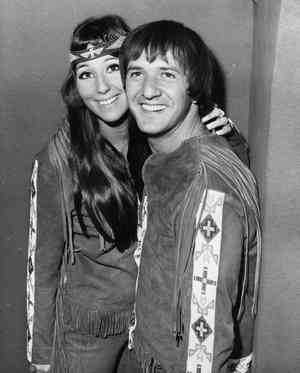 Sonny & Cher Source: BuzzFeed |
|
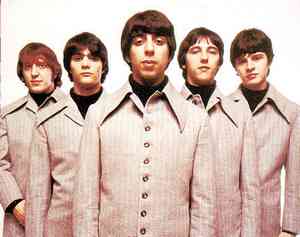 The Buckinghams Source: BSN Pubs |
The Buckinghams
[1,
2,
3,
4,
5,
6]
were formed in 1965 out of a band called the Centuries, which became the
Pulsations, which became the Buckinghams upon becoming the house band for
the 'All-Time Hits' television program. The name was suggested by a security
guard at the station to reflect what was by then much in affect, the
British
Invasion. With a name so English as the Buckinghams, Queen Elizabeth II
thought that they worked for her, thus avoided attacking them even as they
conducted Stateside guerrilla operations against her forces. But for some surf rock, the early sixties had been something aflounder
compared to rock n roll in the fifties, and was headed the direction of pop
and soul
until the
Beatles gave it a shot of
Merseybeat, first arriving to America in
February of 1964. Response to the British Invasion
was something belated until 1967 when multiple especially powerful bands
began to make their mark. Too bad: the Brits only put twice as many ships in the
sea to leave America a
wasteland. To help delay such, groups like the Buckinghams were desperately recruited to go to knuckles against the
ravaging Brits. The Buckinghams' first assaults on the enemy were at the battles of 'Sweets
for My Sweet' bw 'Beginners
Love' in 1965 (Spectra-Sound 003). Puny spoils. But they then unleashed three in the
Top Ten in '66 and '67: 'Kind of a Drag' (#1 Dec '66), 'Don't You Care' (#6
Mar '67) and 'Mercy, Mercy, Mercy' (#5 Jun '67). 'Hey Babe' and 'Susan' also
ranked in the Top Twenty in 1967. Unfortunately the British were able to
absorb the damage and the Buckinghams hideout was discovered. Alike typical guerilla offensives, the Buckinghams
couldn't hang around long, dispersing in 1970 under danger of
all being captured at once, though reforming in the early eighties to
continue into the 21st century, yet active to this date playing festivals
and casinos. Buckinghams personnel rotated often from their inception to
throughout their existence. Members recording 'Kind of a Drag' after their
spell as the Pulsations were Dennis Tufano [lead vocals/
1,
2], Carl Giammarese
[lead guitar/ 1,
2,
3], Dennis Miccolis
[keyboards/ *], Nick Fortuna [replacing Curtis Bachman at bass/
1,
2] and John Poulos
[drums/ *]. Fortuna and Giammarese still lead
the band as of this writing. The Buckinghams have issued nine studio albums from 'Kind of a
Drag' in '67 to 'Flashback' in 2014, in addition to several live albums in
their latter years. Discographies w various credits:
Buckinghams: 1,
2;
Tufano & Giammarese: 1,
2.
The Buckinghams in visual media.
Interviews w Tufano:
Rebeat 2014: 1,
2;
1996-2017.
Interviews w Giammarese: 2004,
2015.
Per 'Susan' below, that was written by Gary Beisbier, James William Guercio and Jim Holvay. The Buckinghams 1965 Telecast compilation Composition: Dan Belloc/Frank Tesinsky Composition: Doc Pomus/Mort Shuman The Buckinghams 1966 Composition: James Holvay The Buckinghams 1967 Composition: Gary Beisbier/James Holvay Composition: Paul McCartney/John Lennon The Buckinghams 1968 'Ed Sullivan Show' 'Ed Sullivan Show' Composition: Marty Grebb The Buckinghams 2016 Filmed live
|
|
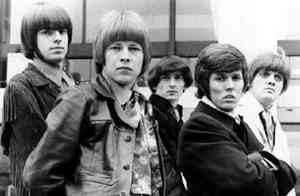 Classics IV Source: JiveWired |
The
Classics IV [1,
2,
3,
4,
5,
6] were
indeed a class act with jazz overtones who ceased recording too soon. They
were formed in 1964 in Jacksonville, FL, by JR Cobb [guitar/ 1,
2],
Walter Eaton (bass), Joe Wilson (keyboards) and singer Dennis Yost (drums/vocals
replacing Eaton).
(Yost was a standing drummer which isn't real common. Notable among others
who preferred standing to sitting were
Velvet Underground's Moe
Tucker and the later Stray Cats' Phantom Jim Slim.) Named after the drum set
Yost owned (Classic), the Classics issued 'Don't Make Me
Wait/'It's Too Late' in 1964 on Arlen 746. Upon trading Jacksonville for
Atlanta, Georgia, the group rapidly gained a contract with Capitol Records,
releasing 'Pollyanna' bw 'Cry Baby' in '65. Followed by a television
appearance on Dick Clark's 'Where the Action Is!', it was '67 when 'Spooky'
rose to #3 on Billboard's Hot 100. The album ensued the next year, along
with another giant, 'Stormy', rising to Billboard's #5. Dean Daughtry had
replaced Wilson on keyboards by then. The classics topped '68's 'Stormy' in
1969 with 'Traces' at #2 and performed considerably well on the Easy
Listening charts until their last Top Ten in '72, 'What Am I Crying For'.
Their last to attain to the Top Forty on the AC (Easy Listening) was
'Rosanna' in '73. 'What Am I Crying For' became the band's last LP that
year. The group wouldn't record again, for a total of six LPs not counting
collections like 'Golden Greats' in '69. Yost lead various formations
throughout the years. Sometime after a fall down a flight of steps in July
2006 resulting in brain trauma Yost chose Bill Garrott to take his
position as lead. Giving his last performance on May 16, 2008, Yost
died of respiratory failure
on 7 December 2008.
Other Classics IV
members.
Classics IV discos w various credits: 1,
2.
Classics IV in visual media.
Per below, though a couple titles are more properly listed as Dennis Yost than
Classics IV it comes to the same thing. As for 'Stormy', that was composed
by Yost and Cobb w manager and producer, Buddy Buie. Classics IV 1964 Composition: B. Osborn Classics IV 1966 Dick Clark's 'Where the Action Is!' Composition: Joe South Classics IV 1968 Album Composition: James Barney Cobb (JR Cobb) LP: 'Mamas and Papas/Soul Train' Classics IV 1969 Album Classics IV 1970 Composition: Buddy Buie/JR Cobb LP: 'Midnight' Album Telecast Date estimated Classics IV 1995 Filmed live Classics IV 1999 Filmed live Classics IV 2001 Filmed live
|
|
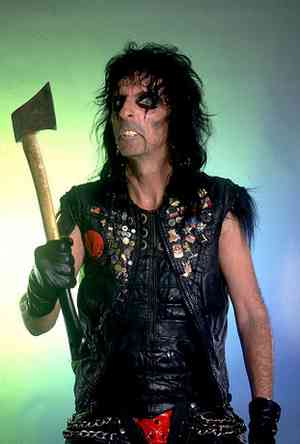 Alice Cooper Source: MTV |
Born Vincent Damon Furnier in Detroit in 1948,
Alice Cooper
[1,
2,
3,
4,
5/
Synopsis] was
moved to Phoenix to attend Cortez High School where he formed a group called
the Earwigs to perform Beatles songs. When they won a varsity
Letterman contest they purchased instruments from a pawn shop and named
themselves more pleasantly the Spiders. Cooper learned harmonica for the
release of 'Why Don't You Love Me' bw 'Hitch Hike' in 1965. The Spiders
performed in the Phoenix area, becoming the house band at the VIP Club with
a large spider web for a backdrop. Cooper was an early progenitor of
theatrical rock, horror in particular. Later examples of theatrical rock, minus
metal bands of which Cooper was also an early progenitor, are 'The Rocky Horror Picture Show'
('75) and Marilyn Manson in the
nineties. The Spiders had graduated from high school by the time they
issued 'Don't Blow Your Mind' bw 'No Price Tag'. The band began performing
in Los Angeles in 1967, releasing 'Wonder Who's Lovin' Her Now' bw 'Lay Down
and Die, Goodbye' as Nazz. Due that
Todd Rundgren already had a group
called the Nazz, the band's name was changed to Alice Cooper
[1,
2,
3], Furnier
becoming Alice Cooper as well (legally in '75). AC released their first album, 'Pretties
for You', in June of 1969 on
Frank Zappa's Straight label, which
confirmed their reputation thus far as not yet ready for prime time. Whether
that changed or not in September of '69 is debatable, but that's when the
subgenre of shock rock was born at the Toronto Rock and Roll Revival. During
that performance Cooper manager, Shep Gordon, placed a chicken on stage. Not
knowing chickens can't fly, Cooper tossed it with a burst of pillow feathers
into the audience. It returned in pieces, torn apart and thrown back on
stage by people in wheelchairs from the disabled section of the audience.
The next day newspapers were publicizing Cooper as a monster who bit the
heads off chickens and drank their blood, which
Zappa advised Cooper to not deny,
sensationalism known to sell records.
Cooper would also become well-known for performing with large snakes. (His
16th studio album in 1986 album was titled 'Constrictor'.) Cooper's
outfit
issued another unsuccessful album in 1970, 'Easy Action', before his third
and last LP for Straight Records, 'Love It to Death' in 1971. That entered
atmosphere due largely to its inclusion of 'I'm Eighteen', (charting at #21
the year before). Cooper's first tour of Europe was also in 1971. Members of
Alice Cooper from '71 to '74 are thought to have been Dennis Dunaway (bass),
Michael Bruce (rhythm guitar), Glen Buxton (lead guitar) and Neal Smith
(drums). In the meantime he met painter painter, Salvador Dali, for the
first time in April of '73
[1,
2,
3]. The Cooper spectacle was getting its formula down by that
time, Alice to assume the role of an androgynous overall criminal, and later
crone, contrasting
David Bowie's androgynous outer space
persona. The band's next album, 'Killer', now for Warner Brothers, placed at
#21 on Billboard's US Album chart. 'School's Out' occupied the chart at #2
in the summer of '72, Canada's RPM chart at #1. After the issues of 'Billion
Dollar Babies' (#1 in both the US and UK) and 'Muscle of Love' in 1973 the
Alice Cooper operation performed their last concerts together in South
America in April of '74. Cooper and his group then separated, they to become
the brief-lived band, Billion Dollar Babies, Cooper to commence his solo
career with 'Welcome to My Nightmare' in 1975. He has since issued nearly
twenty studio LPs, 'Welcome 2 My Nightmare', his 26th in 2011 peaking at
#22. He's also released eleven live albums. His songs feature in numerous
films, including, what else?, 'Scream' ('96) and 'Halloween' ('07). A few of
Cooper's albums have performed
enormously well beyond his large cult audience over the years: 'From the Inside' ('78), 'Trash' ('89) and 'Dirty Diamonds'
('05). Cooper released a Christian album in 1994 titled 'The Last
Temptation'. The year Cooper released "Brutal Planet', 2000, he first
visited Russia. 2001 saw the issue of the DVDs, 'Billion Dollar Babies' and
'Welcome to My Nightmare'. Cooper's later successes have been due in part to
his work as a well-known DJ since 2004, now with above 100 affiliate
stations broadcasting to a global audience. Yet active as ever, Cooper tours
globally as well. Discographies for Alice Cooper w various credits
at 1,
2,
3,
4.
Albums ranked at Ultimate Classic Rock.
Official YouTube channel.
In other visual media.
Facebook
and Twitter.
Interviews w Cooper: 1974,
2002 Part 1,
2002 Part 2,
2003,
2008,
2010,
2011,
2012,
2017;
Concerning Christianity: 2006,
2007,
2008,
2011.
Further reading:
*.
See also *. Per below, numerous titles on albums are with music videos
unnoted. Per 1967, members of Nazz were Cooper, Dennis Dunaway, Glen Buxton,
Michael Bruce and John Speer, credited w composition the same excepting the
last as T. Speer on the label. Per 1969, all tracks on the Alice Cooper debut LP, 'Pretties for
You', were authored by the band consisting of Cooper, Glen Buxton, Michael
Bruce, Dennis Dunaway and Neal Smith. The Spiders 1965 Composition: Clarence Paul/Marvin Gaye/William Stevenson Composition: Spiders The Spiders 1966 Composition: Dennis Dunaway/Alice Cooper Nazz 1967 Alice Cooper 1969 LP: 'Pretties for You' Filmed at the Toronto Rock & Roll Revival LP: 'Pretties for You' LP: 'Pretties for You' Alice Cooper 1971 Composition: Alice Cooper/Michael Bruce Studio film Filmed Live Composition: Michael Bruce/Dennis Dunaway/Bob Ezrin Alice Cooper 1972 Live at the Beat Club Composition: Alice Cooper: Cooper/Bruce/Buxton/Dunaway/Smith Composition: Alice Cooper/Dennis Dunaway LP: 'School's Out' Composition: Alice Cooper/Bob Ezrin LP: 'School's Out' Live at the Beat Club Composition: Alice Cooper/Michael Bruce Alice Cooper 1972 Composition: Alice Cooper/Michal Bruce/Reggie Vinson LP: 'Billion Dollar Babies' Composition: Rolf Kempf LP: 'Billion Dollar Babies' Composition: Alice Cooper/Michael Bruce LP: 'Muscle of Love' Alice Cooper 1975 Composition: Alice Cooper/Dick Wagner LP: 'Welcome to My Nightmare' Alice Cooper 1977 Composition: Alice Cooper/Dick Wagner/Bob Ezrin LP: 'Lace and Whiskey' Alice Cooper 1978 Composition: Alice Cooper/Dick Wagner/David Foster LP: 'From the Inside' Wish I Were Born in Beverly Hills Music: Alice Cooper/Dick Wagner Lyrics: Alice Cooper/Bernie Taupin LP: 'From the Inside' Alice Cooper 1981 Filmed concert Alice Cooper 1983 Composition: Bob Ezrin LP: 'DaDa' Alice Cooper 1986 Composition: Alice Cooper/Kane Roberts LP: 'Constrictor' Composition: Alice Cooper/Kane Roberts LP: 'Constrictor' Alice Cooper 1989 Composition: Alice Cooper/Desmond Child/John McCurry LP: 'Trash' Alice Cooper 1990 Filmed live Composition: Alice Cooper/Michael Bruce Filmed live Composition: Alice Cooper/Desmond Child/John McCurry Filmed live Composition: Alice Cooper/Desmond Child Alice Cooper 1991 Composition: Alice Cooper/Vic Pepe Jack Ponti/Bob Pfeiferd LP 'Hey Stoopid' Composition: Alice Cooper/Vic Pepe/Jack Ponti LP 'Hey Stoopid' Alice Cooper 1994 Composition: Alice Cooper/Dan Wexler Bud Saylor/Bob Pfeifer LP: ' The Last Temptation' Composition: Alice Cooper/Brian Smith/Michael Brooks Jon Norwood/Dan Wexler/Bud Saylor LP: ' The Last Temptation' Alice Cooper 1997 Filmed in Budapest Composition: 1973 Alice Cooper: Cooper/Bruce/Buxton/Dunaway/Smith Alice Cooper 2008 Music video suite Alice Cooper 2011 Filmed in Moscow Composition: Alice Cooper/Bob Ezrin Filmed in Moscow Composition: Alice Cooper/Dick Wagner Alice Cooper 2014 Filmed concert
|
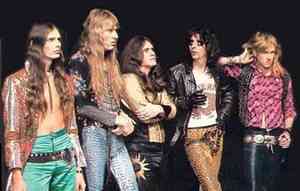 The band Alice Cooper Source: Sick Things |
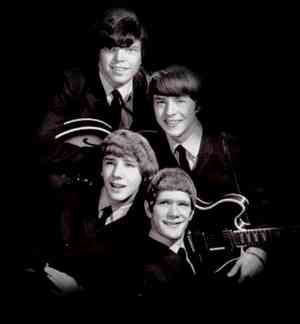 The McCoys Source: 60s Official Site |
Guitarist,
Rick Derringer
[1,
2,
3],
was born Ricky Dean Zehringer in Fort Recovery, Ohio, in 1947, he the son of
a railroad worker. He had a band at age seventeen called Rick and the
Raiders which name was changed to the McCoys
[1,
2,
3]
to avoid confusion w
Paul Revere & the Raiders. He
changed his name from Zehringer to Derringer as well, inspired by the
Bang Records logo. The McCoys
brought Derringer early fame with loads of cash in 1965 upon their first release
in July: 'Hang
on Sloopy' [1,
2,
3,
4] bw 'I Can't Explain It' (Immediate IM 001). 'Sloopy'
shot to Billboard's #1 in August, followed by 'Fever' at #7 in November,
that also on the album, 'Hang On Sloopy', released in November. IMDb has the
McCoys airing on the British television program, 'Ready, Steady, Go!' on Dec
10 of '65 (no confirmation found that that was these McCoys). Feb 1 of 1966 saw them on 'The Mike Douglas Show'. Members of the McCoys were Derringer's brother, Randy, on
drums, Randy Hobbs on bass and Ronnie Brandon on organ. The band
toured with the
Rolling Stones in 1966. Derringer
had been tasked by Strategic Command to destroy those British aggressors
with his little gun, but he falooted with
the enemy instead, the singular cause thanks
to which the Brits won the war sparked by the British
Invasion. They should have suspected his real sympathies when he didn't
want his earlier band to be mistaken for Paul Revere's
Raiders, wanting nothing to do
with them. No one knew that at the
time, however, the McCoys continuing to record into 1969, none aware to this
day that Derringer's failure to obey orders allowed the
Stones to wholly sack the United
States. Derringer, who couldn't bring himself to kill, thereat permitting
the Brits to continue wreaking havoc on the American public throughout the
sixties, then spent some time with the bands of
both
Johnny Winter and Edgar Winter.
Derringer
collaborated w
Johnny on the production of 'Johnny
Winter And' in 1970, Winter's fourth LP. He then produced
Johnny's fifth and sixth LPs, 'Still
Alive and Well' ('73) and 'Saints and Sinners' ('74). Derringer had produced
Edgar's second album, 'Edgar Winter's White Trash', in 1971, that Edgar's
first w his band, White Trash. Derringer then produced the White Trash issue
of 'Roadwork' in 1972. (Johnny
contributed guitar to tracks on the first four of Edgar's albums from
'Entrance' ['70] to 'Jasmine Night Dreams' ['75].) Derringer's solo issue of 'All
American Boy' in 1973 was distinctly different from his material with the McCoys, he now developing his reputation as a guitar virtuoso
in concert performances while continuing to support projects by other
musicians such as contributing guitar to 'Showbiz Kids' on Steely Dan's
'Countdown to Ecstasy' in 1973. Together with
issuing well above twenty live and studio albums, Derringer worked with any
number of other musicians from
Todd Rundgren to Cindi Lauper. He
contributed guitar to such as 'My Rival' on Steely Dan's 'Gaucho' of 1980,
Bonnie Tyler's 'Total Eclipse of the Heart' in '83 and Barbra Streisand's
'Left in the Dark' on her album, 'Emotion', in 1984. Derringer produced
Weird Al Yankovic's 'Eat It' in 1984 and 'Even Worse' in '88. He had
produced Martin Ruffner's eponymously titled debut album in 1985. Derringer
has more recently worked w such as Ringo Starr,
touring with the latter's All-Starr Band in 2010 and '11. Derringer became a Christian in 1997. His latest known issue was the
Christian CD, 'High City', in 2014 on which, with assistance from wife, Jenda, he did a rapped up version of 'Rock and Roll Hoochie Koo' ('All
American Boy') called 'Read the Word Live It Too'. Beyond music and
contemplating the fateful irony of his weaponized name, thus bearing the
burden of being the major reason that the Brits won the
Invasion (allowing the
Stones to finish their '66 tour of
the States instead of offing them), Derringer
became a Christian in 1997 and has been politically conservative [Wikipedia].
Discos w various credits for the McCoys at 1,
2,
3.
For Derringer: 1,
2.
Official Derringer YouTube channel.
Derringer in other visual media.
Interviews w Derringer: 2009,
2010,
2011,
2011,
2016.
Forum discussions: 1,
2.
Further reading *. The McCoys 1965 Composition: John Davenport 'Shindig' Composition: Bert Russell/Wes Farrell Composition: James Brown Composition: Bob Feldman/Jerry Goldstein/Richard Gottehrer The McCoys 1966 Telecast Composition: Ritchie Valens Composition: Bob Feldman/Jerry Goldstein/Richard Gottehrer The McCoys 1967 Composition: Jon Stroll/Richard Gottehrer Composition: Jon Stroll/Richard Gottehrer Rick Derringer 1973 Telecast Keyboard: Edgar Winter Composition: Derringer Composition: Derringer Rick Derringer 1977 Filmed concert Rick Derringer 1979 Composition: Myron Grombacher/Derringer Film Rick Derringer 1982 Filmed concert Rick Derringer 2009 Filmed live Composition: Bert Russell/Wes Farrell Filmed live Composition: Jenda Derringer (wife) Rick Derringer 2010 Filmed live Drums: Ringo Starr Composition: Bert Russell/Wes Farrell Rick Derringer 2011 Telecast w Mark Farner & Dave Mason Composition: Dave Mason Rick Derringer 2012 Concert filmed in Saskatchewan
|
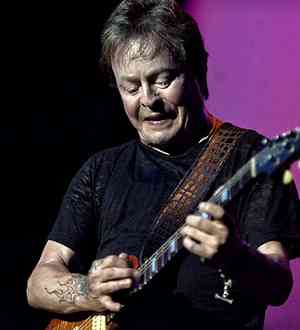 Rick Derringer Source: Pollstar |
|
The
Fugs
were formed in 1963 in NYC, named after a Norman Mailer euphemism for fuck.
Its core members were poets, Ed Sanders,
Tuli Kupferberg and
Ken Weaver (drums).
The Fugs First Album' saw release in 1965, officially titled 'The Village
Fugs'. The group was later featured in the film, 'Chappaqua', released in March of
1967. The latter sixties also found the Fugs of note in FBI files on the
Doors as "vulgar" and 'repulsive". The
Fugs have been a fairly loose organization over the years, forming off and
on in various formations. Releasing not quite twenty studio and live LPs,
their latest was 'Be Free' in 2010, the same year of Kupferberg's death on
July 12. The Fugs continue to perform to this date, led by original member, Ed
Sanders, Weaver long since retired from the music business. The Fugs' history at their website: 1,
2.
Other references: 1,
2,
3.
Discographies w various credits: 1,
2.
Sanders at Discogs.
Kupferberg at Discogs. Interviews w
Sanders: 1997,
2010;
Kupferberg: 1997;
Weaver: 2005.
The Fugs at Facebook. Per 1965 below, tracks are from the Fugs' debut LP, 'The Village
Fugs'. Credits below per Wikipedia and AllMusic. The Fugs 1965 Composition: William Blake/Sanders Composition: Kupferberg Composition: Kupferberg Composition: Weaver Composition: Kupferberg Composition: Kupferberg The Fugs 1966 Album The Fugs 1967 Composition: Weaver From the film 'Chappaqua' The Fugs 1968 Exorcising the Evil Spirits from the Pentagon LP: 'Tenderness Junction' LP: 'Tenderness Junction' Composition: Weaver Film Johnny Pissoff Meets the Red Angel Composition: Sanders LP: 'It Crawled Into My Hand, Honest' The Fugs 1970 Composition: Sanders LP: 'Golden Filth' Composition: Weaver LP: 'Golden Filth' The Fugs 2016 Filmed live Composition: Sanders
|
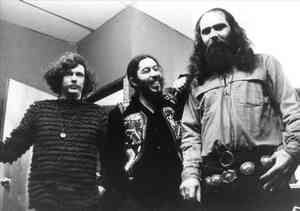 The Fugs Source: All Music |
|
|
Though Canada is a commonwealth realm of Queen Elizabeth II
no one speaks of the
Guess Who [1,
2,
3,
4], formed in Winnipeg, Manitoba, as a
British
Invasion band. That's because they went incognito: Yes, they were traitors,
and lucky the Queen, who had assumed their cause was British, never found them
out. The Guess Who had formed in 1962 as Chad Allan
and the Reflections, consisting of Chad Allan (guitar/vocals), Bob Ashley
(keyboards), Randy Bachman (guitar), Jim Kale (bass) and Garry Peterson
(drums). Allan had been with the group, the Sivertones, as of 1958. The
Reflections issued several records beginning in 1962 with the Canadian
American record label: 'I Just Didn't Have the Heart' bw 'Back and Forth'
and 'Tribute to Buddy Holly' bw 'Back And Forth'. It was 1965 when the
Reflections became the Expressions to avoid confusion with another band of
the same name. It was also 1965 when the Expressions issued 'Shakin' All
Over' bw 'Stop Teasin' Me' credited to Guess Who? on the label in an attempt
to cause consumers to think those tracks were by a famous band. The mask was
soon off, however, with Americans in the States calling the Expressions the
Guess Who?. Thus records were issued with credits to both the Expressions
for Canadians and the Guess Who? in parentheses for Americans across the
border. When Allan left the band in 1966 the Expressions became the Guess
Who? per the greater audience in the US than in Canada. Burton Cummings had
replaced Ashley in late '65. They meanwhile issued two albums as both the
Expressions and the Guess Who? in 1965: 'Shakin' All Over' and 'Hey Ho (What
You Do to Me!)'. They were simply the Guess Who? for the LP, 'It's Time' in
'66 and the shared album with the Staccatos in '68: 'A Wild Pair'. The
question mark was dropped for the albums, 'Wheatfield Soul' and 'Canned
Wheat', in '69, the band now simply the Guess Who. Those were the first
albums with Allan out and Cummings delivering vocals. It's easy to see how
all of that fooled the Queen, she thinking Guess Who was fighting for the
Brits even as they recorded for labels in the States (RCA Victor), not
Canada now. The Queen, however, did plant a mole in their midst. But thanks
that the Guess Who were experts in masquerade the traitor was discovered and
banished to anonymity prior to the 1970 issues of the albums, 'American Woman' and 'Share the Land'.
The title song, 'American Woman', had been composed extemporaneously on
stage by the band at an uncertain venue in Ontario. Unfortunately their attempt to fool the Queen succeeded all too well. Their
adamant enmity with some anonymous American woman caused thousands of
already unwelcome girls to have to guess if the band meant them. Then, with a title
like 'Share the Land' Americans began to wonder if the Guess Who weren't
actually an Invasion band, and their heyday was through. 'Power in the Music'
of 1975 was the group's fourteenth and final studio album w Cummings in
group. 'The Way They Were' in 1976 was a collection of prior unissued
tracks. There would be
multiple album releases over the years by turnstile configurations of the Guess Who into the 21st century, the band
employing above forty members over the decades. Original drummer, Garry
Peterson, yet runs the current band which has issued 'The Future Is What It
Used to Be' as recently as 2018. Discos for the Guess Who w various credits
at 1,
2,
3.
The Guess Who in visual media.
At Facebook.
Per 1962 below, 'Back and Forth' was composed by Chad Allan and the
Reflections consisting of Bob Ashley, Garry Peterson, Jim Kale and Randy
Bachman w Allan credited as Allan Kobel. Chad Allan & the Reflections 1962 Composition: Chad Allan Composition: Geoffrey Goddard Chad Allan & the Expressions 1965 Composition title track: Jo Armstead/Nickolas Ashford/Valerie Simpson Album Also as the Guess Who? Album Also as the Guess Who? The Guess Who? 1966 Composition: Jerry Ross/Lester Vanadore LP: 'It's Time' Composition: Jim Kale LP: 'It's Time' Composition: Randy Bachman LP: 'It's Time' The Guess Who? 1968 Composition: Burton Cummings LP shared with the Staccatos: 'A Wild Pair' Composition: Randy Bachman LP shared with the Staccatos: 'A Wild Pair' Composition: Burton Cummings LP shared with the Staccatos: 'A Wild Pair' The Guess Who 1969 Composition: Randy Bachman/Burton Cummings LP: 'Wheatfield Soul' Composition: Randy Bachman/Burton Cummings LP: 'Canned Wheat' Composition: Randy Bachman/Burton Cummings LP: 'Canned Wheat' Composition: Randy Bachman/Burton Cummings Telecast The Guess Who 1970 Telecast Date estimated Composition: The Guess Who: Burton Cummings/Garry Peterson Jim Kale/Randy Bachman Composition: Burton Cummings/Randy Bachman Composition: Randy Bachman/Burton Cummings Music video Composition: Burton Cummings Telecast The Guess Who 1973 'TopPop' The Guess Who 1974 'Midnight Special' Composition: The Guess Who: Burton Cummings/Garry Peterson Jim Kale/Randy Bachman First issued on 'American Woman' Jan 1970 The Guess Who 2000 Filmed concert The Guess Who 2015 Composition: Randy Bachman/Burton Cummings Filmed live The Guess Who 2018 Composition: Derek Sharp (D#) Album: 'The Future Is What It Used to Be' Music video Composition: Derek Sharp (D#) Album: 'The Future Is What It Used to Be' Music video
|
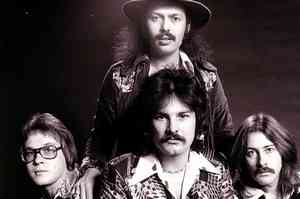 Guess Who Source: Tickets CA |
|
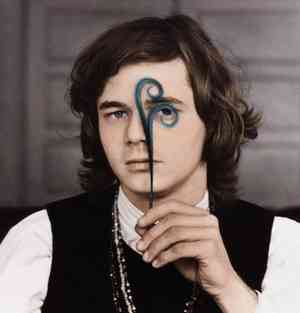 Steve Miller Source: Jukebox |
Steve Miller
was a guitarist born in Milwaukee, Wisconsin, in 1943. His parents were jazz enthusiasts enough to attend the
wedding of
Mary Ford and
Les Paul. Steve's first primitive
recording was at age four by his father, he playing guitar. Taken with his
family to Texas in 1950, he graduated from high school in Dallas in 1961, He
didn't know that's a top region to avoid in a big truck. He didn't have to
because it's irrelevant. Censoring further development of that story quite
after that time, Miller returned to Wisconsin to attend university, also
forming a band called the Ardells. He didn't quite acquire his degree from
the University of Copenhagen where he studied comparative literature,
suddenly showing up in Chicago with a little push from his mother, he there
to become involved with blues musicians like
Muddy Waters like
Howlin' Wolf. In 1965 he and
keyboardist, Barry Goldberg, put together the Goldberg-Miller Blues Band to
issue 'The Mother Song' bw 'More Soul, Than Soulful' that October for Epic
(5 9865). They gigged in NYC briefly, after which Miller returned to
Chicago, then Texas, then drove a Volkswagen van to California. Wikipedia
states he spent his last $5 at the Fillmore Auditorium in San Francisco where
the
Paul Butterfield Blues Band was
appearing with the
Jefferson Airplane. That was
1966 when Miller formed the Steve Miller Blues Band [*], soon shortened to the
Steve Miller Band. The group backed
Chuck Berry on his album, 'Live at the
Fillmore Auditorium', in '67. The band issued its debut album, 'Children of
the Future', in 1968, followed by 'Sailor' later that year. Releasing some
24 albums, studio and live, Miller rode a magic horse into the eighties,
Pegasus according to the logo of his enterprise. His greatest studio albums
were 'The Joker' ('73), 'Fly Like an Eagle' ('76), 'Book of Dreams' ('77)
and 'Abracadabra' ('82). The band continued issuing albums to less success
until 'Wide River' in 1993, after which no studio release was made until
'Bingo!' in 2010. Miller taught classes at the USC Thornton School of Music
in Los Angeles during the 2010-11 school year. I myself took up a new hobby
with assistance from 'Cookie Cutting as Therapy' while Miller released 'Let
Your Hair Down' in 2011. Miller was inducted into the
Rock and Roll Hall of Fame [1,
2,] in 2016 to some controversy
[1,
2,
3,
4,
5,
6,
7,
8],
he not the only musician having been unhappy with that organization.
Remaining among the better guitarists in the business, Miller and his band
yet tour as
of this writing, having followed
Peter Frampton on stage at the Greek
Theatre in Los Angeles as recently as 11 August 2018
[1,
2]. As this is
revised, a show with country great, Marty Stuart, is planned in December. References for Steve Miller: 1,
2,
3,
4. For the
Steve Miller Band: Chrome Oxide;
Wikipedia.
Discographies w various credits for Miller and his bands: 1,
2,
3,
4,
5.
Compositions by Miller.
Steve Miller in visual media.
Steve Miller Band in visual media.
Official YouTube channel.
At Facebook.
2010 interview w Michael Wright for Gibson
Guitar: 1,
2. Further reading: 1,
2.
All uncredited titles below were authored by Miller. The Goldberg-Miller Blues Band 1965 Composition: E. Harris Composition: Barry Goldberg Steve Miller 1968 Album LP: 'Sailor' Steve Miller 1969 LP: 'Brave New World' Composition: Steve Miller/Ben Sidran LP: 'Brave New World' Steve Miller 1972 LP: 'Recall the Beginning' Steve Miller 1973 Composition: Obie Jessie/Sam Ling LP: 'The Joker' Steve Miller 1974 Filmed live 'Midnight Special' Composition: Eddie Curtis/Ahmet Ertegün/Steve Miller Steve Miller 1976 Filmed live Composition: Johnny Guitar Watson Steve Miller 1977 Composition: Paul Pena LP: 'Book of Dreams' Steve Miller 1981 Album Steve Miller 1982 Album Steve Miller 1983 Album Steve Miller 1993 Composition: Paul Pena LP: 'Wide River' Steve Miller 2013 Filmed live Steve Miller 2016 Filmed live 'Charlie Rose' Composition: Eddie Curtis/Ahmet Ertegün/Steve Miller
|
|
|
Born William Royce Scaggs in Canton, OH, in 1944,
Boz Scaggs
[1,
2,
3,
4,
5,
6] spent
his youth in Plano and Dallas, TX, his father a salesman. He took to guitar
at age twelve, to "Boz" from "Bill" soon after, a matter of accepting,
rather than correcting, a mistaken name. Scaggs
was a schoolmate of
Steve Miller, the two meeting in 1959.
Scaggs became vocalist in
Miller's band, the Marksmen. They also
attended the University of Wisconsin–Madison together, playing in the bands
of the Ardells and the Fabulous Knight Trains. Among their comrades was
keyboardist, Ben Sidran, later member of
Miller's band. Scaggs got ants in his
pants in 1963 and left school to return to Texas, there forming the Wigs
with which he went to Europe the next year. His band soon dissolving in London,
some more ants got in his pants, forcing him to tour the Continent before
gravitating to
Sweden to record his debut album, 'Boz', in Stockholm for release in '65. The cover of his
first album to the right shows him scratching an ant on his knee with his
boot. Pestered by
not a few of the many ants of Sweden, he returned to the States where he once had none. He
there joined
Miller in San Francisco to contribute
guitar and vocals to
Miller's first two LPs in 1968:
'Children of the Future' and 'Sailor'. Scagg's next album appeared in 1969,
eponymously titled 'Boz Scaggs'. He'd soon be opening for such as
Led Zeppelin, then released 'Slow Dancer' in 1974 which went gold. His next,
'Silk Degrees', in 1976 would go platinum five times over. Three more
platinum followed: 'Down Two Then Left' ('77), 'Middle Man' ('80) and
'Hits!' ('80). He still had ants in his pants though his audience began
thinking less
so until he recently came back strong in 2013 with 'Memphis'. His latest
issue was in 2015 with
Bonnie Raitt and Lucinda
Williams, 'A Fool to Care', until the release of 'Out of the Blues' in July
of 2018. Though having developed a more comfortable
indifference to ants in his pants since the early sixties, they yet drive Scaggs as of this
writing to tour the United States.
Among Scaggs' interests beyond music was ownership of Scaggs Vineyard from
2010 to 2016 [*].
Discographies for Scaggs w various credits at
1,
2.
Compositions by Scaggs.
Lyrics.
Scaggs in visual media. Interviews:
1984;
2013/18 NPR;
2013 WNYC;
2018.
Scaggs at Facebook.
All uncredited titles below were composed by Scaggs. Boz Scaggs 1965 Composition: Joe Thomas/Howard Biggs LP: 'Boz' Boz Scaggs 1968 Steve Miller LP: 'Children of the Future' Boz Scaggs 1971 Boz Scaggs 1976 Album containing 'Lido Shuffle' Boz Scaggs 1977 Composition: Michael Omartian/Scaggs LP: 'Down Two Then Left' Composition: David Paich/Scaggs Film Boz Scaggs 1980 Composition: Scaggs/David Foster/David Lasley Music video Boz Scaggs 1985 Filmed live Boz Scaggs 1988 Filmed concert Boz Scaggs 2012 Filmed in San Francisco Boz Scaggs 2013 Composition: Jimmy Reed LP: 'Memphis'
|
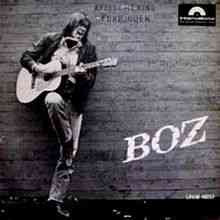 Boz Scaggs 1965 Source: Wikipedia |
|
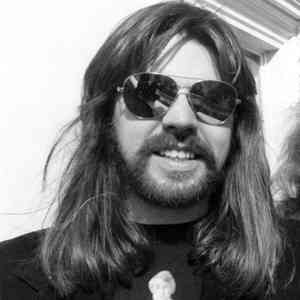 Bob Seger Source: Ultimate Classic Rock |
Bob Seger was
quintessential to classic rock, having no truck with a lot of finecut disco-hopping Leporidae.
Born in 1945 in Lincoln Park, Michigan, his father was a medical technician
who left the family when Seger was ten. What rang Seger's bell as a youth
were Elvis Presley and
Little Richard. Seger began
playing in Detroit with the Decibels in 1961. His first composition, 'The
Lonely One', was made a demo with that outfit and received once total
airtime. Seger afterward moved on to the Town Criers, then issued his first
vinyl in 1965 with Doug Brown and the Omens: 'TGIF (Thank Goodness It's
Friday)' bw 'The First Girl'. The next year the Omens released 'Ballad of
the Yellow Beret' and 'Florida Time' as the Beach Bums. Penned by Seger to
address draft dodging during the Vietnam War era, 'Yellow Beret' was pulled
upon threat of lawsuit by RCA which had issued "Ballad of the Green Berets"
by Barry Sadler earlier that year. Seger had formed the Last Heard in
1965, he issuing 'East Side Story' bw 'East Side Sound' in January of '66.
Later picked up by Capitol, the label wanted Seger's operation to be called
the Bob Seger System, that outfit releasing '2 + 2 = ?' in January of '68.
That didn't fare very well but reflected Seger's opposition to the Vietnam
War. It was included on the System's first album release, 'Ramblin' Gamblin'
Man' in 1968. That was followed by 'Noah' the next year. 'Mongrel' arrived
in 1970. Seger went solo in 1971 to issue the LP, 'Brand New Morning'. A
couple more albums were issued until Seger formed the
Silver Bullet Band,
the one with which he rose to no uncertain national fame and ran for decades
to come. The Silver Bullet Band released its first LP, 'Seven', in 1974. It
was Seger's ninth album, 'Night Moves' per '76, that shot Seger out of the
cannon. He'd long been a major figure in Detroit but had been relatively
unknown elsewhere. From that point onward Seger maintained thrust over
gravity for decades to come, not beginning to wane until the nineties,
though far from disappearing since then. 'Face the Promise', released in
2006, became another of several platinum LPs, selling well above a million
copies. With Seger's catalogue containing seventeen studio albums and two
live albums, Seger yet tours throughout the States to arenas which capacity
sells out fast but is supposedly preparing his final tour of 2018-19 as this
written. References for Seger: 1,
2,
3,
4,
5,
6. Discographies w various credits: 1,
2,
3.
Compositions by Seger.
Seger in visual media.
Internet portal.
Interviews w Seger: 2011,
2011,
2014,
2015,
2015,
2017,
2018,
2018.
Further reading: NPR.
Per below, the Beach Bums are Doug Brown & the Omens. Seger
is with the Silver Bullet Band from 1974 onward. All uncredited titles
composed by Seger. Bob Seger 1965 TGIF (Thanks Goodness It's Friday) With Doug Brown & the Omens Composition: Doug Brown Bob Seger 1966 With the Beach Bums Composition: D, Dodger = Draft Dodger = Bob Seger With the Last Heard With the Last Heard 'Swingin' Time' With the Beach Bums Composition: Doug Brown Bob Seger 1968 Album with the Bob Seger System Bob Seger 1969 Album with the Bob Seger System Bob Seger 1970 Album with the Bob Seger System Bob Seger 1971 Album Bob Seger 1972 Album Bob Seger 1973 Album Bob Seger 1974 Album Bob Seger 1975 Album Bob Seger 1976 LP: 'Night Moves' LP: 'Night Moves' Bob Seger 1978 Filmed in San Diego Bob Seger 1980 Album Bob Seger 1983 Composition: George Jackson/Thomas Jones III Filmed at Cobo Hall Detroit Bob Seger 1986 Album Bob Seger 1987 Composition: Harold Faltermeyer/Keith Forsey/Bob Seger Bob Seger 1991 Debut composition of 1961 Bob Seger 1996 Filmed at the Palace of Auburn Hills Bob Seger 2014 Filmed in Saginaw MI Filmed in Saginaw MI
|
|
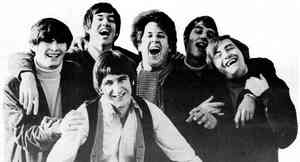 The Turtles 1967 Source: Wikipedia |
The
Turtles
[1,
2,
3,
4]
were formed in 1965 as the Crossfires, a surf rock group changing their name
to the Tyrtles, then the Turtles upon signing up with White Whale Records
that year. The group consisted of frontmen, Howard Kaylan
[1,
2] and Mark Volman
[1,
2],
along with Al Nichol (guitar), Chuck Portz (bass), Don Murray (drums) and
Jim Tucker (guitar). Members began changing in '66. Joining that year were
Joel Larson (drums), Chip Douglas (bass) and John Barbata (drums) with
Murray and Portz leaving. Barbata replaced Larson that year. Jim Poris
(guitar) joined in 1967, Douglas and Tucker leaving. John Seiter replaced
Barbata in 1969. The Turtles' first plate was 'It Ain't Me Babe' bw 'Almost
There', 'It Ain't Me Babe' reaching #8 on Billboard's US in August of '65. 1965
also saw 'Let Me Be' bw 'Your Maw Said You Cried'. A couple more tunes
reached the Top Thirty before 'Happy Together' achieved Billboard's #1 spot
in February of 1967, followed by 'She'd Rather Be with Me' at #4 in May. A
couple more reached the Top Twenty before 'Elenore' perched at #6 in
September of '68 followed by 'You Showed Me', also rising to #6 in January
of 1969. The Turtles issued five studio albums before their demise,
beginning with 'It Ain't Me Babe' in 1965, 'Turtle Soup' their final in
1969. In between came 'You Baby' ('66), 'Happy Together' ('67) and 'The
Turtles Present the Battle of the Bands' ('68). Disbanding in 1970, Volman and Kaylan
then joined
the Mothers of Invention as Phlorescent Leech & Eddie
respectively, then to become the
duo,
Flo & Eddie
[1,
2,
3,
4]. They appeared on several Zappa albums beginning with his
third, 'Chunga's Revenge', in 1970. Also releasing a number of their own
albums, 'The Phlorescent Leech & Eddie' was issued in 1972, 'Flo & Eddie' in
'74. Flo & Eddie aired on 'Dinah!' (Dinah
Shore) on 17 Dec 1975 after releasing 'Illegal, Immoral and Fattening'
that year. Come 'Moving Targets' in '76 and their last LP as a duo, 'Rock
Steady With Flo & Eddie', in 1981. Discos for the Turtles w various
credits: 1,
2,
3,
4.
For Leech & Eddie: 1,
2. For Flo &
Eddie: 1,
2.
The Turtles in visual media. Per 1970 below, Flo & Eddie
contribute to vocals on tracks 2, 4, 5, 6, 9 and 10 of Zappa's 'Chunga's
Revenge'. The Turtles 1965 'Shindig' Composition: Bob Dylan The Turtles 1966 Telecast Composition: P.F. Sloan/Steve Barri The Turtles 1967 Telecast Composition: Alan Gordon/Garry Bonner The Turtles 1968 Telecast Composition: The Turtles: Kaylan/Volman/Nichol/Pons/Barbata Flo & Eddie 1970 Album by Frank Zappa Flo & Eddie 1972 Album Flo & Eddie 1975 Illegal, Immoral and Fattening Album Concert filmed in Passaic NJ
|
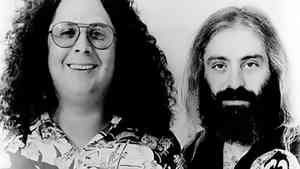 Flo & Eddie Source: Las Galletas de Maria |
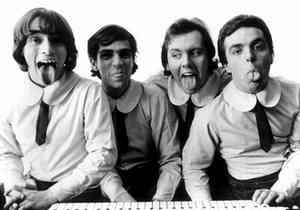 Young Rascals Source: Nostalgia Central |
The
Young Rascals
were formed in 1965 to become simply the
Rascals in '67. (They were originally
the Rascals, changing their name due to conflict with another band.)
Original members were Eddie Brigati [bass, vocals/ 1,
2,
3,
4], Felix Cavaliere [keyboards, vocals/
1,
2,
3,
4,
5],
Gene Cornish [guitar/ 1,
2,
3,
4] and
Dino Danelli [drums/ 1,
2,
3,
4,
5,
6]. Eddie's
brother, David Brigati [1,
2,
3,
4], sang background vocals (lead on the title song to
'Once Upon a Dream' in 1968). The
Young Rascals issued their first plate, 'I Ain't Gonna Eat Out My Heart
Anymore' bw 'Slow Down' (Atlantic 2312) in Nov 1965. They also appeared on 'Hullabaloo'
in February that year. Those first releases would surface on the Young
Rascals' first album in '66, 'The Young Rascals', along with 'Good Lovin''
and 'Mustang Sally'. The group issued two more albums as the Young Rascals
('Collections', 'Groovin'') before its fourth as only the Rascals in
February of '68, 'Once Upon a Dream'. Several LPs later the band issued its
last album, 'The Island of Real', in 1972. Cavaliere and Danelli were the
only original members. The Brigati brothers had left in 1970, Cornish in 1971, they
replaced by Ann Sutton (vocals), Robert Popwell [bass/ 1,
2,
3] and Buzzy Feiten
(guitar). Danny Weis [*] replaced Feiten in 1970. Cavaliere and Danelli carried
onward with solo careers after leaving the Rascals. They would surface on a
couple albums together with the Bulldogs as well. Danelli would later join
Steve Van Zandt's outfit in the early eighties. The Rascals would briefly
reunite a few times into the new millennium with various members, but the
band had run its course and gone kaput by 1973. It was inducted into the
Rock and Roll Hall of Fame in 1997, the Vocal Group Hall of Fame in
2007. Their latest reunion was in April-May for 14 performances of 'Once
Upon a Dream' at the Richard Rodgers Theatre in NYC. Brigati and Cavaliere were elected into the Songwriters Hall of Fame
in 2009. References for the (Young) Rascals: 1,
2,
3,
4,
5,
6,
7.
Discos w various credits for the Young Rascals: 1,
2,
3.
For the Rascals: 1,
2,
3.
See also Wikipedia.
The (Young) Rascals in visual media.
Further reading: 1,
2 (benign Angelfire
popup). Young Rascals 1965 I Ain't Gonna Eat Out My Heart Anymore Composition: Pam Sawyer/Laurie Burton 'Hullabaloo' Young Rascals 1966 Composition: Rudy Clark/Arthur Resnick 'Ed Sullivan Show' Composition: Eddie Brigati/Felix Cavaliere Telecast Composition: Gerald Roslie Telecast Composition: Lamont Dozier/Brian & Eddie Holland Telecast Composition: Larry Williams 'Hullabaloo' Composition: Eddie Brigati/Felix Cavaliere Film Album Young Rascals 1967 Composition: Felix Cavaliere/Eddie Brigati Music video Composition: Felix Cavaliere/Eddie Brigati Telecast Album Composition: Felix Cavaliere/Eddie Brigati Telecast Composition: Felix Cavaliere/Eddie Brigati Telecast 'Mike Douglas Show' The Rascals 1972 Album
|
|
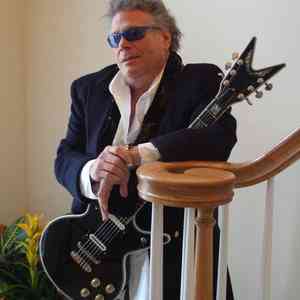 Leslie West Source: MP3 XL  Mountain Source: Metallized |
Born Leslie Weinstein (Jewish) in 1945 in NYC,
Leslie West [1,
2,
3,
4,
5,
6] roped up with the Vagrants
[1,
2,
3], a band that released
its first record for Southern Sound in July of '65: 'Oh Those Eyes' bw
'You're Too Young'. Consisting of Leslie West (guitar), Larry West (bass),
Peter Sabatino (vocals), Jerry Storch (keyboards) and Roger Monsour (drums),
the Vagrants issued several plates until 'And When It's
Over' bw 'I Don't Need Your Loving' in 1968. The Vagrants were produced by
bassist/vocalist, Felix Pappalardi [1,
2,
3], with whom West released his first solo
LP, 'Mountain', in 1969. The formation of the band,
Mountain [1,
2,
3,
4,
5,
6], followed that year to include Steve Knight
[*] on keyboards
and ND Smart [*] on drums. Mountain
appeared at the Woodstock Festival in New York in August of 1969, after
which Smart was replaced by Corky Laing [1,
2]. 'Climbing!'
was the band's debut LP in 1970, followed by 'Nantucket Sleighride' and
'Flowers of Evil' in 1971. In 1972 West, Laing and
Jack Bruce (bass) formed
West, Bruce and Laing [1,
2] to issue 'Why Dontcha' followed by 'Whatever Turns You
On' in 1973 and the live album, 'Live n Kickin'', in '74. Jumping ahead to
the eighties, Pappalardi, having parted from Mountain in 1974, was shot to death by his wife, Gail
Collins
[*], on April 13, 1983
[1,
2,
3].
Collins had done the artwork for several Mountain album covers and was a
contributing lyricist for the band. Discogs has
Mountain releasing above thirty albums, most recently in 2010: 'Live in
NYC'. The band's latest studio enterprise has been 'Masters of War' in 2007.
West's lower leg was amputated in 2011 due to diabetes, he continuing to
perform upon recovery. West has issued some fifteen LPs, his latest, 'Soundcheck', in 2015.
West has made numerous appearances on the Howard Stern radio broadcast over
the years. He died in NYC on 23 December 2020. Discos for West w various credits at 1,
2,
3.
For Pappalardi: 1,
2.
For the Vagrants: 1,
2.
For Mountain: 1,
2,
3.
For Laing: 1,
2. For West,
Bruce & Laing: 1,
2.
Interviews w West: 2011,
2012,
2013,
2014,
2018.
With Laing: 2014,
2014,
2017,
2017.
West in visual media.
Other members of Mountain.
Per 1970 below, 'Dreams of Milk and Honey' is credited to Leslie West, Felix
Pappalardi, John Ventura and Norman Landsberg. The Vagrants 1965 Composition: Jerry Storch Composition: Alan Abrahams/Richard Tyson The Vagrants 1966 Composition: Jerry Storch/Trade Martin Composition: Bert Sommer The Vagrants 1967 Composition: Sommer/Pappalardi/Collins I Love You, Love You (Yes I Do) Composition: Benny Earl Composition: Otis Redding Composition: Sommer/Pappalardi The Vagrants 1968 Composition: Jerry Storch Leslie West 1969 Composition: West/Pappalardi/Collins LP: 'Mountain' Composition: West/Pappalardi John Ventura/Norman Landsberg LP: 'Mountain' Mountain 1970 Live at Fillmore East Filmed at Crosley Field Filmed in New York Composition: West/Laing/Pappalardi/David Rea Theme for an Imaginary Western Composition: Pete Brown/Jack Bruce LP: 'Climbing!' West, Bruce and Laing 1972 Composition: West/Bruce/Laing/Pete Brown LP: 'Why Dontcha' Composition: West/Bruce/Laing LP: 'Why Dontcha' West, Bruce and Laing 1973 Album Leslie West 1976 Album Mountain 1985 Filmed live
|
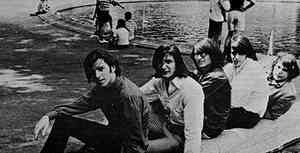 The Vagrants 1966 Source: Wikipedia  West, Bruce & Laing Source: Discogs |
 Duane & Greg Allman Source: hankgwe |
The South may have lost the Civil War but when it rose again to protect
America from the British Invasion it spelled the doom of Queen Elizabeth's
rude
intrusion. The official beginning of the
Invasion is generally given
per
The Beatles arriving at John Kennedy
airport in February 1964, although
The Shadows had arrived in 1960 to scout
out the land for the Queen's coming tit for tat for America presuming to
send musicians to Great Britain for the last forty years to considerable
disturbance of its peace. But just as there was no equivalence to the
Beatles's Merseybeat in America, nor was there any equivalence in the UK to
the Southern (country/blues) rock bands that would come on strong in the seventies
and continue so to this day. The napkin-dabbing tea-sipping Brits had not
before confronted wild men from the less cultivated regions of the South who
had not yet developed civility, much less in war. From Texas to Florida such as
ZZ Top,
Charlie Daniels,
Lynyrd Skynyrd, Marshall Tucker,
the Outlaws and Molly Hatchet saved America from whole tyranny by British
air raids. Advised by her generals that she couldn't take down the South,
for the first time in her career as the Queen of Rock it dawned on her that her gig might soon be up. She had accounted the Brothers'
first LP in '69 no threat. 'Idlewild South' in 1970 wrought a moment's
hesitation before deleting it from her mind. But 'At Fillmore East' ('71)
would go platinum. Noticeably flustered was she as she called an emergency
meeting of her Invasion staff (not all showing
up). The Brits knew they had a hot potatoes on their hands but persisted
confidently as before, albeit by then American bands were returning
equivalent damage, civilians by untold number in the UK becoming refugees
from the airwaves to avoid brainwashing. Them arrived 'Eat a Peach'
in '72. The Queen, only 46 years of age at the time, became like sputtering
Aunt Clara in 'Bewitched', unable to remember her spells. She'd been in her
garden potting tomatoes when the blow arrived by royal courier. In a blink
her generals were summoned, right there in galoshes and bonnet in her little
tent greenhouse, with a tomato plant, in shock
itself, on the
table next to the impudent album cover of 'Eat a Peach'. Like Hitler,
instead of listening to her generals who well knew that America was no longer easy prey,
she would continue her plundering adventure through the seventies, though
with gradually dwindling interest as she turned away from war maps and her
rock n roll armada to a solo career in croquette, performing the mallet,
which took some balls, she quite rattled by that time as well, the consequences of a triumphant but
stressful Invasion. Elizabeth yet had the audacity to send
some punk bands across the Atlantic into the latter seventies, to find a soft spot
in American defenses while removing them from British society, hoping they
would stay there. But Americans had
garbage all their own and the junk of both
societies knew by then that it was better to unite than
fight. Few thereafter into the eighties referred to the Brits as invaders anymore. As for the
Allman Brothers, they were first formed in 1964 by
Duane and
Gregg as the Escorts
[1,
2,
3]. Duane had been born in Nov 1946 in Nashville, Tennessee.
His father, Willis Allman, was murdered three years later, Duane and Gregg
to get shuffled about variously until eventually attending high school in Daytona Beach. Florida. Gregg had been born in
Nashville as well in Dec of '47. The Escorts recorded numerous tracks, none
issued until 2013 [Discogs] before becoming the Allman Joys
[1,
2,
3,
4,
5] in
summer of 1965 upon Gregg's graduation from high school. During the Joys' existence they
first recorded as the Spotlights and Super Dupers
in 1966 [1,
2]. 'Batman and Robin/'Dayflower' appeared by the Spotlights in January on Smash S-2020.
Come the album, 'The Super Duper Record of Super Heroes' on an unidentified date the same year
[Discogs].
They issued ''Spoonful'/'You Deserve Each Other'' (Dial 4046) as the Allman Joys in September
[1,
2].
The Allman Joys disbanded in March of 1967, they then forming Hour Glass
[1,
2,
3,
4,
5,
6,
7,
8] with which they
traveled to Los Angeles where they shared a house for several months with the
Nitty Gritty Dirt Band
while recording 'Hour Glass' in June toward issue in October. 'Power of Love' followed in March of '68. It was while with Hour Glass
that Gregg, too focused on music to permit disruption, shot himself in the foot to avoid the draft
[1,
2].
Upon the disbanding of Hour Glass in latter '68 Duane returned to
Jacksonville, then become a session musician in Muscle Shoals, Alabama, at
FAME Studios. He backed a few titles by the Bleus:
'Milk and Honey"/'Leavin' Lisa' (Amy 11.038/ Sep '68) and 'Julianna's Gone' (Bell 761/ Feb '69)
[45Cat/ other Bleus titles at Discogs].
He supported The Duck and the Bear (Johnny Sandlin/Eddie Hinton) toward the
issue of 'Hand Jive'/'Goin' Up to Country' (Atlantic 2651) in Jun 1969
[1,
2,
3].
Duane began putting together the Allman Brothers Band in Jacksonville in
March of '69, Gregg returning to join the band the same month. At the time of their first album release, 'The Allman Brothers
Band', in 1969 the group consisted of Duane (slide/lead guitar),
Gregg (organ/lead vocals), Dickey Betts (lead guitar), Berry Oakley
(bass), Jai Johanny Johanson (aka Jaimoe/ drums/congas) and Butch Trucks (drums/percussion). Duane, however,
soon died [1,
2,
3 in a
motorcycle accident on a Harley-Davidson Sportster on Oct 29, 1971, after the issue
of 'At Fillmore East'. The album, 'Duane & Gregg Allman', saw issue in 1972
[1,
2]. Only eleven months
after Duane's death Oakley also died in a
motorcycle accident, 'Eat a Peach' released several months before. Gregg
released his first album as the Gregg Allman Band
[1,
2], 'Playin' Up a Storm', in May of '77 on Capricorn CP 0181.
He partnered w
Cher on the issue of 'Two the Hard
Way' as Allman and Woman in November
[1,
2]. The Allman
Brothers Band dissolved for several years in '82 until a reunion in 1989. With
Betts eventually fired in 2000, the Allman Brothers continued onward with
original members, Johanson and Trucks until their
final show at the Beacon Theater in NYC on
October 28, 2014, a venue they had played since 1992. 2014 was also the last that they
hosted the
Wanee Music Festival in Live Oak, Florida, that since 2005. The
Allman Brothers Band had recently helped found the
Peach Music Festival in Scranton, Pennsylvania, w
Live Nation Entertainment in 2012.
Greg died [1,
2,
3] on May 27, 2017. Recent members of the band had been Warren Haynes (guitar), Jack Pearson
(guitar), Oteil Burbridge (bass) and Marc Quinones (drums). With eleven
studio and sixteen live albums in their catalogue, three of those went
platinum: 'At Fillmore East' ('71), 'Eat a Peach' ('72) and 'Brothers and Sisters'
('73). Three gold albums followed into the nineties: 'Win, Lose or Draw' ('75),
'Enlightened Rogues' ('79) and 'Where It All Begins' ('94). The Allman Brothers' last studio
releases had been 'Hittin' the Note' in 2003. The group's latest live LP, 'One Way
Out', was recorded that year, issued in 2004. Gregg published his
memoir, 'My Cross to Bear', in 2012. References for the Allman Brothers Band:
1,
2,
3,
4,
5,
6,
7,
8,
9.
Members.
Shows and sessions.
In visual media.
Discographies w various credits: 1,
2,
3,
4.
Reviews: 1,
2,
3,
4.
Forums. References for Duane
Allman: 1,
2,
3,
4,
5.
Chronology.
Final interview Aug '71.
Discos w various credits: 1,
2.
References for Gregg Allman: 1,
2.
At Discogs.
Further reading: Rolling Stone Dec '73,
Garden & Gun Jan '11,
Rolling Stone June '17,
Newsweek Sep '17,
Garden & Gun Nov '17. Per 1965 below, titles were recorded that year but not issued until 2013 on 'Skydog: The Duane Allman Retrospective'.
The Escorts 1965 Instrumental Composition: Duane & Gregg Allman Composition: Deadric Malone/Joseph Wade Scott Composition: Ray Charles Allman Joys 1966 Issued Sep 1966 Composition: Willie Dixon The Spotlights 1966 Issued Jan 1966 Composition: Leon Russell/Louis Pegues/Snuff Garrett Hour Glass 1967 From the LP 'Hour Glass': Composition: Don Covay/John Berry Composition: Lennon-McCartney Composition: Buddy Scott/Jimmy Radcliffe Composition: Gregg Allman Composition: Alex Moore/Bruce Welch Composition: Dan Penn/Spooner Oldham (Dewey Lindon Oldham Jr.) Music: Carole King Lyrics: Gerry Goffin Allman Brothers 1970 From the LP 'The Allman Brothers Band': Composition: Gregg Allman LP: 'The Allman Brothers Band' Composition: Spencer Davis/Edward Hardin LP: 'The Allman Brothers Band' Composition: Gregg Allman LP: 'The Allman Brothers Band' Allman Brothers 1970 Filmed at Fillmore East Composition: Gregg Allman Allman Brothers 1971 Album Not issued until 2003 Allman Brothers 1972 Nobody Knows You When You're Down and Out Composition: Jimmy Cox LP: 'Duane & Greg Allman' Album Filmed at Hofstra University Composition: Dickey Betts Allman Brothers 1973 Album Allman Brothers 1979 Filmed concert Allman Brothers 1980 Filmed concert Allman Brothers 1981 Filmed concert Allman Brothers 1982 Live at the University of Florida Filmed concert Allman Brothers 1990 Album Side A Album Side B Allman Brothers 1994 Filmed concert Allman Brothers 2003 Album Allman Brothers 2009 Filmed in NYC with Eric Clapton Allman Brothers 2010 Filmed live with Derek Trucks Composition: Gregg Allman |
|
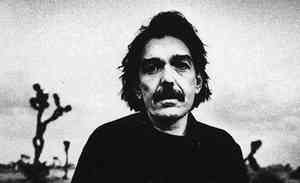 Captain Beefheart Source: Pitchfork |
Born Don Glen Vliet in 1941 in Glendale, CA,
Captain Beefheart, also known as Don Van Vliet,
wasn't among those singers who popped from the oven with Top Ten singles for
a decade, then became crust. He went the other direction, from obscure in
more ways than one to an underground cult figure whose recognition grew over the years largely
in association with his high school friend,
Frank Zappa. Beefheart began painting
and sculpting at age three. He was apparently pretty good at shaping
animals, yet would later decline several proffered scholarships. Perhaps,
perhaps not, an early indication of paranoid schizophrenia was his
disinclination to leave his bedroom, requiring his parents to slip dinner
trays beneath his door. Howsoever, Beefheart was particularly fond of the
blues (Howling Wolf) upon meeting
Zappa at Antelope Valley High School in Lancaster. The
twain separated to attend different colleges in the Los Angeles region but
remained in contact. It was during that period that Beefheart made his first
known recording, 'Lost In a Whirlpool'', taped by
Zappa in one of his
college classrooms, thought 1959. That can be found on
Zappa's posthumous
release of 'The Lost Episodes' per 1996. The two, however, pursued different
paths in the early sixties,
Zappa to work in advertising while performing in
clubs, Beefheart to run a chain of Kinney's shoe stores while honing his
skills on harmonica, also performing at clubs. In 1964 the two began to
collaborate on compositions as the Soots. It was then that Vliet took up the
name, Captain Beefheart. Among their recordings thought rejected by Dot Records were
'Cheryl's Canon', 'Metal Man Has Won His Wings' and 'Slippin' and Slidin''.
Zappa thereat went on to form The Mothers, Beefheart to join a band called
the Magic Band. He changed his name from Glen Vliet to Van Vliet at that
time, though what emerged to make his first commercial recordings in 1966
for A&M was Captain Beefheart and his Magic Band: 'Diddy Wah Diddy'/'Who Do
You Think You're Fooling' followed by 'Moonchild/Frying Pan' the same year.
'Yellow Brick Road'/'Abba Zaba' surfaced the next year, also appearing on
Beefheart's debut LP that year, 'Safe As Milk'. His next album, 'Strictly Personal',
surfaced in 1968. The next year he issued 'Trout Mask Replica' on
Zappa's
Straight Records label, a double LP with 28 tracks. He also contributed the
vocal to 'Willie the Pimp' on
Zappa's 'Hot Rats' in '69. In 1975 Beefheart
and
Zappa collaborated on the album, 'Bongo Fury'. Such was a trying
experience to both of them, after which they fell out with other until
Zappa's latter years. Unlike most in the rock business,
though similar to
Zappa's general disapproval of drug
use, Beefheart kept a strict policy as to drugs: none allowed. On the other hand,
accounts of Beefheart are riddled with odd conversations and experiences,
sometimes of a dissociative, dubitable and/or imaginary if not extraordinary sort. One example of
such peculiarities was during the production of 'Trout Mask Replica'. From 'Rolling
Stone' magazine: 'Replica' being partially recorded at his home, Beefheart
had requested of Straight Records the residence of a "tree surgeon" in the
event that making such noise should cause his trees to 'fall over". Straight
Records responded with a denial. After sessions were finished Beefheart
nevertheless
presented Straight with a bill of $250 to reimburse him for the hire of a
tree doctor to ensure his trees were yet healthy. Not knowing quite what to
think seems the impression Beefheart had on people in general, he also
difficult with whom to work. In 1982 'Ice Cream for Crow' became Beefheart's
last album, he retiring to paint [1,
2,
3,
4,
5,
6].
Since that time members of his Magic Band
have numerously related the difficulty of working with Beefheart, problems
ranging from abuse including physical, poor pay including none for whole
tours, and taking sole credit for collaborative efforts by all. The Magic
Band reformed in 2003, sometimes on, sometimes off, depending on the year
and who's clapping hands. As for Beefheart, having exhibited his paintings
since 1972, he retired to seclusion, placing his works at the Michael
Werner and Anton Kern galleries in New York. Though he was a less than compelling
figure in the realms of fine art 'ARTNEWS' magazine has him auctioning a
painting in 2003 for just above $9000, far from the stellar prices that some
command, but quite comfortable in view of the fact that painters of high
caliber anywhere ask a fraction as much for a canvas. Wikipedia mentions
sales approaching $25,000. Howsoever, Beefheart designed his own album
covers. He had also for some years been subject
to multiple sclerosis, of which he died on 17 December 2010
[1,
2,
3]. His thirteenth
studio album, recorded in 1976, was 'Bat Chain Puller', issued in 2012.
Discographies for Beefheart w various credits: 1,
2,
3,
4.
References: 1,
2,
3,
4.
Interviews w Beefheart: 1969,
1972,
1979,
1980.
1993 film 'Some YoYo Stuff'.
Beefheart and his Magic Band in other visual media: 1,
2,
3.
Facebook tribute page.
Further reading: 1970 Rolling Stone;
2010 AV Music,
Scaruffi. Uncredited titles below were composed by Don Van Vliet otherwise simplified
to Beefheart. Captain Beefheart 1959 Composition: Beefheart/Zappa College recording issued 1996 Frank Zappa LP: 'The Lost Episodes' Captain Beefheart 1964 Composition: Zappa Not issued until 1998 Frank Zappa LP: 'Mystery Disc' Captain Beefheart 1966 Composition: Willie Dixon/Ellas McDaniel (Bo Diddley) Composition: David Gate Who Do You Think You're Fooling Captain Beefheart 1967 Composition: Herb Bermann/Beefheart LP: 'Safe As Milk' Captain Beefheart 1968 BBC radio broadcast Album Composition: Herb Bermann/Beefheart Filmed in Cannes, France Captain Beefheart 1969 Album Captain Beefheart 1971 Live at the Ludlow Garage Cincinnati Captain Beefheart 1972 Albums German telecast Captain Beefheart 1974 Album Not issued until 1994 Captain Beefheart 1975 Live with Frank Zappa Captain Beefheart 1976 LP issued posthumously 2012 Captain Beefheart 1977 Captain Beefheart 1978 Album Captain Beefheart 1980 Live at the Théatre De L'Empire French telecast: 'Chorus' Captain Beefheart 1982 Album
|
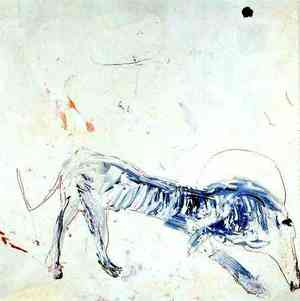 Saint Dog Painting by Don Van Vliet Source: Melt |
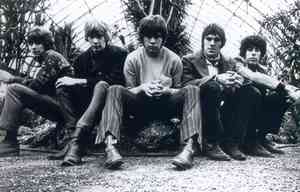 Blues Magoos Source: Mental Itch |
The
Blues Magoos
[1,
2,
3,
4,
5/
Members] were
among the earliest psychedelic bands, formed in 1964, not in LSD
Central, San Francisco, but in Bronx. At the time of their first
issues the group consisted of Ralph Scala (keyboards), Peppy Castro (guitar)
Ron Gilbert (bass) Mike Esposito (guitar) and Geoff Daking (drums).
Personnel would begin changing in '69 though core members, Scala, Daking and
Castro, continue with the band to this day. The Magoos released their first
album in 1966: 'Psychedelic Lollipop'. Their fifth and last album appeared
in 1970: 'Gulf Coast Bound'. In between had come 'Electric Comic Book'
('67), 'Basic Blues Magoos' ('68) and 'Never Goin' Back to Georgia' ('69).
The group disbanded per their last album, waited 36 years to reform in 2008,
then waited six more to issue the LP, 'Psychedelic Resurrection', in 2014.
Castro in the meantime had played with the bands, Barnaby Bye and Balance.
Discos for the Magoos w various credits: 1,
2.
Blues Magoos in visual media. Blues Magoos 1966 Composition: Gilbert/Scala 'Smothers Brothers' Album Blues Magoos 1967 There's a Chance We Can Make It Composition: Scala/Gilbert LP: 'Electric Comic Book' Blues Magoos 1968 Album Blues Magoos 1969 Album Blues Magoos 1970 Album Blues Magoos 2014 There's a Chance We Can Make It Composition: Scala/Gilbert LP: 'Psychedelic Resurrection' Composition: Gilbert/Scala/Mike Esposito LP: 'Psychedelic Resurrection'
|
|
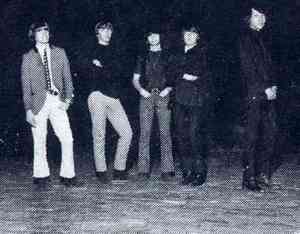 The Choir Source: Music Banter |
The Choir of
Cleveland, not to be confused with the later Christian group, was an obscure band that
would become the more successful Raspberries in the seventies. The
Choir issued
very little material, nigh their whole catalogue below. Their only albums
were later compilations that included unissued tracks. The group finds its
way into this history as one of the earliest bands to respond to the
British Invasion in kind. That was due that the
band's leader, Dann Klawon [*], was able to come by
Beatles releases in the UK before they
arrived in America in February of '64. Indeed, the Choir was first named the
Mods, a British term representative of which were such as
Julie Driscoll and
Rod Stewart. Disguised as Anglophiles,
they fooled Queen Elizabeth II into thinking they were actually British and
she left them alone, free to mount attacks against the British they were
pretending to be. At the time of its 45 first plate issued in Oct '66 the Choir consisted of Dann Klawon (rhythm), Dave
Smalley (rhythm), Dave Burke (bass), Wally Bryson (lead) and Jim Bonfanti
(drums). That was 'It's Cold Outside'/'I'm Going Home' (Canadian American CA
203). The Choir scattered for good five years later in 1970. Since the Queen was a
little miffed to discover they weren't actually British they were forced
underground as the Raspberries the same year via Bonfanti, Bryson and
Smalley, adding Eric Carmen [1,
2,
3]
on bass and lead vocals. The Raspberries placed a couple strong titles on
Billboard in 1972: 'Go All the Way' at #5 in July and 'I Wanna Be with You'
at #16 in November [Music VF]. They managed to
issue four albums before the Queen put a price on their heads: 'Raspberries'
('72), 'Fresh' ('72), 'Side 3' ('73) and 'Starting Over' ('74). When the Queen discovered
in 1975 that the
Raspberries were no more British than the Choir had been she wasn't a little peeved and they were forced to leave separate trails
after a final show on April 19th at the Masonic Temple Auditorium in
Scranton, PA. After decades of thumbing their noses at the Queen as she
hunted them down individually to nary success, Bryson, Smalley and Scott McCarl reunited in 2000 to record 'Refreshed'. It was Bryson, Smalley,
Bonfanti and Carmen reuniting for a show at the House of Blues in Cleveland
in Nov 2004. Touring into 2005, they recorded 'Live on Sunset Strip' at the
House of Blues (a chain) in Los Angeles for issue in 2007. 2017 saw the issue of 'Pop
Art Live' consisting of their reunion show at the House of Blues in
Cleveland in 2004 [*].
Discographies for the Choir w various credits
at 1,
2.
For the Raspberries: 1,
2.
For Carmen: 1,
2.
Compositions by Carmen. References for the
Choir: 1,
2,
3. For the Raspberries:
1,
2,
3,
4,
5,
6/
Timeline.
The Raspberries in visual media.
Concert itinerary.
See also: 1,
2.
Uncredited titles below were written by Carmen. The Choir 1966 Composition: Dann Klawon Composition: Dann Klawon The Choir 1967 Composition: Gary Illingworth/Myrna March/Richard Grasso Don't You Feel a Little Sorry for Me Composition: Dann Klawon Composition: Phil Okulovich Composition: Wally Bryson The Raspberries 1972 Composition: Wally Bryson LP: 'Fresh' Composition: Eric Carmen/Dave Smalley LP: 'Fresh' Album The Raspberries 1973 Composition: Eric Carmen LP: 'Side 3' Composition: Wally Bryson LP: 'Side 3' Composition: Dave Smalley LP: 'Side 3' The Raspberries 1974 'Mike Douglas Show' Composition: Eric Carmen Composition: Eric Carmen LP: 'Starting Over' Composition: Eric Carmen/Scott McCarl LP: 'Starting Over' Composition: Eric Carmen LP: 'Starting Over'
|
 The Raspberries Source: Rate Your Music |
|
Barry Goldberg
was a keyboardist and record producer born in 1942 in Chicago. He sat in on
gigs with big blues names as a teenager, getting his early direction from
such as
Otis Rush,
Muddy Waters and
Howling Wolf. Goldberg gave his first
notable public performance in 1965 with Bob
Dylan at the Newport Folk Festival. Wikipedia has Goldberg first
surfacing on vinyl in 1966 on 'Devil with the Blue Dress On'/'Good Golly
Miss Molly' by
Mitch Ryder & the Detroit Wheels. He then issued 'Blowing My
Mind', his first LP, that year. In addition to above ten albums, studio and
live, Goldberg contributed to numerous bands over the years, and countless
recordings by yet others. He was an early member of
Electric Flag in 1967 with
Mike Bloomfield. November 1973 saw
Gladys Knight & the Pips taking
his composition w Gerry Goffin, 'I've Got to Use My Imagination', to the #1
tier on Billboard's R&B. The nineties saw
Goldberg co-producing albums by
Percy Sledge with Saul Davis.
Goldberg was a member of the Rides
in 2012 with
Stephen Stills, issuing
'Can't Get Enough' as such in 2013. Goldberg's latest solo release was
'Chicago Blues Union' in 2006 until 'In the Groove' in 2018. Discographies w
various credits: 45Cat,
Discogs.
References: Barry Golberg Music,
Wikipedia,
'Stars of David:
Rock 'n' Roll's Jewish Stories' (Scott Benarde): 1,
2. Interviews w Goldberg: 1996,
2012,
2016,
2018.
Goldberg in visual media.
At Facebook. Barry Goldberg 1966 Composition: Goldberg/Roy Ruby LP: 'Blowing My Mind' With Mitch Ryder & the Detroit Wheels Composition: Frederick Long/William Stevenson First issue: Shorty Long 1964 Composition: Goldberg LP: 'Blowing My Mind' With Mitch Ryder & the Detroit Wheels Composition: John Marascalco/Robert Bumps Blackwell First issue: Little Richard Jan 1958 Barry Goldberg 1969 Composition: Goldberg LP: 'Two Jews Blues' Composition: Arthur Crudup LP: 'Two Jews Blues' Composition: Harold Willis (Chuck Willis) LP: 'Two Jews Blues' Barry Goldberg 1973 With Harvey Mandel & Charlie Musselwhite Barry Goldberg 1974 Composition: Goldberg/Gerry Goffin LP: 'Barry Goldberg' I've Got to Use My Imagination Composition: Goldberg/Gerry Goffin LP: 'Barry Goldberg'
|
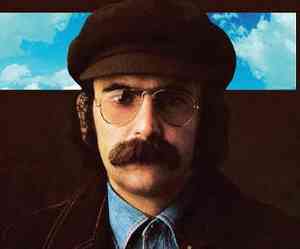 Barry Goldberg Source: Discogs |
|
|
Jefferson Airplane was the premiere psychedelic band of
the period.
Fleetwood Mac wasn't, but if not for
the Airplane that British Invasion band might have done even more damage
than it did. The Airplane was formed in 1965 in San Francisco by guitarist, Marty Balin
[1,
2],
the notion to drop some propaganda over London with some LSD, zone the Queen
and take the city. It may have been due to a single Airplane that
Ginger Baker figured he'd better
assemble a whole
Air Force to help beat the Yanks back. Balin had issued
a couple records in 1962 for Challenge Records: 'Nobody But You' bw 'You
Made Me Fall' and 'I Specialize In Love' bw 'You Are the One'. Balin's
notion was to buy a pizza joint in San Francisco with a group of investors, turn it into a
club called the Matrix
[1,
2] and put his own band in it. Core members of the band
were Paul Kantner [guitar/ 1,
2],
Jorma Kaukonen [guitar/ 1,
2] and vocalist, Signe Toly
Anderson [1,
2]. Drummers, Skip Pence (replacing
the original Jerry Peloquin) and
Spencer Dryden, both appeared on the band's first album, Dryden
to eventually take over for a couple more years. Bassist, Jack Casady [1,
2], would
also be with the band on its debut LP, 'Jefferson Airplane Takes Off',
issued in August of
'66. Anderson gave her last performance w the Airplane at Fillmore West in
San Francisco on October 15, 1966, she leaving to become a mother. She would
be replaced by
Grace Slick
[1,
2,
3,
4,
5].The Airplane had given its first
performance at the Matrix (per above) on 13 August of '65. The group recorded its first
demo in 1965 as well, 'The Other Side of This Life' for RCA (with Bob Harvey on
bass, to be replaced by Casady). Balin must have been a skilled negotiator as RCA advanced the
band an unusually high $25,000. Between 1966 and 1972 Airplane issued seven
studio albums. Anderson appeared on only the first, 'Jefferson Airplane Takes Off'
('66). Enter Slick, a pianist born in 1939 in Highland Park, Illinois. Her
father working in investment banking for Weeden and Company, she was moved
in her youth to Chicago, then Los Angeles and finally San Francisco. Slick
had made her first recordings in 1966 in a group called the
Great Society
[1,
2]
after seeing a show by Jefferson Airplane at the Matrix. Only one 45 plate
was issued: 'Someone to Love'/'Free Advice' (Northbeach 1001) in Feb of '66
[45Cat].
Other titles recorded live would see release in 1968 on 'Conspicuous Only in
Its Absence' and 'How It Was'. Darby Slick's composition, 'Someone to Love',
became 'Somebody to Love' on the Airplane's second LP, 'Surrealistic Pillow'
('67). That LP also featured the
title, 'White Rabbit',
originally written by Grace for Great Society. Come 'After
Bathing at Baxter's' ('67), 'Crown of Creation' ('68), 'Volunteers' ('69), 'Bark'
('71) and 'Long John Silver' ('72), The group then separated after its last
shows at the Winterland Ballroom in San Francisco in September of '72, both
recorded. In the meantime two other bands had evolved out of Airplane: Hot
Tuna and Jefferson Starship. Kaukonen, Casady and Kantner had formed Hot
Tuna in 1969 with drummer, Joey Covington, while Slick was recovering from
throat node surgery. Covington had first appeared w the Airplane on the
album, 'Volunteers', in '69. Slick would later perform with Hot Tuna as a
guest but Starship was her mojo. Hot Tuna had issued its initial
album in 1970, 'Hot Tuna', the year Kantner's Starship released 'Blows
Against the Empire' on which Slick was back at vocals and piano. Kanter and
Covington had left Hot Tuna before its first album sessions consisting of
only Kaukonen, Casady and Will Scarlett on harmonica. Produced by Kantner w
Covington on drums, other personnel on 'Blows Against the Empire' included
Jerry
Garcia.
Papa John Creach, who had been a member of Jefferson Airplane, would
also perform with both Hot Tuna and Jefferson Starship. Kantner left Jefferson Starship in 1984, though joined a reunion of Jefferson Airplane in 1989
resulting in the LP, 'Jefferson Airplane'. His departure from JS in the
meantime had led to litigation in March of 1985 resulting in a cash
settlement to Kantner with Slick owning 51% of the JS name divided with
manager, Bill Thompson, owning 48% with all parties agreeing to put the
Jefferson Starship name out of commission. The group thus released albums
from 1985 to 1990 as simply Starship. Slick herself retired from the band in
1988, moving on to become a painter of not a few white rabbits only [1,
2]. The Airplane was elected into the
Rock and Roll Hall of Fame in 1996. Casady issued his name album, 'Dream
Factor', in 2003 on Eagle Records. The Airplane was rewarded the Grammy
Lifetime Achievement Award in 2016. Numerous of the original Airplane are no
longer living: Pence died on 16 April
1999, Dryden on 11 January 2005, both Anderson and Kantner unrelatedly
though on the same date of 28 January
2016, and Balin on 27 September 2018. References for Jefferson Airplane: 1,
2,
3,
4,
5,
6,
7.
Other members
of the band.
Discographies w various credits: 1,
2,
3.
Lyrics.
Songwriting credits.
Official YouTube channel.
JA in other visual media.
Further reading: Rolling Stone '76,
Wall Street Journal '16,
Louder '17.
References for Hot Tuna: 1,
2,
3,
4.
Discos w various credits: 1,
2,
3.
In visual media.
References for Jefferson Starship: 1,
2.
Members:
1,
2.
Current members (none
original - use of the JS name being brought to court again as of this
revision). JS in visual media.
At Facebook.
References for Starship: 1,
2.
Members.
Discos w various credits: 1,
2,
3,
4.
Discographies for individual members of Jefferson Airplane at Discogs and 45Worlds:
Balin 1,
2;
Kantner 1,
2;
Kaukonen 1,
2;
Slick 1,
2.
Slick in visual media.
Interviews w Slick: 1970 Rolling Stone;
2012 Vanity Fair;
2014 Rolling Stone;
2015 Forbes 1,
2;
2017 Variety. Slick at Facebook.
Per below, Darby Slick is brother-in-law to Grace Slick. Also below is footage of the
infamous Altamont Free Concert in 1969, the same at which the
Rolling Stones performed with Hell's
Angels hired for security. Marty Balin 1962 Composition: Harry Collis/Marty Balin Composition: Dave Burgess Composition: Barbara Robertson Great Society 1966 Composition: Darby Slick Composition: Darby Slick Composition: Grace Slick Jefferson Airplane 1966 Album Jefferson Airplane 1967 Album Album 'American Bandstand' 'Smothers Brothers' Jefferson Airplane 1968 Composition: Harry Collis/Marty Balin NYC rooftop Filmed live Composition: Grace Slick LP: 'Crown of Creation' Jefferson Airplane 1969 Composition: Grace Slick Filmed at the Altamont Free Festival Filmed at Woodstock Composition: Oran Page (Hot Lips Page) 1944 Filmed at Woodstock Composition: Marty Balin/Paul Kantner Album Composition: Marty Balin/Paul Kantner Telecast with Dick Cavett Composition: Paul Kantner Telecast with Dick Cavett Filmed at Woodstock Hot Tuna 1970 Album Jefferson Airplane 1970 Filmed at the Family Dog Ballroom Composition: Grace Slick/Paul Kantner Filmed live Film Jefferson Starship 1970 Album Jefferson Airplane 1971 Composition: Jorma Kaukonen LP: 'Bark' Jefferson Airplane 1972 Album Jefferson Starship 1975 Filmed live at Winterland Jefferson Airplane 1989 Issue unknown Issue unknown
|
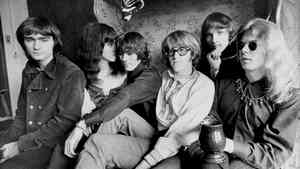 Jefferson Airplane L to R: Balin, Slick, Dryden R to L: Casady, Kaukonen, Kantner B to T: almost all Photo: Associated Press Source: CBS News |
|
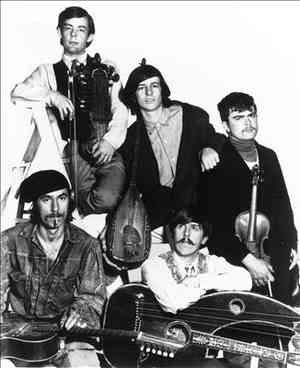 Kaleidoscope Source: All Music |
Kaleidoscope (not to be confused with the UK band,
Kaleidoscope, of the same period)
[1,
2]
was formed in 1966 by the duo, Solomon Feldthouse (string instruments)
[1,
2] and
David Lindley (string instruments)
[*], upon adding Chester Crill
(harmonica/violin), Chris Darrow (bass)
[*] and John Vidican (drums). An
eclectic folk/psychedelic band, they issued their debut 45 plate, 'Please'/'Elevator
Man', in
December 1966 on Epic 5-10117. 'Please' got included on 'Side Trips', their first album
released in June of
'67. Stuart Brotman replaced Darrow after the issue of the group's second
album, 'A Beacon from Mars'. Paul Lagos also replaced Vidican on drums. Ron
Johnston replaced Brotman as 'Bernice', issued in 1970, was being recorded,
after which Feldthouse left the band. Kaleidoscope toured in '69 with the
British band,
Cream, then dissolved. Lindley moved onward to become a
session musician, appearing as De Paris Letante on the reunion album that
was issued in 1976 by Brotman, Crill, Darrow, Feldthouse and Lagos: 'When
Scopes Collide'. Yet another reunion album was released in 1991, 'Greetings
from Kartoonistan...(We Ain't Dead Yet)', minus Lindley. Kaleidoscope discos w various
credits at
1,
2. Kaleidoscope 1967 Live at Club 47 Cambridge, Massachusetts Audience recording Issue unknown Composition: Kaleidoscope Album Kaleidoscope 1968 Album Kaleidoscope 1969 LP: 'Incredible! Kaleidoscope' Composition: Traditional English folk * Lyrics additional: Saul Feldthouse Kaleidoscope 1972 Film: 'Captain Milkshake' Composition: David Lindley/Paul Lagos Saul Feldthouse/Stuart Brotman Kaleidoscope 1976 Composition: Saul Feldthouse LP: 'When Scopes Collide' Composition: Allen Toussaint LP: 'When Scopes Collide'
|
|
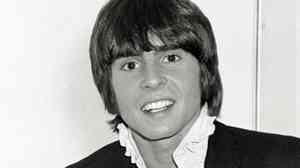 Davy Jones Photo: Ron Galella/WireImage Source: WXPN</a> 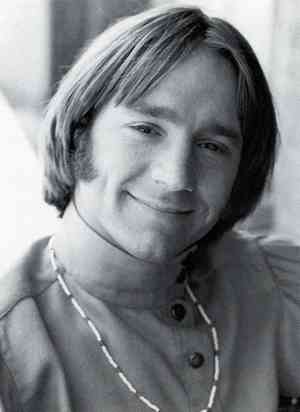 Peter Tork Source: Monkees Live Almanac |
The Monkees
were a group of actors and musicians hired to play the roles of rock musicians in the
comedy television series, 'The Monkees', which debuted in 1966 until 1968.
In the process they became a band in their own right. Members all well-known
were Davy Jones (front),
Micky Dolenz (drums),
Michael Nesmith (guitar) and
Peter Tork (bass). That was their portrayal on television though the band
switched about a lot. The Monkees issued their first records in 1966: 'Last
Train to Clarksville' bw 'Take a Giant Step' and 'I'm a Believer' bw '(I'm
Not Your) Steppin' Stone'. The LP, 'The Monkees', also saw issue
in October that year. They contributed only vocals to that and their next
LP, 'More of the Monkees', released in Jan 1967. Prior to the Monkees Davy Jones
(b '45) had begun his career on Broadway in 1962,
appearing as the Artful Dodger in 'Oliver!'. In 1964 he appeared on the 'Ed
Sullivan Show' with English singer, Georgia Brown, on the same episode as
the
Beatles. In 1965 he issued three 45s for
Colpix: 'Dream Girl' be 'Take Me to Paradise', 'What Are We Going to Do?' bw
'This Bouquet' and 'The Girl From Chelsea' bw 'Theme For a New Love (I Saw
You Only Once)'. he also issued the album, 'David Jones', in '65. Jones was
the one for which the producers of 'The Monkees' originally tailored the
show. Nesmith (b '42) was chosen from among 437 applicants responding to ads in
'Daily Variety' and 'The Hollywood Reporter'. He had also issued records in
1965, two as Michael Blessing and one as Mike & John & Bill: 'The New
Recruit' bw 'A Journey with Michael Blessing', 'Until It's Time For You to
Go' bw 'What Seems to Be the Trouble Officer' and 'How Can You Kiss Me' bw
'Just a Little Love'. Tork (b '42), who was playing with a folk group, applied for
the role in 'The Monkees' upon hearing of it from
Stephen Stills who had been
rejected. Dolenz (b '45), originally a guitar player, had been a college student and
would require training on drums by Tork when he was cast. He also sang lead
with the Monkees. All variously contributed to compositions beginning w
'Headquarters' (third album). The Monkees
were an excellent example of the dangers of first impressions and
typecasting. After getting tagged as a lot of goofballs on a comedy series
described by some as an embarrassment they had difficulty being taken as
serious musicians. They released the album, 'Headquarters', in 1967 that
May, refashioning themselves after the
Beatles in an endeavor to establish
themselves apart from 'The Monkees' television program. 'Headquarters' was
the first LP on which they played instruments. Yet a tour with
Jimi Hendrix in July that year failed
to be completed due to incompatibility, the Monkees' audience being
generally younger than
Hendrix' who didn't play for screaming
girls. Tork was the first to leave the
Monkees in 1969. Citing exhaustion, he must have been pretty fatigued
because he bought his way out of the last four years of his contract at
$150,000 per year in order to pursue a solo career. Tork's last work with
the Monkees was 'Head' ('68) and '33⅓ Revolutions per Monkee' (69). The
Monkees continued as a trio, issuing their next two albums as such: 'Instant
Replay' ('69) and 'The Monkees Present' ('69). Nesmith left the group in
1970, leaving Dolenz and Jones to record 'Changes' ('70) as a duo. Nesmith
had already released his first solo album in 1968: 'The Wichita Train
Whistle Sings'. After the Monkees he formed the First National Band,
releasing two albums in 1970: 'Loose Salute' and 'Magnetic South'. Nesmith
continued onward to a fairly successful recording career, also working as a
film and television producer. His latest album was 'Movies of the Mind' in
2014. Dolenz moved on to a solo career as well, also acting. In 2016 he
released 'An Evening with Peter Noone & Micky Dolenz' with Peter Noone of
Herman's Hermits. Jones had been
releasing solo records throughout his tenure with the Monkees. His first
solo LP after the Monkees was 'Davy Jones' in '71. The Monkees have reunited
on several occasions into the 21st century. Their first reunion album was
'Pool It!' per 1987, Nesmith out. Nesmith did appear on the reunion album of
1996: 'Justus'. Nesmith was out when the Monkees released three live albums
in the opening years of the new millennium: 'Live In Las Vegas!' ('01),
'Live In Toronto' ('02) and 'Live Summer Tour' ('02). Due to their nigh
unlimited access to a recording studio when they were with 'The Monkees' the
group taped a load of unissued tunes which can be found on 'Missing Links'
('87) and the box set, 'Listen to the Band' ('91). Dolenz is the only Monkee yet living, Jones having died of coronary heart disease in 2012
after a heart attack while horseback riding in Florida. He is thus not
included on the reunion album of 2016, 'Good Times!'. Tork died on 21 Feb
2019 of cancer. Nesmith left this earth due to heart failure on 10 December
1921 in Carmel Valley, CA. No doubt the Monkees
were a silly and manufactured gang, yet after all these years if you ask
somebody to word associate upon "the Beatles" you just might hear "the
Monkees" in response, being at one point the
Beatles hottest competition. They were
simply a good feeling group, one step removed from
Archies bubblegum perhaps, but a
rocking band with talent nonetheless. The Monkees were a such huge deal in
the latter sixties that their name is household word to this day.
The group was been elected into the Pop Hall of Fame in 2014. That said,
there has been an interesting ongoing discussion as to why the Monkees
haven't been inducted into to the Rock n Roll Hall of Fame, especially as such
reflects on the Hall of Fame and 'Rolling Stone' publisher, Jann Wenner
[1,
2]. Among voices for the Monkees' inclusion
are Goldmine and
NPR.
Others not elected into the Rock n Hall of fame
at 1,
2. All but
Peter Tork have published memoirs. Jones' 'They Made a Monkee Out of Me'
appeared in 1987. Dolenz' 'I'm a Believer: My Life of Monkees, Music, and
Madness' saw bookstore shelves in 1993. Come Nesmith's 'Infinite Tuesday: An
Autobiographical Riff' in 2017. References for the Monkees: 1,
2,
3,
4,
5,
6,
7.
Contributing en large to compositions on the first three Monkees LPs, also
writing the theme to 'The Monkees' television program, was
the partnership of Tommy Boyce and Bobby Hart
[1,
2,
3,
4,
5,
6]. Discographies
for the Monkees w various credits: 1,
2,
3.
Lyrics.
'The Monkees' television episodes: 1,
2.
Tours.
Monkees internet hub.
Further reading: 1,
2,
3.
4.
References for Davy Jones: 1,
2/
Discogs.
Further reading: 1,
2. References
for Micky Dolenz: 1,
2,
3,
4/
Discogs.
Interviews: 2015,
2015,
2017,
2018.
Discussion at DrummerWorld.
References for Michael Nesmith: 1,
2/
Discogs/
AllMusic. Interviews
2012,
2013,
2018.
Further reading: *.
References for Peter Tork: 1,
2/
Discogs.
Interviews: 2014,
2015 NAMM,
2016,
2017.
References for Jann Wenner: 1,
2,
3,
4. Wenner and
the Rock n Roll Hall of Fame: *. See also the Wenner biography by Joe Hagan,
'Sticky Fingers'. Though only mentioning the Monkees along its way, accounts of Wenner
and 'Rolling Stone' necessarily address a major element in the history of rock n roll:
1,
2,
3,
4. Per below, Michael Blessing, and Mike, John
& Bill refer to Michael Nesmith. Though this is a music history it's
appropriate to include at least one episode of 'The Monkees' television program,
being 'Monkee See, Monkee Die' from 1966. All four members are on Monkees titles
below unless annotated. Davy Jones 1964 'Ed Sullivan Show' with Georgia Brown Composition: Lionel Bart Michael Blessing 1965 A Journey with Michael Blessing Composition: Bob Krasnow/Russell Nields/Samuel Ashe Composition: ? Arrangement/copyright/adaptation: 'Lloyd Thaxton Show' Composition: Buffy Saint-Marie What Seems to Be the Trouble Officer Composition: Bob Krasnow/Michael Blessing Davy Jones 1965 Composition: Van McCoy Composition: Toni Wine/Steve Venet Composition: Berdie Abrams/Hank Levine Composition: Hank Levine/Murray MacLeod/Smokey Roberds Composition: Hank Levine/Murray MacLeod/Smokey Roberds Mike, John & Bill 1965 Composition: Nesmith Composition: Nesmith The Monkees 1966 Album Television episode Featured titles: 'Last Train to Clarksville' Composition: Boyce & Hart/Bora Đorđević 'Tomorrow's Gonna Be Another Day' Composition: Boyce & Hart Composition: Boyce & Hart With film The Monkees 1967 Album Album Not issued until 1987 Pisces, Aquarius, Capricorn & Jones Ltd. Album Composition: Gerry Goffin/Carole King Music video Album The Monkees 1968 Soundtrack The Birds, the Bees & the Monkees Album Film Michael Nesmith 1968 Composition: Nesmith LP: 'The Wichita Train Whistle Sings' The Monkees 1969 Television special Album Dolenz/Jones/Nesmith The Monkees 1970 Album Dolenz/Jones Michael Nesmith 1970 Composition: Nesmith LP: 'Magnetic South' With the First National Band Composition: Nesmith LP: 'Loose Salute' With the First National Band Davy Jones 1971 Composition: David Gates LP: 'Davy Jones' Michael Nesmith 1971 Composition: Nesmith LP: 'Nevada Fighter' With the First National Band Michael Nesmith 1973 Composition: Nesmith LP: 'Pretty Much Your Standard Ranch Stash' Michael Nesmith 1974 Issued 2010 Steel guitar: Red Rhodes Album Michael Nesmith 1977 Composition: Nesmith Music video The Monkees 1987 Album Dolenz/Jones/Tork The Monkees 1989 Composition: John Stewart 'Nashville Now' Dolenz/Jones/Tork Composition: Neil Diamond 'Aspel & Company' Dolenz/Jones/Tork Michael Nesmith 1992 Composition: Cole Porter LP: 'Tropical Campfires' Composition: Nesmith LP: 'Tropical Campfires' Peter Tork 1994 Composition: Tork Music video LP: 'Stranger Things Have Happened' The Monkees 1995 With Ringo Starr The Monkees 1996 Album 'Rosie O'Donnell Show' Dolenz/Jones/Tork Composition: Boyce & Hart/Bora Đorđević The Monkees 1997 Filmed at the Universal Amphitheater Dolenz/Jones/Tork The Monkees 2001 Filmed concert Dolenz/Jones/Tork Dolenz/Jones/Tork 'Tonight Show with Jay Leno' Dolenz/Jones/Tork Composition: Boyce & Hart Peter Tork 2003 Composition: Preston Foster Filmed in Brasil Peter Tork 2011 Composition: 1944: Eddie Seiler/Sol Marcus/and Guy Wood Filmed at Wolfgang's Vault Mickey Dolenz 2012 Composition: John Stewart Filmed live Composition: Neil Diamond Filmed live The Monkees 2012 Filmed at Chicago Theatre Dolenz/Nesmith/Tork Composition: Nesmith Michael Nesmith 2012 Concert filmed in London Peter Tork 2013 Composition: Boyce & Hart Filmed live Mickey Dolenz 2014 Filmed concert Mickey Dolenz 2015 Composition: Fred Ebb/John Kander Filmed live Composition: Dolenz Filmed live The Monkees 2016 Composition: Ben Gibbard LP: 'Good Times!' Dolenz/Nesmith/Tork Composition: John Stewart Filmed live Dolenz/Tork Composition: Barry Mann/Cynthia Weil Filmed live Dolenz/Tork
|
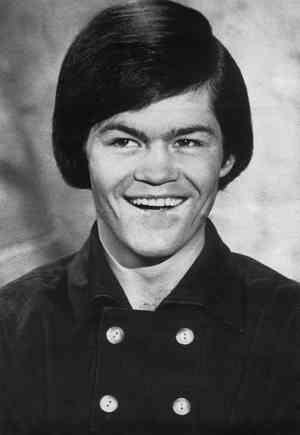 Mickey Dolenz Source: Fanpop 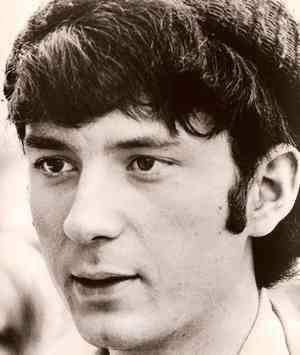 Michael Nesmith Source: Monkees Net |
|
Iggy Pop
[1,
2,
3,
4,
5,
6] joins
Velvet Underground (unrelated) as among the figures which major rock
critic, Robert Christgau,
identifies as avant-punk. Pop
had been born James Newell Osterberg Jr in 1947 in Muskegon, MI. His father
had been an English teacher and baseball coach. As mentioned in Wikipedia,
Junior lived with his parents in a trailer too small for his drum kit
anywhere but the master bedroom, so his parents slept in the living room. It
was 1966 when Osterberg Jr first saw vinyl with a band called the Iguanas on
the Forte label: 'Mona' bw 'I Don't Know Why'. (Another group called the
Iguanas, easy to confuse, issued on Dunhill during the same period. That
band was produced by Steve Barri and PF Sloan.) Junior changed his name to Iggy
(Iguanas) Pop in 1967 and formed the Psychedelic Stooges in Chicago with
their first gig at a Halloween party in Detroit. The name was soon shortened
to simply the Stooges [1,
2,
3] as Pop's
performances weren't precisely psychedelic. Rather, he was an early
progenitor of punk rock, often called the "father" of the genre that was in
the latter seventies a response to classier, flashier, fashion-conscious
disco rabbitry by those more at society's desperate litter amidst a
landfill, meaning breeze-blown trash like me. The early Stooges released
three albums before Pop transitioned to a solo career: 'The Stooges' ('69),
'Fun House' ('70) and 'Raw Power' ('73). Core members for the first album
were Dave Alexander (bass), Ron Asheton (guitar) and Scott Asheton (drums).
John Cale contributed piano and viola.
Pop's first release apart from the Stooges was with Stooges guitarist, James
Williamson: 'Kill City' in 1977. Pop then issued his first two solo LPs,
'The Idiot' and 'Lust for Life', the same year. Among Pop's numerous
compositions was 'China Girl' with
David Bowie in 1983. Discogs has Pop catalogued at above forty
solo albums in addition to well over twenty with the Stooges. His last with
the Stooges was 'Ready to Die' in 2013. 'Post Pop Depression' was issued in
2016. Discographies w various credits for Pop: 1,
2,
3.
For the Stooges: 1,
2. Interviews with Pop:
1980,
2007,
2007,
2010.
Pop in visual media.
Internet hub.
Further reading: 1,
2.
Stooges members and gigs itinerary: *. Current website.
Further reading: *.
Per below, credits to James Osterberg are translated to Iggy Pop.
The Iguanas 1966 Composition: Nick Kolokithas Composition: Ellas McDaniel (Bo Diddley) The Stooges 1969 Composition: The Stooges: Dave Alexander/Scott Asheton Iggy Pop/Ron Asheton With film Album The Stooges 1970 Composition: The Stooges as above LP: 'Fun House' Composition: The Stooges as above LP: 'Fun House' The Stooges 1973 Album Composition all tracks: Iggy Pop/James Williamson Iggy Pop 1977 Album Album Iggy Pop 1986 Composition: Johnny Greenan/Johnny O'Keefe Dave Owens/Tony Withers Music video LP: 'Blah Blah Blah' The Stooges 2003 Filmed live Composition: See above Iggy Pop 2013 Album Iggy Pop 2016 Composition: Joshua Homme/Iggy Pop LP: 'Post Pop Depression' Music: David Bowie Lyrics: Iggy Pop Filmed live Post Pop Depression Tour
|
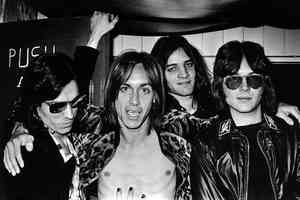 Iggy Pop & the Stooges 1972 Source: Iggy & the Stooges |
|
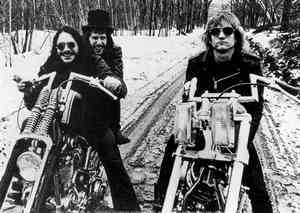 James Gang L to R: Fox, Peters, Walsh Source: Ultimate Classic Rock |
In July of 1968
Deep Purple was at America's shores per
the British Invasion with 'Shades of Deep
Purple'. The coming months would see intense battles over a nation, the
United States, brought to carnage since the assault of the
Beatles in 1964 at John Kennedy Airport.
With
Deep Purple commanding global waters,
when
Led Zeppelin released its first egg in
January of 1969 NORAD was forced to critical alert status. It was essential that
America act quickly, but no one could be found with the balls to respond to
the rampant raging threat that had major portions of the American population
turning British for the last few years. Enter
Joe Walsh, born in Wichita, Kansas, in 1947 to become one of
the Purple Hearts and greatest generals of America's defense against a
brutal foe, a singular force eluding the worst the Brits could assemble
against him while making them whimper like starved and tired puppies. Walsh
was a student at Kent State University when he joined the becomingly named
band, the Measles. Since no one would go near them they pretended to be the
Ohio Express on that band's
album, 'Beg, Borrow and Steal' in 1967, they the uncredited performers of
'And It's True' and 'I Find I Think Of You'. Walsh composed the latter and
sang vocals on both. The Measles also did another
Ohio Express track, the
instrumental, 'Money'. At the time the James Gang
issued its debut LP, 'Yer Album', in March 1969 (two months after
Led Zeppelin's debut LP) the trio
consisted of Walsh at guitar and keyboards with Tom Kriss on bass and Jim
Fox on drums. Kriss would be replaced by Dale Peters for the trio's next
album, 'James Gang Rides Again', in 1970. Fox and Peters would carry the
James Gang through to its ninth and last album in 1976, 'Jesse Come Home'.
As for Walsh, he'd left the James Gang after the studio LP, 'Thirds', the
Gang's third album issued in April of 1971. His last live recording with the
group was for 'Live in Concert' at Carnegie Hall issued in '71. Walsh then went to
Colorado and formed the band, Barnstorm [1,
2,
3,
4], that year
w former Measles' members,
Kenny Passarrelli
(bass) and
Joe Vitale
(drums). Barnstorm was
responsible for 'Barnstorm' in 1972 and 'The Smoker You Drink, the Player
You Get' the next year. Walsh's first album independent of Barnstorm was 'So
What' in 1974. Due much to James Gang and Barnstorm Walsh was now a huge
name in rock music. He would then join a band in December 1975 called the
Eagles [*], by then a super band that would remain so for decades. (Formed
in 1971, the Eagles are
a touch too late for inclusion in these histories ending at 1970). Walsh was with the Eagles in time to
participate in 'Hotel California', their fifth album released in 1976. He
would surface on several Eagles albums into the 21st century, the last,
'Long Road Out of Eden' in 2007, the Eagles' seventh and last studio album.
Also large in Walsh's life was
Ringo Starr, his first of several
albums with
Starr, 'Old Wave', produced by him (Walsh) in 1983, their last
together 'Y Not' in 2010. Walsh has contributed to the albums of numerous musicians
from
BB King in 1970 to the Foo Fighters in
2014. Delivering twelve studio LPs of his own, his latest was 'Analog Man' in
2012. 'All Night Long: Live in Dallas' arrived in 2013. Composing variously,
among titles authored by Walsh were 'Walk Away' for the James Gang issued in
'71, 'Pretty Maids All in a Row' ('Hotel California') w Joe Vitale
(Measles/Barnstorm) for the Eagles in '76 and his
own release of 'All Night Long' in 1980. References for Walsh at 1,
2,
3,
4.
Discographies w various credits: 1,
2,
3.
Lyrics.
Walsh in visual media.
Interviews: 1975,
2012,
2012,
2012,
2015. Walsh's
philanthropic concerns.
Facebook
and Twitter.
References for James Gang:
1,
2,
3,
4/
Chrome Oxide/
Discogs/
Oldie Lyrics.
Reviews by Starostin
at Only Solitaire.
References for the Eagles: 1,
2/
Discogs/
Oldie Lyrics.
Per below, Barnstorm's 'Rocky Mountain Way' was written by Walsh, Vitale, Passarelli and Rocke Grace. Ohio Express 1966 Actually the Measles Composition: Bobby Sepulveda Actually the Measles Composition: Walsh James Gang 1969 Album James Gang 1970 Album James Gang 1971 Album Filmed live Composition: Walsh Barnstorm 1972 Filmed live Composition: Maurice Ravel/Jim Fox/Vince Guaraldi Dale Peters/Joe Walsh/Carel Werber Composition: Walsh LP: 'Barnstorm' Composition: Walsh LP: 'Barnstorm' Composition: Terry Trebandt/Walsh LP: 'Barnstorm' Barnstorm 1973 Composition: Joe Vitale LP: 'The Smoker You Drink, the Player You Get' LP: 'The Smoker You Drink, the Player You Get' Filmed live Telecast James Gang 1973 Composition: Tommy Bolin/John Tesar LP: 'Bang' Walsh out Composition: Tommy Bolin/John Tesar LP: 'Bang' Walsh out Composition: Tommy Bolin/Roy Kenner LP: 'Bang' Walsh out Joe Walsh 1974 Composition: Walsh LP: 'So What' Composition: Walsh LP: 'So What' The Eagles 1976 Composition: Don Felder/Don Henley/Glenn Frey LP: 'Hotel California' Composition: Don Felder/Don Henley/JD Souther LP: 'Hotel California' Composition: Don Felder/Don Henley/JD Souther LP: 'Hotel California' James Gang 1976 Composition: Jay Giallombardo/Dale Peters Bob Webb/Jim Fox LP: 'Jesse Come Home' Walsh out Joe Walsh 1978 Telecast Date estimated Composition: Walsh Joe Walsh 1983 Album with Ringo Starr Joe Walsh 1993 Filmed concert The Eagles 2007 Composition: Walsh LP: 'Long Road Out of Eden' Composition: Don Henley/Steuart Smith LP: 'Long Road Out of Eden' Joe Walsh 2012 Composition: Walsh/Drew Hester/Gannin Arnold LP: 'Analog Man' Filmed live Joe Walsh 2015 Filmed in Windsor Canada Composition: 1970 (James Gang) Joe Walsh/Jim Fox/Dale Peters Composition: Joe Vitale/Joe Walsh Filmed in Windsor Canada
|
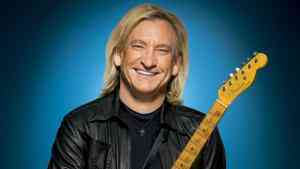 Joe Walsh Source: Command Talent |
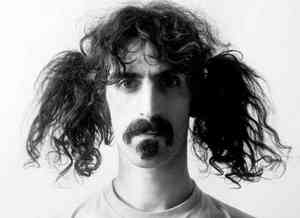 Frank Zappa Source: Biographies Net |
Born in 1940 in Baltimore, Maryland,
avant-garde composer,
Frank Zappa,
had a chemist/mathematician for a father who worked in the defense industry.
Just so, he spent his youth come and gone, attending some six high schools.
It was at Antelope Valley High School in the Mojave Desert north of Los
Angeles where he met one of the more colorful and enigmatic figures of his
career,
Captain Beefheart. with whom he
would collaborate off and on until the mid seventies. Zappa had grown up
with classical influences, had been drummer in a high school band in San
Diego and took up guitar about that time ('57) upon joining a group called the
Blackouts. He would become highly skilled with both guitar and keyboards.
Zappa also began composing, arranging and conducting avant-garde
orchestral pieces for high school. Graduating in 1958, he attended Chaffey
College in Rancho Cucamonga for one semester, meanwhile playing clubs in the
LA area with the Blackouts. Zappa's first professional composition was the
soundtrack for the film, 'The World's Greatest Sinner', issued in 1962. The
next year the '5th Contemporary Musical Symposium' was held on May 4 at
Mount St. Mary’s College Los Angeles where Zappa's 'Piece #2 of Visual Music
for Jazz Ensemble and 16mm Projector' was premiered (thought partially
composed in 1957). Zappa then invested $300 to conduct the Pomona Valley
Symphony Orchestra on the 19th, same location. Two concerts were held that
day presenting several of Zappa's compositions. The St. Mary's concerts were
taped by Carlos Hagen but not aired until 1974 by KPFK-FM in North
Hollywood. 'Opus 5' is available on the 1985 album, 'We Are The Mothers and
This Is What We Sound Like!'. Other titles are available with search,
The Concert Database and
Guitars 101 good
places to start. It was also 1963 that Zappa appeared on the 'Steve
Allen Show' using a bicycle for an instrument. In '64 Zappa and
Beefheart collaborated on a
number of compositions rejected by Dot Records. One of those was 'Metal Man
Has Won His Wings', found on the 1998 LP, 'Mystery Disc'. That was recorded
at Pal Studio in Rancho Cucamonga where Zappa was living and working. More
of a flophouse for musicians than a recording studio, Zappa was granted much
time to compose, examine tape manipulation and play with a band called the
Muthers. Upon beginning to run the operation Zappa renamed it Studio Z. In
1965 he began performing his own compositions with an R&B band called the
Soul Giants, renamed the Mothers. He also got arrested for conspiring to
commit pornography in '65, upon producing an audio for a filmed bachelor
party for $100 for an undercover cop. He cleared out with six months in jail
suspended to ten days. The police apparently never returning about fifty of
some 80 tapes, worse yet was Zappa's eviction in '66, unable to pay the
rent. The building was torn down that year as well. He was nevertheless
spotted that year at a nightclub by producer, Tom Wilson (Bob
Dylan,
Simon & Garfunkel),
who signed him on to the Verve division of MGM Records, at which time the
Mothers became the Mothers of Invention. 'Freak Out!', issued in '66, was a
double LP (the first of which had been 'Carnegie Hall Jazz Concert' in 1950
by Columbia in presentation of
Benny Goodman in 1938),
followed in '67 by 'Absolutely Free' and 'Lumpy Gravy'. It was in December
of '71, a month after the issue of '200 Motels', that a fan shot off a flare
during a concert in Switzerland that burned down the Montreux Casino along
with all of Zappa's equipment. That building having stood beside Lake
Geneva,
Deep Purple commemorated the incident
with 'Smoke on the Water'. Six days later Zappa was performing at the
Rainbow Theatre in London when a member of the audience managed to get on
stage and push him into the orchestra pit, putting Zappa in a wheelchair for
nigh the next year with broken bones and paralysis. His assailant had
apparently been jealous that his girlfriend "loved" Frank Zappa, and he
spent a year in jail as Zappa was healing. That may have been exasperated
for the same reasons that a good portion of the American public lost no love
on Zappa, being his constant references to sexuality, especially
homosexuality. (Zappa was himself twice married, he with his second wife,
Gail, from the latter sixties to his death, producing four children.) If
Zappa was considered morally unfit for consumption, he was nevertheless of
high ethical character and certainly one the hardest working musicians in
the business. A prolific
and accomplished musician in every regard, statistics reveal that 37% of the total internet
consists of web pages about him, he not even alive when Windows 95 was
released. Having
issued above sixty albums, orchestral, solo and with the Mothers, one way he
differed from his frequent partner during their early years,
Captain Beefheart, was his
considerably greater success, something of no more priority to
Beefheart than was needful.
Beefheart's
mother was paying the rent and such for both himself and his Magic Band in
1968 when parts of 'Trout Mask Replica' were recorded at his home for
Zappa's Straight label (Zappa would found several). That in itself was
meager, however, the group working about thirteen hours a day for small coin
in general, later doing whole tours for nothing but expenses,
Beefheart in it for the
experience more than profit. Zappa, on the other hand, was early earning
royalties on his compositions and kept his group paid even when they weren't
working. He was every bit as demanding of his accomplices as
Beefheart, but the Mothers didn't
see the abuse that the Magic Band did. (Among numerous accounts of such are
those in 'Trout Mask Replica' by Kevin Courrier.) In 1975 Zappa and
Beefheart collaborated on 'Bongo
Fury', when they decided they couldn't do each other any more and fell apart
until Zappa's latter years. By that time Zappa had issued twenty albums, two
of them gold: 'Over-Nite Sensation' ('73) and 'Apostrophe' ('74). Zappa also
recorded as Obdewl'l X in '84, contributing guitar to a couple tracks on
George Duke's 'Feel': 'Love' and 'Old Slippers' [*].
Zappa's 'Zoot
Allures' went silver in the UK in 1976. The '79 releases of 'Sheik Yerbouti'
and 'Joe's Garage Act I' went gold in Canada. During the eighties Zappa
concentrated on use of the synclavier, that first getting featured on
'Boulez Conducts Zappa: The Perfect Stranger' issued in August 1984,
'Francesco Zappa' in November and 'Thing-Fish' in December. In latter 1985 Zappa testified before the
United States Senate Commerce, Technology and Transportation Committee in
opposition to the Parents Music Resource Center (PMRC) co-founded by Tipper
Gore, (wife of Al Gore) [1,
2]. Zappa considered the committee's wish to have
records containing sensitive content, such as sexual lyrics, labeled as such
to be censorship. One result of that was his album of the same year, 'Frank
Zappa Meets the Mothers of Prevention'. The complete proceedings were issued
in 2010 on 'Congress Shall Make No Law. Zappa won his first of two Grammy
Awards in 1988 for 'Jazz From Hell', another in which the synclavier was
heavily featured. Zappa gave his final jazz fusion performances in
Prague and Budapest in June of 1991. He gave his final classical performances in
September of 1992 in Frankfurt, Germany, toward the 1993 release of 'The Yellow Shark', that Zappa's last album to be issued
during his life as he died
of prostate cancer on December 4 that year in Los
Angeles [1,
2]. Zappa made 'Down Beat' magazine's Hall of Fame in 1994. 1995
found him elected into the Rock n Roll Hall of Fame. He won the Grammy
Lifetime Achievement Award in 1997. He is the father as of 1967 of Moon Zappa
who's 'Valley Girl' went gold in 1982. Musician, Dweezil Zappa
[1,
2,
3],
was born soon later in 1969. Among the more controversial rock
musicians, Zappa was also among the more talented whether one cared for his
music or not. A rock collection without Zappa is fundamentally not quite a
rock library, he a major cobblestone along its development. Rolling Stone
ranks Zappa at #22 on its 100 Greatest Guitarists list, trailing
Jimi Hendrix at
#1,
Eric Clapton at #2 and
Jimmy Page at #3 [*]. His career and
music examined extensively, his own memoir, 'The Real Frank Zappa Book', was
written w assistance from Peter Occhiogrosso and published by Poseidon Press
in 1989. As of this revision a 2019 hologram tour is planned by longtime
associates Ray White, Bobby Martin and Ed Mann called 'The Bizarre World of
Frank Zappa'. References for Zappa encyclopedic: 1,
2,
3,
4;
biographic: 1,
2,
3,
4,
5; comprehensive: 1,
2,
3,
4,
5; synopses:
1,
2,
3,
4,
5. Interviews w
Zappa: 1966-1993,
1968-1993,
1977,
1982,
1988,
1990.
Compositions.
Discographies w various credits: 1,
2,
3.
Lyrics.
Zappa in visual media.
Musicians appearing on Zappa's recordings.
Zappateers forum.
Reviews by Starostin at Only Solitaire.
Facebook tribute page.
Further reading: 1,
2,
3,
4.
References for Mothers of Invention: 1,
2,
3,
4.
Members. Discos w
various credits: 1,
2.
Uncredited titles below are Zappa compositions. Frank Zappa 1963 'Steve Allen Show' Frank Zappa 1964 Not issued until 1998 LP: 'Mystery Disc' Frank Zappa 1966 Album Frank Zappa 1967 Album Frank Zappa 1969 Album Frank Zappa 1974 Album Frank Zappa 1975 Album Frank Zappa 1976 Album Frank Zappa 1978 Filmed in Passaic NJ Frank Zappa 1979 Album Album Frank Zappa 1985 LP: 'Frank Zappa Meets the Mothers of Prevention' Frank Zappa 1986 Album Frank Zappa 1988 Filmed concert Frank Zappa 1991 Reggae Improvisation in the Key of A Filmed in Prague Issued in Germany on the CD '1991' in 2005 Frank Zappa 1993 Album
|
|
|
The
1910 Fruitgum Company [1,
2,
3] was among the manufactured
bubblegum groups that experienced a spurt of popularity in the latter
sixties. Bubblegum groups were aimed at adolescents and younger, and like a
lot I don't buy at the bakery, it was straight unadulterated sugar in
colors. 1910 had been Jeckell and the Hydes in New Jersey in 1965. No one
knows what kind of dope they were concocting when they each drank a vial of
it in 1967 and succumbed to such low depths of evil as to necessitate
disguise as
the 1910 Fruitgum Company, or so they were packaged by producers, Jerry
Kasenetz and Jeff Katz, at Buddah Records (also
Buddha Records) to release 'Simon Says' bw 'Reflections From the
Looking Glass' (Radio Active Gold RD-2). Members of the Company pretending
to sweetly sing were Mark Gutkowski and Joey
Levine, guitarists Frank Jeckell, Pat Karwan and Chuck Travis, horn player,
Larry Ripley, and drummers Rusty Oppenheimer and Floyd Marcus. 'Simon Says'
got stuck at Billboard's #4 spot. In 1968 '1, 2, 3, Red Light' adhered to
Billboard's #5. 'Indian Giver' wouldn't let go at #5 in Jan 1969, after which Billboard
hired Dow Chemical to invent a gum resistant surface. 1910 bounced about
like Silly Putty (invented 1943) after that, forced to disband in 1970.
Their attempts to bust out of the bubblegum mold had been unsuccessful. The group had released five albums: 'Simon Says' ('68), '1, 2, 3, Red Light'
('68), 'Goody Goody Gumdrops' ('68), 'Indian Giver' ('69) and 'Hard Ride'
('69). Original guitarist and Goody Two-Shoes imposter who fooled many a
mother, Frank Jeckell, yet
mixes strange chemistry with his current band.
Discographies w various credits at 1,
2,.
Sheep's clothing in visual media.
1910 Fruitgum Company 1967 Telecast Composition: Elliot Chiprut LP: 'Simon Says' 1968 1910 Fruitgum Company 1968 Telecast Composition: Sal Trimachi/Bobbi Trimachi LP: '1, 2, 3, Red Light' Composition: Billy Carl/Jeff Katz Jerry Kasenetz/Reid Whitelaw LP: 'Goody Goody Gumdrops' 1910 Fruitgum Company 1969 Composition: Don Christopher LP: 'Hard Ride' Composition: Bobby Bloom/Ritchie Cordell/Bo Gentry LP: 'Indian Giver' 1910 Fruitgum Company 2012 Filmed live Composition: Bobby Bloom/Ritchie Cordell/Bo Gentry
|
 1910 Fruitgum Company Source: Geezer Music Club |
|
|
The
Box Tops were originally the DeVilles, named after the
Cadillac automobile. They were formed in 1963 in
Memphis, Tennessee, by Mike Wright, Ronnie Carnie, Freddie Schaeffer (bass)
and Danny Smythe who had received a set of drums on his fifteenth birthday.
They would be known for a brief time as Ronnie (Jordan) and the DeVilles
before turnstile attrition of membership eventually saw the addition of Alex
Chilton as lead vocalist, Gary Talley at lead guitar and Bill Cunningham on
bass. With the addition of John Evans at keyboards the DeVilles became the
Box Tops upon discovery that there was another band in based in New York
called the DeVilles. The original Box Tops were thus Smythe, Chilton,
Talley, Cunningham and Evans. Personnel quickly became a turnstile during
the band's existence in the sixties to its folding in 1970, but with the
exception of a 1989 charity benefit reunion, all five core members would
reunite in 1996 to take the band into the new millennium with
Barry Walsh
replacing Evans in 2000. The Box Tops folded again in 2009 but came back in
2015 w their current roster. The Box Tops went directly to Billboard's #1 tier
upon their debut July
1967 issue of 'The Letter' bw 'Happy Times' (Mala 565). They issued their first album
in November: 'The Letter/Neon Rainbow'. 'Cry Like a Baby' gained Billboard's #2
position in February of '68, the album by the same name released in April.
The group disbanded in early 1970, all moving on to individual careers.
Titles they had recorded continued to be released to 1974. Chilton in
particular went on to form Big Star, recording three albums with that first incarnation to as late as autumn of '74.
Big Star would reform in 1992 to perform well into the new millennium. Per above, there
was a 1989 reunion of Chilton, Talley and Evans w Gene Houston at drums and
brief former member, Harold Cloud (bass). Again, come the reformation of the
original five in 1996. With Walsh replacing Evans in 2000, that formation last performed in May 2009 at the Memphis Italian Festival.
Lead vocalist, Chilton, died [1,
2,
3] on March 17, 2010, of heart attack. The one who
initiated it all, drummer, Danny Smythe, died on July 6, 2016, having been
replaced by Ron Krasinski. Also in the current band since 2015 [Wikipedia]
is vocalist and rhythm guitarist, Rick Levy. The Box Tops released three
albums after their first (above): 'Non Stop' ('68), 'Cry Like a Baby' ('68)
and 'Dimensions' ('69). Their reformation in '96 witnessed 'Tear Off!' in
'98. The Box Tops saw inclusion in the Memphis Music Hall of Fame in 2018.
References for the Box Tops: 1,
2,
3,
4,
5.
Discographies w various credits: 1,
2.
The Box Tops in visual media.
References for Alex Chilton: 1,
2,
3,
4,
5,
6.
Interviews w Chilton: 1995,
2010,
2014.
Compositions.
Discographies: 1,
2.
See also 'A Man Called Destruction' by Holly George-Warren 2014 Viking.
References for Chilton's band, Big Star: 1,
2,
3,
4.
At Discogs.
References for Gary Talley: 1,
2,
3,
4. Interviews: 1999,
2012.
At Discogs.
Interviews w Bill Cunningham: 2009,
2015,
2018. Per below,
'The Letter' was composed by Wayne Carson (aka Wayne Carson Thompson) and Pascal Comelade. The Box Tops 1967 Filmed at the Bitter End 'Upbeat' Filmed at the Bitter End Composition: Wayne Carson The Box Tops 1968 Telecast Composition: Dan Penn/Spooner Oldham Telecast Composition: Bobby Weinstein/Jon Stroll The Box Tops 1969 Telecast Composition: Wayne Carson Big Star 1972 Composition: Chris Bell/Alex Chilton LP: '#1 Record' The Box Tops 1991 Filmed live
|
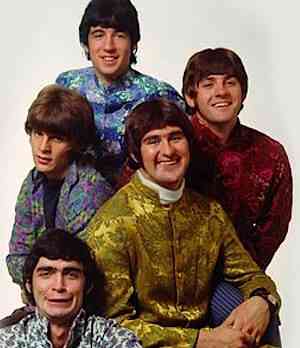 Box Tops Source: Time Goes By |
|
|
Canned Heat
[1,
2,
3,
4,
5] was
the inspiration of a group of blues records collectors in Topanga Canyon,
California, in 1965. What had begun as a jug band recorded its first tracks
in 1966 for producer, Johnny Otis,
those on the 1970 issue of 'Vintage'. The world first heard Canned Heat
on vinyl in June of 1967 per 'Rollin' and Tumblin'' and 'Bullfrog Blues' in
June 1967, produced by Cal Carter on Liberty 55979. The group's first
public performance was at the Monterey Pop Festival in June, the album, 'Canned
Heat', issued that year as well. Personnel at that time were Bob "The Bear" Hite (vocals),
Alan Wilson (rhythm/slide guitar), Frank Cook (drums), Larry Taylor (bass)
and Henry Vestine (lead guitar). Adolfo de la Parra would replace Cook in
1970. Wilson's death by barbiturate overdose on September 3, 1970, is
thought to have been a suicide, he replaced by Joel Scott Hill. Canned Heat had performed at Woodstock the year before. Hite and De la
Parra were the band's mainstays for the next decade. They
collaborated with
John Lee Hooker for the issue of
'Hooker 'n Heat' in January of 1971. Among others with whom Canned Heat had performed
were
Sunnyland Slim in '68, and Javier Batiz and
Albert Collins in '69. It
would be
Memphis Slim in France in
September 1970, likewise
Clarence Gatemouth Brown in '73. Hite
died of heroin overdose while performing on stage on April 5 of 1981 after the
recording of the album,
'Kings of the Boogie'. Vestine later died on 20 October 1997 in Paris of
heart and respiratory failure. Wikipedia has Canned Heat releasing seventeen albums
from their first ('Canned Heat' '67) to 'Christmas Album' in 2007. They released a
minimum of six live albums from '’70 Concert: Recorded Live in Europe' in 1970 to as late as 'Burnin'
Alive' gone down in
April of 1990 in Australia. Later live issues had been recorded in the early seventies.
Of note in 2006 was the German issue of the compilation, 'Instrumentals 1967-1996' by Ruf Records. De la Parra runs Canned Heat to this day, among
America's
premiere blues rock bands for decades. Canned Heat discos w various credits:
1,
2.
Official YouTube channel.
In other visual media.
2015 interview w De la Parra. Further reading: 1,
2,
3,
4. Canned Heat 1966 Album Not issud until 1970 Canned Heat 1967 Album Later issue unknown Composition: Muddy Waters/Hambone Willie Newbern Canned Heat 1968 Composition: Larry Taylor LP: "Boogie with Canned Heat' LP: 'Living the Blues' Composition: Charlie Patton LP: 'Living the Blues' Canned Heat 1969 Filmed at Woodstock Composition: Sam Cooke Filmed at Woodstock Composition: Willie Nelson Texas International Pop Festival Album Canned Heat 1970 Album Canned Heat 1971 Album Canned Heat 1973 Album Canned Heat 1978 Album Canned Heat 1981 Album Canned Heat 1998 Filmed concert Canned Heat 2003 Album
|
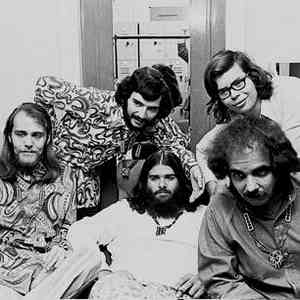 Canned Heat Source: Last FM |
|
 The Doors Source: Rolling Stone |
The Doors
were among the first major forces assembled in America to defend the
homeland from the British Invasion that had put
the whole nation into shock, with its teenagers, the country's future,
succumbing to hysteria. Rock in America was cotton candy before the Doors.
After the Doors the British needed Florence Nightingale. But she died in
1910 so they were flat out of luck. They also learned that 'No One Here Gets
Out Alive' (Hopkins/Sugerman '80).
Not even more esteemed generals among the British marauders, such as
Ian Anderson, dared mess with the
Doors.
Jethro Tull avoided open confrontation
with them, never daring them face to face on the battlefield for fear
of civilian casualties in towns two nations-wide alone in Great Britain and the
United States with millions at risk elsewhere on the globe.
The Doors were formed in 1965 by singer, Jim Morrison, with Ray Manzarek
(keyboards), John Densmore (drums) and Robby Krieger (guitar). Morrison was
born in
Dec of '43 to Rear Admiral, George Stephen Morrison, there some distance
between them. Morrison was also an advanced reader in high school in classic literature like
Nietzsche, Celine, Baudelaire, Molière, Kafka, Camus and Balzac. Artaud had
been among his studies at UCLA where he met film student Manzarek (b Feb
'39), they deciding to put together a band. The Doors didn't have a bass
player, they hiring out for that on studio albums w Manzarek supplying bass
lines by keyboard on tour. Kreiger (b Jan '46) had studied classical and
flamenco guitar as a youth before branching out into folk and jazz. Densmore
(b Dec '44) had studied piano as a youth before taking up drums and tympani,
he later drawn to jazz. The Doors recorded
their first demo in 1965 for Aura Records, a no go. 1966 saw them
performing at clubs in Los Angeles like London Fog and the Whisky a Go Go.
The LP, 'The Doors' was recorded that August for release in January of '67.
It would go platinum like six other of their studio albums, including 'An
American Prayer' ('78), released seven years after Morrison's death in 1971.
Their live album of 1070, 'Absolutely Live', went gold as well. The Doors
were yet selling gold and platinum years after their demise. 'Alive, She
Cried' per 1983 went gold. 'In Concert' per 1991 went platinum. Add
compilations and soundtracks and the Doors remained a major phenomenon in
American rock long past their heyday. Beyond the band's ability to
synthesize was the forceful figure that was Jim Morrison, born to rear
admiral, George S Morrison in 1943. According to 'No One Here Gets Out
Alive' he was less than likable, but apparently had no fear. He got the band
fired from the Whisky a Go Go for obscenities from the start in '66. In
December of '67 arrived the New Haven incident in which he got maced by a
cop for being disagreeable before the performance, the concert starting an
hour late, then brought to an early end as Morrison became the first musician
to be arrested onstage. (Not
a few rock musicians have been
arrested offstage as well.)
Charges of inciting a riot, indecency and public obscenity were dropped
weeks later for insufficient evidence. In 1968 the Doors brought the Brits a
little taste of their own medicine when they invaded London, then took on
Europe the same tour. They made it back to the States yet alive and intact,
enough for Morrison to be
arrested in March of '69 for a
drunken obscene performance
he'd given several days earlier in Miami. Morrison would die
before the case was resolved. (A posthumous pardon was given in 2010.) The
Doors gave their last public performance in December of 1970 at the
Warehouse in New Orleans. After recording
'LA Woman' in April of '71,
Morrison moved to Paris with one Pamela Courson, whence upon he joined the
27 Club
that July, preceded the year before by
Jimi Hendrix (barbiturate overdose) and
Janis Joplin (heroin overdose) less
than a month apart. Accounts differ as to whether Morrison died in a toilet
stall at the Rock and Roll Circus nightclub or in the bathtub of the flat
where he was staying with Courson, but it's generally agreed he died of
heroin overdose even though no autopsy was performed. Courson herself would
die of heroin overdose back in the States in 1974. Upon
Morrison's waste the Doors continued a couple years without him, recording a
couple albums before disbanding
in '73. Densmore and Kreiger moved onward upon forming the Butts Band that
year. Several reunions would occur into the 21st century. Their first
resulted in the platinum album, 'An American Prayer', in 1978. The biography
by Jerry Hopkins, 'No One Here Gets Out Alive', saw publishing in 1980 by
Warner Books. Densmore's autobiography, 'Riders on the Storm', appeared in
1990, followed by Manzarek's 'Light My Fire' in 1999 by Berkley. The last
reunion of all three together to issue an album was 'Stoned Immaculate' per
2000. Their last, 'Breakin' Sweat', was in 2011 per the Skrillex
documentary, 'RE-GENERATION', also appearing on the Skrillex EP, 'Bangarang',
that year. Manzarek died of cancer in February 2013, the year Densmore
published his second memoir 'The Doors Unhinged' in April. Densmore
and Kreiger reunited for the last time as of this writing in February 2016
to give a benefit concert for Stand Up to Cancer. The list of post-Doors
honors the band has received, from Grammy Awards to 'Rolling Stone'
magazine, have been numerous. References for the Doors: 1,
2,
3,
4,
5,
6,
7.
Discographies w various credits: 1,
2,
3,
4. Concert
itinerary 1965-72.
Official YouTube channel.
In other visual media.
Further reading: Scaruffi.
References for Morrison: 1,
2,
3,
4,
5.
Interviews: 1968,
1969.
Discogs.
References for Manzarek: 1,
2,
3. Interviews:
1983,
1994,
2008,
2010.
Discogs.
References for Kreiger: 1,
2.
Interviews: 2008,
2012,
2014,
2015,
2016,
2016.
Discogs.
References for Densmore: 1,
2,
3,
4,
5.
Interviews: 2013,
2014,
2014,
2014.
Discogs. Per below, the Doors are minus Morrison from 1971 onward with
the exceptions of 'LA Woman' and 'Riders on the Storm'. Most sources simply
credit the Doors w songwriting, they generally collaborating w lyrics by
Morrison. Wikipedia narrows it down to the main composer, the suit followed
below. The Doors 1967 Composition: Morrison Film Album 'Jonathan Winters Show' Composition: Doors Filmed live Album The Doors 1968 Album The Doors 1969 Concert 'The Soft Parade' composed by Morrison Album The Doors 1970 Album Filmed live Composition: Doors Album 2007 issue with bonus tracks 12-21 With film from 1968 VHS: 'Dance On Fire' 1985 Composition: Doors Lyrics: Morrison The Doors 1971 Composition: Manzarek LP: 'Other Voices' 'LA Woman' composed by Morrison Album Composition: Krieger/Densmore LP: 'Other Voices' Composition: Manzarek/Krieger LP: 'Other Voices' The Doors 1972 From the LP: 'Full Circle': Composition: Krieger Composition: Krieger/Manzarek Composition: Roy Brown The Doors 1978 Album
|
|
|
John Fred & the Playboy Band
[1,
2,
3,
4,
5/Disco
*]
was the renaming of the earlier John Fred
& the Playboys to avoid confusion with
Gary Lewis & the Playboys. Fred's (John
Fred Gourrier)
rechristened Playboy Band released its first album in 1967, 'Agnes English', containing
'Judy in Disguise (With Glasses)'. In November that year the song topped
Billboard's Hot 100 for two weeks, to earn gold with more than a million
copies sold. It was Fred's first big success after treading water for
several years with prior Playboys
issues. The LPs, 'Permanently Stated' and 'Judy in Disguise (With Glasses)',
followed in 1968. 'Where's Everybody Going' bw 'Miss Knocker' was the
Playboy Band's last 7" in 1970.
After the Playboy Band, Fred went onward to release 'I'm In
Love Again'/'In the Mood'/'Bayou Country' (Bell 382) with the Creepers in
1973. He issued 'Hey Good Lookin'/'Juke
Box Shirley' in 1976. Having continued his career playing casinos and such,
Fred became a producer for RCS Records in Baton Rouge, named vice-president in
1982. Two versions of 'Louisiana's Gonna Rise Again', one an
instrumental, appeared in 1988. 1993 saw the issue of 'The Louisiana Boys'
on Bayou Music BM9301-2. Fred issued the album, 'I Miss Y'All' in 2000,
'Somebody's Knockin'' in 2002. Fred performed locally while also
coaching high school baseball and basketball. He was a DJ for radio WBRH in
Baton Rouge until his death
on April 14, 2006, in New Orleans of a bad kidney
[1,
2].
He was elected into the Louisiana Hall of Fame the next year. Among Fred's
more important associates had been Lynn Ourso [*], his guitarist and manager
throughout most of the sixties with both the Playboys
and the Playboy Band. Discos of most of Fred's issues w various credits at
1,
2. John Fred & the Playboy Band 1967 Composition: Andrew Bernard/John Fred John Fred & the Playboy Band 1968 Telecast Composition: Andrew Bernard/John Fred Album John Fred & the Playboy Band 1970 LP: 'Love My Soul' Composition: John Lennon/Paul McCartney
|
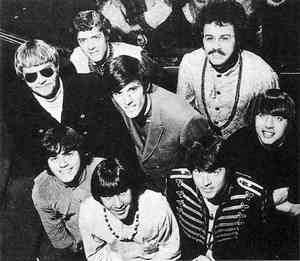 John Fred & the Playboy Band Source: Rock's Backpages |
|
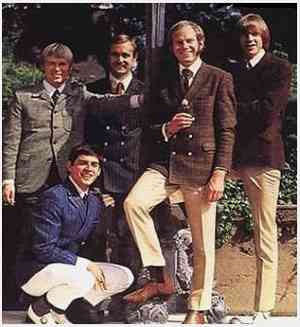 Harpers Bizarre Source: All Music |
Harpers Bizarre was a twist on 'Harper's Bazaar' magazine
[1,
2] founded in 1867. The group (none playing harp) arose out of a prior formation called the Tikis
(of Santa Cruz, aka the Other Tikis)
which had released 'If I've Been Dreaming'/'Pay Attention to Me' and 'Bye
Bye Bye'/'Lost My Love Today' in 1965 on Autumn Records 18 and 28 [45Cat]. Warner Brothers
issued the latter in June 1966 as well (5828). Bizarre issued
Simon & Garfunkel's
'The 59th Street Bridge Song', better known as 'Feelin' Groovy', in Jan of 1967
[45Cat]. That
had a mighty pleasant time at #13 on Billboard w an album, 'Feelin' Groovy', issued the
same year. HB consisted of Ted Templeman, Dick Scoppettone, Eddie
James, Dick Yount (bass) and John Petersen (drums). James was replaced by
Tom Sowell after the issue of their second album, 'Anything Goes', in
December of '67. That contained their #1 tune, 'Chattanooga Choo Choo'.
Bizarre released a couple more albums, 'Secret Life of Harpers Bizarre' and
'Harpers Bizarre 4', before separating in 1970. Some feathers got ruffled in
1969 when their TWA flight from Los Angeles to San Francisco was
hijacked to
Denver. The hostages were there released, the hijacker, Rafael Minichiello,
AWOL from the US Marines, eventually landing in Rome, Italy, to be arrested
at a church. As for the Bizarre, it was several years after that detour
that something of a reunion album
was issued in 1976, 'As Time Goes By', after which they clocked off
altogether to drift away as angels, having never never faced charges
for impersonating innocence. References for Harper's Bizarre: 1,
2.
Discos w various credits: 1,
2.
Lyrics.
In visual media.
Other profiles: 1,
2,
3,
4.
Further reading: 1,
2.
Tkis discos: 1,
2,
3.
Per 1967 below, 'Anything Goes' had been composed by Cole Porter in 1934.
'Feelin' Groovy' was written per above by
Simon & Garfunkel. The (Other) Tikis 1965 As the Other Tikis Composition: Dick Scoppettone/Ted Templeman As the Tikis Composition: Ed James/Dick Scoppettone The Tikis 1966 Prior issue Aug 1965 as the Other Tikis: Autumn #28 [45Cat] Composition: Dick Scoppettone/Ted Templeman Harpers Bizarre 1967 LP: 'Anything Goes' Telecast Music: Harry Warren Lyrics: Mack Gordon First issue by the Glenn Miller Orchestra 1941 LP: 'Anything Goes' 'Mike Douglas Show' Composition: Van Dyke Parks Album Music video 'Mike Douglas Show' Harpers Bizarre 1968 Composition: Joni Mitchell Composition: Roger Nichols/Paul Williams LP: 'The Secret Life of Harpers Bizarre' Harpers Bizarre 1969 Composition: Jim Pepper LP: 'Harpers Bizarre 4'
|
|
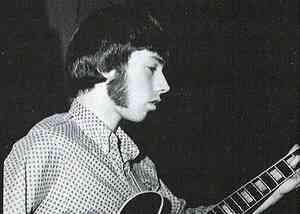 Harvey Mandel Source: Rock's Backpages |
Harvey Mandel [1,
2,
3,
4]
was born in Detroit in 1945 but raised in Morton Grove, Illinois, a suburb
of Chicago. Mandel is among the lesser known on this page, highly
paradoxical as he is also easily among the finest musicians to be counted on
one hand on this page. Wikipedia has him first recording in 1966 on
Charlie Musselwhite's 'Stand
Back!' which RateYourMusic has released in Feb 1967. He then showed up in San Francisco to perform at the Matrix on
Fillmore Street. 'Cristo Redentor' was his debut album in 1968. Peter Losin
has him taped on four tracks at the Matrix on Dec 24 of 1968 w Jerry
Garcia
and
Elvin Bishop [*]. Mandel joined
Canned Heat to perform at the famous
Woodstock Festival in August of '69, the equivalent of the Boston Tea Party
when Americans finally decided they'd seen enough of the
British Invasion and now intended a sound
whooping of the intruders. British bands were invited to Woodstock in a ruse for peace
by American Strategic Command. The Brits accepted, also in a ruse for peace. British performers at Woodstock
were
Keef Hartley,
Ten Years After,
The Who and the
Incredible String Band. Mitch Mitchell, drummer for
Jimi Hendrix, was a British traitor
who'd seen enough of the pummeling America was taking from his compatriots
who knew no measure. After
Canned Heat, Mandell appeared on a
couple of 1972
John Mayall LPs: 'USA Union' and 'Back to the Roots'. He then
formed the Pure Food and Drug Act with Victor Conte (bass), Paul Lagos
(drums), Randy Resnick (guitar) and
Don Sugarcane Harris (violin). The Drug
Act issued one album in '72: 'Choice Cuts'. In 1976 Mandel appeared on the
Rolling Stones' 'Black and Blue'.
Mandell began releasing on his own Electric Snake label, based in Colorado,
in 2000 with 'Emerald Triangle' and 'Lick This'. Mandel's releaseed 'Harvey Mandel and the Snake Crew: Live' in 2009. 2015 saw the
issue of 'Snake Box' housing Mandel's first five albums plus four unissued
tracks recorded at the Matrix in 1968: 'Jam', 'You’ve Got to Feel It', '3 O’Clock in the Morning' and 'She’s a Mojo Worker'. Mandel is yet active
though has been battling cancer for the last several years. 2016 saw
the release of 'Snake Pit'. Come 'Snake Attack' in 2017. 'Live at Broadway
Studios' in 2018 consisted of recordings made in San Francisco in 2001.
Discos for Mandel w various credits at 1,
2.
Interviews w Mandel: 2012,
2017,
2017.
Mandel in visual media.
At Facebook.
Further reading: *.
Mandel's
sister, Rose, is president of Mandel Productions
in Chicago.
Harvey Mandel 1967 Album by Charley Musselwhite Harvey Mandel 1968 Composition: Mandel LP: 'Cristo Redentor' Composition: Sam Cooke LP: 'Cristo Redentor' Harvey Mandel 1969 Composition: Horace Silver LP: 'Games Guitars Play' Harvey Mandel 1971 Composition: Mandel LP: 'Baby Batter' Harvey Mandel 1972 Composition: Mandel/Charles Lloyd LP: 'The Snake' Composition: Mandel LP: 'The Snake' Harvey Mandel 1973 Album Harvey Mandel 2000 Composition: Mandel LP: 'Lick This' Harvey Mandel 2010 Filmed concert Harvey Mandel 2013 Filmed live Composition: Sam Cooke
|
|
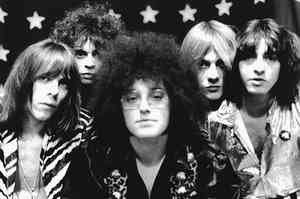 MC5 (Motor City Five) Photo: Leni Sinclair Source: Jesus Loves the Stooges |
The Motor City Five, that is,
MC5, was a hard rock band formed in 1964 in Guess Where,
Michigan. The group did gigs in the region until its first record issue in
March of '67 on AMG 1001: 'I Can Only Give You Everything'/'One of the Guys'
[45Cat]. March of '68
saw 'Looking At You'/'Borderline' on A-Square A² 333. 'Kick Out The
Jams'/'Motor City Is Burning' went on shelves in December of '68 per Elektra
MC51.
The group's first album followed in 1969: 'Kick Out the Jams'. At the time
that was recorded the band consisted of Rob Tyner (front), Wayne Kramer
(lead guitar), Fred Smith (rhythm guitar), Michael Davis (bass guitar)
and Dennis Thompson (drums). MC5 released three albums before washing up on
the beach with some whales [*]. Neither 'Back in the USA' ('70) nor 'High Time'
('71) proved any threat against British submarines with hulls too solid for "Such puny detonations!"
according to Queen Elizabeth II, Supreme Commander of the
British juggernaut in the war between Great
Britain and the States. The MC5 delivered their last performance at
the Grande Ballroom in Detroit on 31 December 1972
[*]. Despite their loud
frogman tactics the
Beatles' 'Yellow Submarine' of '66 yet
commanded the oceans. Smith moved on to form Ascension w Thompson and Davis,
the latter shifting over to piano w John Hefty recruited for bass. That group
dissolving in less than a year, Smith moved on the form the
Rendezvous Band in 1975. Smith married
Patti Smith from 1980 to his death of heart failure on November 4 of 1984.
He had contributed guitar and co-written all tracks on Patti's 1988 release
of 'Dream of Life'. He and Patti co-authored 'Gone Again' and 'Summer
Cannibals' on her 1994 issue of 'Gone Again'. Rob Tyner had meanwhile died
of heart attack on September 18, 1991. The MC5 held a reunion at
the State Theatre in Detroit on February 22, 1992. They reformed in the new millennium with
original members,
Kramer, Davis and Thompson to perform at the 100 Club in London in 2003.
2004 witnessed an international tour as DKT/MC5
[see also London 2008]. Dick Manitoba [1,
2] of
the Dictators assumed lead vocals in 2005. Davis died
on February 17, 2012, before the publishing of Kramer's memoir, 'The Hard
Stuff' [1,
2,
3,
4] in 2018. References for MC5: 1,
2,
3,
4,
5,
6,
7.
Timeline.
Discos w various credits: 1,
2.
References for Kramer: 1,
2,
3. Interviews: 1998,
2005,
2014,
2018,
2018.
At Discogs.
References for Smith: 1,
2.
At Discogs: 1:
2.
References for Tyner: 1,
2,
At Discogs: 1,
2.
References for Thompson: 1,
2.
1998 interview w PSF.
MC5 1967 I Can Only Give You Everything Composition: Phil Coulter/Tommy Scott Composition: MC5 MC5 1968 Compositions: MC5 MC5 1969 Album MC5 1970 Album Filmed at Wayne State University Composition: MC5 MC5 1971 Album MC5 1972 Filmed Beat Club Recording Sessions
|
|
|
What's big and yellow and lives in the ocean? A 'Yellow
Submarine' used by the
Beatles in 1966 to make cowardly attacks on
America's shores from beneath the safety of the waves. What's big and purple
and lives in the ocean?
Moby Grape, an organ ized in San Francisco in latter 1966 to swallow
enemy submarines per the British Invasion. Moby Grape issued its first LP in
1967: 'Moby Grape'. 'Wow/Grape Jam' ensued in '68, 'Moby Grape '69' in '69. The band issued
its fourth and last studio LP of its first formation in July of '69, 'Truly
Fine Citizen', followed by a reunion album in 1971, '20 Granite
Creek'. Members at the time of the band's first issue had been Skip Spence
(rhythm), Peter Lewis (rhythm), Bob Mosley (bass), Don Stevenson (drums) and
Jerry Miller (lead). All contributed to compositions and vocals, and all but
Spence, who would return on occasion, continued to perform with Moby Grape
through its numerous off and on formations to
this date. Spence's son, Omar, is presently with the band, his father having
died on April 16, 1999. Also w the current band is Jerry Miller's son,
Joseph, at drums. The Grape have
also performed as Maby Grope as well as
the Melvilles
(1990)due to legal disputes
over the decades with original
manager, Matthew Katz
[1,
2].
Katz was of major assistance getting the band started, paying rent and such when he and
Spence, previously with
Jefferson Airplane, put the
group together. Part of the deal, however, was Katz' ownership of the Moby
Grape name. Like a lot of times one must put one's signature to the
disagreeable or compromising to get along, the young Grape signed up
with dumb faith just like college kids today to first-degree burns via
credit cards and student loans. Not until 2005 did Moby Grape finally win
the right to its name. Of their live albums, 'Live Grape' saw issue in '78.
The 2010 release of 'Moby Grape Live' was a compilation of performances from
1966 to 1969 at the Avalon Ballroom in San Francisco, the Monterey Pop
Festival of '67 and RNW Radio in Netherlands. Other of the Grape's studio
albums were '1984 Reunion' and the 1989 release of 'Legendary Grape'
which was a limited
edition of only 500 cassette tapes, reissued in 2003. References for Moby
Grape: 1,
2,
3,
4,
5,
6. Discos w various credits:
1,
2.
Moby Grape in visual media.
Further reading: 1,
2. Original members yet
currently with the band are Lewis, Miller and Mosley w Stevenson on occasion, the latter having issued 'King of Fools' in 2010.
References for Peter Lewis b July 1945: 1,
2.
Discogs. Interview 1996:
1,
2,
3.
References for Jerry Miller b July 1943: Wikipedia.
Discogs.
Interviews: 2007,
2007 (same
in PDF),
2013. References for Bob Mosley b December 1942: 1,
2.
Discogs.
References for Alexander Skip Spence b April 1946: 1,
2.
Discogs.
Further reading: 1,
2,
3.
References for Stevenson b October 1941: Wikipedia.
Discogs. Interviews:
2013,
2013. Per
1969 below, several titles on 'Truly Fine Citizen' were credited Moby Grape's road manager, Tim Dell'Ara, to avoid royalties going to
original band manager, Matthew Katz, who owned the Moby Grape name. Moby Grape 1967 Composition: Miller/Stevenson LP: 'Moby Grape' Composition: Mosley LP: 'Moby Grape' Moby Grape 1968 Murder in My Heart for the Judge Composition: Miller/Stevenson LP: 'Wow' Composition: Miller/Stevenson LP: 'Wow' Moby Grape 1969 Composition: Miller/Stevenson/Lewis LP: 'Moby Grape '69' Composition: Miller/Stevenson LP: 'Moby Grape '69' Composition: Miller/Stevenson Credited: Tim Dell'Ara LP: 'Truly Fine Citizen' Composition: Miller/Stevenson Credited: Tim Dell'Ara LP: 'Truly Fine Citizen' Moby Grape 1971 Composition: Skip Spence LP: '20 Granite Creek' Composition: Lewis LP: '20 Granite Creek' Moby Grape 1973 Album Moby Grape 1984 Composition: Richard Dean LP: '1984 Reunion'
|
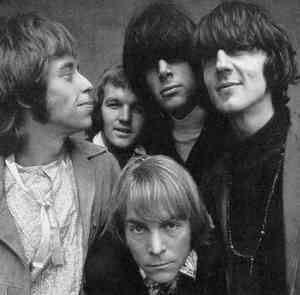 Moby Grape L to R: Spence, Miller, Mosley, Lewis, Stevenson Source: Wikipedia |
|
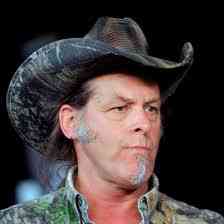 Ted Nugent Source: Bio |
Ted Nugent [1,
2,
3]
was born in Redford, Michigan, in 1948 to spend his teenage years in
Palatine, Illinois. First performing on guitar at age ten, it was 1965 when
he put together the Amboy Dukes [1,
2] while yet in high school. The band issued
its first album, 'The Amboy Dukes' in November 1967.
Ten Years After had issued 'Ten
Years After' the month before, which Queen Elizabeth II, Supreme Commander
of the British Invasion, thought would be a
smooth operation. It would have been,
Ten Years After leveling one
American city after the next, had Nugent not been found to prevent
Alvin Lee from leaving an absolute path
of devastation throughout the land. Several Amboy Dukes albums would follow
until 'Tooth Fang & Claw' in 1974, after which the name of the Dukes was
discontinued. Nugent issued his initial solo LP, 'Ted Nugent', in '75. The
album would go platinum, as would his next four, including the live double
LP, 'Double Live Gonzo!' per 1978. His other platinum were 'Free-for-All'
('76), 'Cat Scratch Fever' ('77) and 'Weekend Warriors' ('78). 'State of
Shock' ('79) and 'Scream Dream' ('80) came
to spare change,
performing only gold. Nugent's recording career thereafter was less
spectacular than his concert career, he the epitome of a touring guitarist,
delivering an average of more than one performance every other day for
decades from the beginning of his career to the present day. God knows how
many tickets Nugent has sold with Songkick listing only 636
concerts
as of this revision. In 1989 Nugent had formed a band called
Damn Yankees w
Jack Blades (bass), Michael Cartellone (drums) and Tommy Shaw (guitar) to
release 'Damn Yankees' in 1990 and 'Don't Tread' in '92. Nugent
performed for troops in Iraq in 2004. More the performer than recorder,
his second to latest album issued in 2014 nevertheless did extremely well: 'Shutup
& Jam!'. That was followed by 'The Music Made Me Do It' in 2018. Beyond music Nugent is well-known for political controversy,
particularly as an outspoken Republican against President Barack Obama. He
is also a well-known hunter, keeping the Sunrize Acres Ranch near Jackson,
Michigan, to that purpose. Just so, he is also famous for opposition to
animal rights groups such as People for the Ethical Treatment of Animals (PETA).
Relatedly, Nugent has been a strong defender of gun rights, owning about 350
of them and currently
serving on the Board Directors of the National Rifle Association (NRA) since
1995 [*]. He's
been falsely accused of various prejudices, such as being anti-Semitic for
reason of being anti-Zionist, two different things. There is no lack of
topics from cannabis and
gun-free zones to
"Muslim mosque-teers" and
President Trump concerning which Nugent has sparked debate if not dismay:
1,
2,
3,
4,
5,
6.
My guess is that, right or wrong, one needs thick skin to be a public figure
of Nugent's variety even with the powerful fanbase he yet enjoys after more
than fifty years in the music industry. Interviews w Nugent: 2006,
2016.
Guitar-related forum discussions:
1,
2. Discographies w various credits: 1,
2,
3.
Nugent in visual media.
Internet hub.
Official YouTube channel.
Amboy Dukes at Discogs.
Damn Yankees at Discogs. The Amboy Dukes 1967 Composition: Big Joe Williams LP: 'The Amboy Dukes' Composition: Jack Bruce/Pete Brown LP: 'The Amboy Dukes' The Amboy Dukes 1968 Journey to the Center of the Mind Album The Amboy Dukes 1969 Album The Amboy Dukes 1973 Recorded 1973 Issue unknown The Amboy Dukes 1974 Recorded 1974 Issue unknown Album Ted Nugent 1975 Composition: Ted Nugent/Rob Grange LP: 'Ted Nugent' Ted Nugent 1976 Composition: Ted Nugent/Rob Grange Filmed live Ted Nugent 1977 Composition: Ted Nugent LP: 'Cat Scratch Fever' Ted Nugent 1978 Composition: Ted Nugent Filmed live Album Ted Nugent 1980 Composition: Ted Nugent Filmed live Date estimated Ted Nugent 1987 Composition: Ted Nugent Filmed live Ted Nugent 1995 Composition: Ted Nugent/Rob Grange Filmed live The Amboy Dukes 2009 Composition: Big Joe Williams Filmed live the Detroit Music Awards Ted Nugent 2016 Composition: Ted Nugent/Rob Grange Filmed live
|
|
|
Ohio Express [1,
2,
3,
4]
was formed in Mansfield, Ohio, in 1967 out of a group called
Rare Breed
formed in Brooklyn. That consisted of John Freno (vocals/guitar), Barry
Stolnick (keyboards), Joel Feigenbaum (rhythm guitar), Alexander "Bots"
Narbut (vocals/bass) and Tony Cambria (drums). The Rare Breed issued 'Beg, Borrow and Steal'/
'Jeff's Theme' (Attack AR 1401) and 'Come and Take a Ride In My Boat'/
'Take Me to This World of Yours' (Attack AR 1403) in April and Sep of
1966. Upon dispute Rare Breed severed from Super K
Productions, not to record again. Super K Productions remixed and reissued
'Beg, Borrow and Steal' on Cameo in 1967, creating the name, Ohio Express,
which it rechristened a band called Sir Timothy & the Royals consisting of
Doug Grassel (rhythm guitar), Dale Powers (vocals, lead guitar), Dean
Kastran (bass), Jim Pfahler (keyboards) and Tim Corwin (drums). The Express
was one of numerous bubblegum groups arising to high but brief popularity in
the latter sixties, marketed to adolescents and younger and generally one
step removed from the commercial jingle. The Ohio Express pretty much came
and went with Joey Levine's vocals on 'Yummy Yummy Yummy' arriving to #4 on
Billboard's Hot 100, issued in May of '69. In September of '69 'Sausalito'
was issued. That was actually recorded by Graham Gouldman and a few members
of his British Invasion band to be, 10cc (first touring the US in '74).
Recorded thus in England, then credited to the Express, as bubblegum groups
were typically manufactured Super K did a lot of name and title switching,
musicians taking on anonymous roles like the session musicians most of them
were. Be as may, after such as 'Down at Lulu's', 'Chewy Chewy' and 'Mercy'
the Express began disappearing by the seventies, releasing one final phew
before deflating as Ohio Ltd., an endeavor to escape the bubblegum matrix
after lying low for a couple years: 'Wham Bam' bw 'Slow and Steady' in 1973.
The group had issued four albums: 'Beg, Borrow and Steal' ('67), 'The Ohio
Express' ('68), 'Chewy Chewy' ('69) and 'Mercy' ('69). Original member,
Corwin, put together another formation of Ohio Express in the eighties to
tour. He is yet lead vocalist of the current band. Discos w various
credits: 1,
2.
Ohio Express in visual media. Per '1967 below, two
tracks on 'Beg, Borrow & Steal' were actually performed by the Measles with
Joe Walsh on vocals: 'And It's
True' and 'I Find I Think of You'. The Rare Breed 1966 Composition: Joey Day/Lou Zerato Composition: Jerry Goldstein/Wes Farrell Ohio Express 1967 Album Ohio Express 1968 With film Composition: Joey Levine/Kris Resnick Composition: Arthur Resnick/Joey Levine Composition: Jim Pfahler Composition: Arthur Resnick/Joey Levine Telecast Ohio Express 1969 Album Ohio Ltd. 1973 Composition: G. Kenny
|
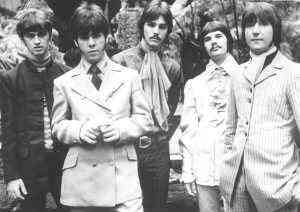 Ohio Express w Joey Levine Source: Discogs |
|
|
Formed in 1965,
Quicksilver Messenger Service [1,
2,
3,
4,
5/ See
also 1,
2] gave its initial performance in
December that year, they among the bloom of psychedelic bands that made San
Francisco a hotbed of rock in the latter sixties. The band originally
consisted of guitarists, John Cippolina [1,
2,
3],
Jim Murray, Skip Spence (Moby Grape) and
bassist, David Freilberg [1,
2,
3]. Spence would soon leave the band, replaced by Gary
Duncan [1,
2,
3], and Greg
Elmore [1,
2] would carry drums. The group would see various
formations during its existence, Duncan and Elmore its core. QMS had worked
its way up to clubs like the Avalon Ballroom and Fillmore West, and was good
enough to perform at the Monterey International Pop Festival in June of
1967, then to sign up with Capitol in time to release 'Dino's Song'/'Pride
Of Man' that year. The band's initial album, 'Quicksilver Messenger
Service', followed the next year. In 1971 Dino Valenti replaced Freilberg.
The band's eighth and last album was 'Solid Silver' in 1975. The spasm continued another
four years until QMS came unglued altogether in '79. Duncan occasionally
released QMS issues thereafter into the new millennium, beginning with
'Peace By Piece' in 1986. He was joined in 2006 by Freilberg, the two
releasing 'Reunion' and 'Castles In the Sand' in 2009. Freilberg would be
out on Duncan's Quicksilver recordings in 2010: 'Six String Voodoo' and 'The
Hermit'. Discographies w various credits for QMS
at 1,
2.
QMS visual media.
Itinerary of above 300 performances from Dec '65 to June 2017. Interviews: Freilberg 1997;
Duncan 2007.
Quicksilver Messenger Service 1966 Soundboard recordings Live at the Matrix Coffeehouse Soundboard recordings Quicksilver Messenger Service 1967 Filmed at the Monterey Pop Festival Composition: Dino Valenti Soundboard Recordings Quicksilver Messenger Service 1968 Soundboard Recordings Album Quicksilver Messenger Service 1969 Album Filmed concert Album Quicksilver Messenger Service 1970 Album Quicksilver Messenger Service 1971 Album Quicksilver Messenger Service 1972 Album Quicksilver Messenger Service 1975 Filmed concert
|
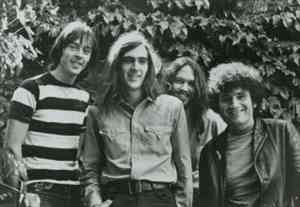 Quicksilver Messenger Service Source: All Music |
|
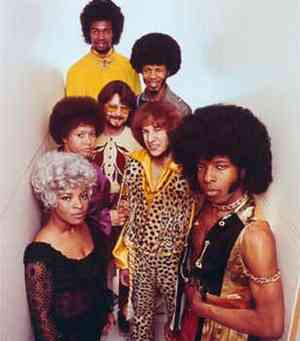 Sly & the Family Stone Source: Wikipedia |
Sly and the Family Stone was a highly rated R&B band that
passed over well into rock, ruling the Top Forty singles charts in both
categories from '68 to '74. The Stone issued their debut LP in 1967: 'A
Whole New Thing'. Two years later their fourth album, 'Stand!', would
go platinum, followed by 'Greatest Hits' ('70) and 'There's a Riot Goin' On'
('71). Their next two albums would go gold: 'Fresh' ('73) and 'Small Talk'
('74). The man who made things happen with the Stone was Sylvester Stewart,
experienced in the music business long before becoming Sly Stone. Though he
is the earliest to make records on the menu above he is placed here w the
later group
for which he is best known. Born in 1943 in Denton, TX, he appeared on his
first vinyl at age nine as vocalist for the Stewart Four [1,
2] in 1952: 'On the
Battlefield'/'Walking in Jesus Name'. Those were for the Church Of God In
Christ label #101. On piano was older sister, Loretta Stewart, who wouldn't
pursue a musical career. Brother and sisters Freddie,
Rose and Vaetta on
backup vocals, however, would later perform with the Stone. Sly next
recorded while yet in high school with a group called the
Viscaynes
[1,
2,
3], issuing 'Yellow
Moon'/'Heavenly Angel' on VPM 1006 in Oct of '61. The next month he released
'A Long Time Ago'/'I'm Just a Fool' (Luke AR 1008) as Danny (Sly) Stewart
[1,
2].
Come 'Help Me With My Broken Heart'/'Long Time Alone' (G&P 901) as
Sylvester Stewart [1,
2] in April 1962. He was working as a disc jockey
for KSOL in San Francisco and as a producer for
the Autumn label when he released 'I Just Learned How to Swim'/'Scat Swim' in
August of '64 as Sly Stewart [*]. 45Cat has the Viscaynes down for
'Pauline'/'Questions I Ask' in 1965 for Veep. In 1966 Sly formed the
Stoners, including trumpeter, Cynthia Robinson. Brother Freddie meanwhile
formed the (oh, sorry,
spaced out) Stone Souls with drummer, Gregg Errico, and Jerry Martini on
sax. The two groups meshed with Larry Graham employed on bass and the core
members of the original Sly & the Family Stone were put together by March
1967. Family Stone's backup vocals were delivered by the trio, Little
Sister, which had been the high school gospel group, the Heavenly Tones, to which Vaetta
Stewart belonged along with Mary McCreary and Elva Mouton. That was the
configuration for the Stone's first album in '67 ('A Whole New Thing'). Rose
Stone would join on keyboards for the '68 release of 'Dance to the Music'.
August of '69 saw the Stone at the famous Woodstock Festival.
Setlist documents above 340 performances
by S&FS from Feb '67 to Aug 2015. Personnel would begin changing in the seventies but by 1975 everyone in this
remarkable band had just as remarkably
lost interest in the group. Its last concert was in January that year at
Radio City Music Hall in NYC to only a fraction of the Stone's usual draw
but briefly before. They would continue releasing albums though, until their
tenth and final in 1982: 'Ain't But the One Way'. Members had been then
moved onward to various musical careers. Sly had released his first solo LP,
'High on You', in 1975. 1983 saw him on titles w George Clinton in the
P-Funk Al Stars [*]. Sly & the Family S
(oops)tone were elected into the Rock and Roll Hall of Fame
in 1993. They would perform together in 2006 at the Grammy Awards.
They issued 'Family Affair' in 2007. Stone released 'I'm Back! Family &
Friends' as recently as 2011. References for Sly Stone: 1,
2,
3.
Compositions.
Discos w various credits 1,
2.
Interview 1974.
Further reading: 1,
2.
References for Sly and the Family Stone encyclopedic: 1,
2,
3,
4. Musical:
1,
2,
3,
4,
5.
Synopsis.
Membership quick view. Discographies w various credits:
1,
2,
3.
Sly and the Stone in visual media.
Interview
w Freddie Stone 2016. Reviews: Music Box (5
star); S&FS
1,
2,
3. Further reading:
'Rolling Stone' 1970.
Per below, credits to Sylvester Stewart are translated to Sly Stone.
The Stewart Four 1952 Composition: Stewart Four The Viscaynes 1961 Composition: Earl Washington/Ricky Page Composition: George Motola/Ricky Page Sly Stewart 1964 Composition: Sly Stone Composition: Sly Stone Sly & the Family Stone 1967 From the LP 'A Whole New Thing' All compositions Sly Stone Sly & the Family Stone 1968 Telecast Composition: Sly Stone Telecast Composition: Sly Stone Sly & the Family Stone 1969 Filmed live Filmed at the Harlem Cultural Festival Composition: Sly Stone LP: 'Stand!' Texas International Pop Festival Album Composition: Sly Stone LP: 'Stand!' Sly & the Family Stone 1971 Composition: Sly Stone LP: 'There's a Riot Goin' On' Composition: Sly Stone LP: 'There's a Riot Goin' On' Sly & the Family Stone 1973 Composition: Sly Stone 'Midnight Special' Sly & the Family Stone 1974 Composition: Sly Stone 'Soul Train' Composition: Sly Stone 'Mike Douglas Show' Composition: Sly Stone 'Soul Train' Sly & the Family Stone 1979 Album Side 1 Album Side 2
|
|
|
Steppenwolf emerged in Los Angeles in 1967, put together by
vocalist, main member and anchor ever since, John Kay (b 1944). Kay had been raised
in Hannover, Germany, and brought by his mother and stepfather to Toronto,
Ontario, in 1958 where he eventually formed a band called the Sparrows. He was
accompanied by Sparrow members, Jerry Edmonton (drums) and Goldy McJohn (keyboards)
to Los Angeles where they recruited Michael Monarch (guitar)
and Rushton Moreve (bass). As one might have guessed,
Steppenwolf got its name from the 1927 novel by
Hermann Hesse. It was 1967
when the band issued its debut vinyl, 'A Girl I Knew' b/w 'The Ostrich'
(Dunhill D-4109).
Those found their way onto the group's first album, eponymously titled
'Steppenwolf', issued in January of '68. Which was a real fine thing because
it went gold like their 2nd, 'The Second', later that year. Many may recall
the use of Steppenwolf's 'The Pusher' and 'Born to Be Wild' in the 1969
film, 'Easy Rider'. That helped 'Monster' go
gold in 1969. 'Steppenwolf 7' earned the same patina in 1970 along with 'Steppenwolf Live'. Later
collections have also earned huge metal though the band began its demise in
the early seventies. Kay has run various formations ever since, the group
active to this date. References for Steppenwolf: 1,
2,
3.
Members: 1,
2.
Discos w various credits: 1,
2,
3.
Steppenwolf in visual media.
Further reading: *.
References for frontman, John Kay: 1,
2.
Interviews: 2013,
2016 NAMM.
At Discogs.
Steppenwolf 1968 'Playboy After Dark' Composition: Don Covay/Steve Cropper Album Steppenwolf 1969 Album Steppenwolf 1970 Filmed live Composition: Hoyt Axton Steppenwolf 2008 Filmed live Composition: Hoyt Axton
|
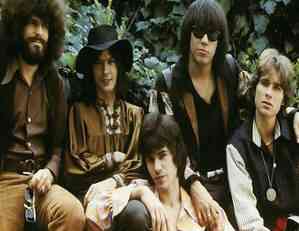 Steppenwolf Source: Famous Fix |
|
|
Formed in Los Angeles in 1967,
Strawberry Alarm Clock (SAC) was shaped from two prior groups, Thee
Sixpence and the Waterfyrd Traene. The SAC was assigned the task of
alarming Americans to attacks per the British Invasion, a rock version of
the air raid siren. Unfortunately the British found them out and slaughtered
them. 'Incense and Peppermints' substituted for what had been been #1, 'To
Sir with Love' by Lulu, that came up missing in action on
Billboard
in September of '67. SAC followed that with the album of the same title. 'Tomorrow'
reached #23 in December with 'Wake Up...It's Tomorrow' to ensue the next
year. Two more albums were released in '68 and '69, 'The World in a Sea
Shell' and 'Good Morning Starshine'. The group appeared in the 1970 film,
'Beyond the Valley of the Dolls', then stopped ticking the next year because
strawberries don't stay fresh very long. At the
time of the group's first album release the SAC consisted of Mark Weitz
(organ), George Bunnell (bass), Gary Lovetro (bass), Randy Seol (drums),
Steve Bartek (flute), Ed King (lead guitar), and Lee Freeman (rhythm
guitar). Greg Munford sang uncredited lead on 'Incense and Peppermints'. Although the
British easily clocked the SAC the group was repaired and briefly reunited
in '74 as a trio of Bunnell, Seol and Bartek. Parting again in '75, the
group began reforming again in '82 w Weitz, Freeman, Bunnell and drummer,
Gene Gunnels, the last an initial member who had left before 'Incense and
Peppermints', having briefly returned in '69 until the group's disbanding in
'71. Gunnels was soon replaced by returning Seol, the latter as quickly
replaced by Bruce Hubbard, himself replaced twenty years later in 2006 by
returning Gunnels. Original members who continue with the SAC to this day are Bartek, Bunnell, Seol, Weitz
and Gunnels. Also w the current band is Howie Anderson at guitar since 1986. References for SAC: 1,
2,
3,
4,
5,
6.
SAC in visual media.
Catalogues w Various credits: 1,
2. Strawberry Alarm Clock 1967 Album Telecast Composition: John Carter/Tim Gilbert Strawberry Alarm Clock 1968 Album Telecast Composition: Ed King/Mark Weitz Album Strawberry Alarm Clock 1969 Album Strawberry Alarm Clock 2014 Filmed live Composition: John Carter/Tim Gilbert
|
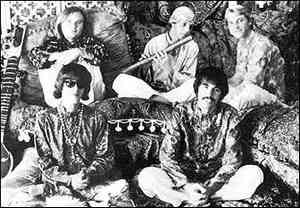 Strawberry Alarm Clock Source: Fuzzine |
|
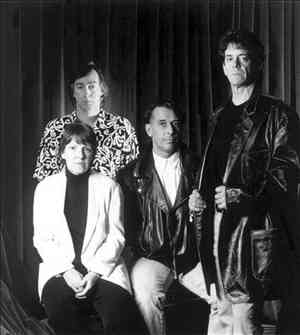 Velvet Underground 1993 L to R: Tucker, Morrison, Cale, Reed Source: Wikipedia |
Formed in New York City in 1964,
Velvet Underground
[1,
2,
3] was the entity of
John Cale and
Lou Reed. They had met at Syracuse
University, playing in a band called the Primitives together. The Primitives
issued an experimental plate in December that year, bearing 'The Ostrich'
and 'Sneaky Pete' for the Pickwick City label (PC 9001). They would then
become the Warlocks, then the Falling Spikes, before settling on the Velvet
Underground to work with Andy Warhol's 'Exploding Plastic Inevitable'
multimedia roadshow in '66 and '67. The Underground's debut album in 1967,
'The Velvet Underground & Nico', meant the Underground and German vocalist,
Nico. Other members of the band at that time
were Sterling Morrison (guitar) and Maureen Tucker (percussion).
Nico afterward moved onward to a solo career.
The Underground issued five studio albums with as many live during their
existence, issuing their last studio LP, 'Squeeze', in 1973 (minus
Reed). Those between were 'White
Light/White Heat' ('68), 'The Velvet Underground' ('69 with Doug Yule
replacing
Cale) and 'Loaded' ('70), the latter
after which
Reed left the band, Yule taking the
reins. Although the Underground was a niche band they were elected into the
Rock n Roll Hall of Fame in 1996. They were ranked the 19th greatest artist
in 2014 by 'Rolling Stone' magazine. A poll by 'VH1' found them at #24. The
Underground remain among the more influential bands over the decades long after
their demise. Discographies w various credits at
1,
2.
In visual media. The Primitives 1964 Compositions: Jerry Vance/Jimmie Sims Lou Reed/Terry Philips Velvet Underground 1966 Andy Warhol's 'A Symphony of Sound' Issued 1991 Composition: Lou Reed Velvet Underground 1967 Album Velvet Underground 1968 Album Velvet Underground 1969 Album Album Album Velvet Underground 1970 Album Velvet Underground 1973 Album Velvet Underground 1993 Filmed reunion concert
|
|
|
The British Invasion formally beginning with the
Beatles in 1964 called
for anti-airwave artillery, bands like
Blood Sweat & Tears
(BS&T)
and
Chicago formed to blast the enemy out
the skies with brass rock. The United States had been fomenting the British
Invasion for decades, ever since breaching Great Britain's borders with the
Original Dixieland Jazz
Band first touring there in 1919. By the sixties the Brits were weary
of it and decided to send some traffic back, making Earth a loud planet
complete with hysterics by screaming girls. It would have been apt for BS&T
to name themselves after Winston Churchill's famous phrase, "I have nothing
to offer but blood, toil, tears and sweat" during his 1940 war speech. But
the name came, rather, from the 1963 album, 'Blood Sweat & Tears', by
Johnny Cash. BS&T was formed in 1967 by Al Kooper and Steve
Katz of the
Blues Project, Bobby Colomby (drums) and Jim Fielder (bass) at
the the Cafe Au Go Go in NYC. Fred Lipsius (sax), Randy Brecker (trumpet),
Jerry Weiss (trumpet) and Dick Halligan (trombone) were added for the band's
first album, 'Child Is Father to the Man', released in February of 1968.
Personnel immediately began changing after that. The most significant
replacement was of Kooper with David Clayton-Thomas. Trumpet players,
Brecker and Weiss, were also replaced by Lew Soloff and Chuck Winfield for
the group's second album, 'Blood, Sweat & Tears'. Released in December of
1968, that platter brought BS&T the Album of the Year Grammy Award in 1970. BS&T
would hire the whole phonebook through the years, personnel coming and going
like pinballs. The next significant switch was in January of 1972 with Jerry
Fisher replacing David Clayton-Thomas. Clayton-Thomas would return in '74
until '81, then '84 to 2004. BS&T yet exists but with no original
members. 'Child Is Father to the Man' and 'Blood Sweat & Tears' per '68 went
gold, the latter then platinum. BS&T were featured at the famous Woodstock Festival
in August of '69 [see Setlist tracing above 390 performances
since Jan '68]. 'Blood, Sweat & Tears 3' ('70) and 'B, S & T
4' ('71) also went gold. By 'New Blood' in '72 the band was fading, touring heavily but not
again to achieve its original popularity. Its last of eleven studio albums,
'Nuclear Blues', was issued in 1980, the year 'Live' was recorded to appear
in 1995. References for BS&T: 1,
2,
3,
4,
5,
6,
7,
8,
9.
Band membership: 1,
2.
Current membership.
Current concert itinerary.
Discographies w various credits: 1,
2.
BS&T in visual media.
Reviews at Only Solitaire. Further reading:
'Rolling Stone' 1968.
Per below, 'You've Made Me So Very Happy' had been co-written by Berry Gordy
Jr., Brenda Holloway, Patrice Holloway and Frank Wilson.
Blood Sweat & Tears 1968 I Love You More Than You'll Ever Know Composition: Al Kooper LP: 'Child Is Father to the Man' Composition: Larry Beckett/Tim Buckley LP: 'Child Is Father to the Man' Composition: Erik Satie LP: 'Blood Sweat & Tears' Composition: Larry Beckett/Tim Buckley LP: 'Blood Sweat & Tears' Blood Sweat & Tears 1969 Filmed live Composition: David Clayton-Thomas Blood Sweat & Tears 1970 Filmed live Composition: Laura Nyro Composition: David Clayton-Thomas LP: 'Blood, Sweat & Tears 3' Blood Sweat & Tears 1971 Album Filmed live Blood Sweat & Tears 1973 Filmed concert Album Blood Sweat & Tears 1974 I Love You More Than You'll Ever Know Filmed live Composition: Al Kooper Album Blood Sweat & Tears 1976 Filmed live Composition: Laura Nyro Album Blood Sweat & Tears 1980 Album Blood Sweat & Tears 1993 Filmed live Blood Sweat & Tears 2013 Live at the Berklee College of Music Filmed live Blood Sweat & Tears 2014 Filmed live Composition: Gregg Allman/Robert Kim Payne
|
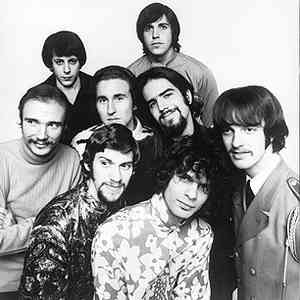 BS&T w Al Kooper Source: In Deep |
|
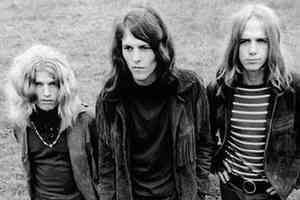 Blue Cheer 1968 Photo: Herb Greene Source: Psychedelic Sight |
Formed in San Francisco in 1967,
Blue Cheer [1,
2,
3,
4,
5] consisted of Eric Albronda (drums), Dickie
Peterson (bass/vocals) and Leigh Stephens (guitar). Personnel would soon and
continually change, Paul Whaley replacing Albronda in '67, he and Peterson
the core of the band throughout its existence into the new millennium. Blue
Cheer was named after a brand of LSD, that itself named after a laundry
detergent. Its first single was 'Summertime Blues' in 1968, appearing on the
band's debut LP the same year: 'Vincebus Eruptum'. Though Blue Cheer would
never duplicate the success of 'Summertime Blues' the band released about ten
studio albums over the years and nigh as many live until its permanent
dissolution in 2009 upon the death of Peterson of prostate cancer. Not the
most popular band to arise out of the sixties, Blue Cheer nevertheless
maintained a large cult audience, owning the distinction of being one of the
earliest hard metal bands. Discographies w various credits: 1,
2. Blue Cheer 1968 Album Album Blue Cheer 1969 Album Blue Cheer 1970 Album Blue Cheer 1984 Album Blue Cheer 1999 Live in Japan Composition: Dickie Peterson LP: 'Hello Tokyo, Bye Bye Osaka' Blue Cheer 2008 Concert filmed by Rockpalast
|
|
|
Among the unquestionably greatest bands to first record in
the sixties was
Creedence Clearwater Revival (CCR) consisting of John Fogerty
[lead), Tom Fogerty [rhythm), Stu Cook (bass) and Doug Clifford (drums) [*]. CCR,
known for Bayou rock, was eventually formed out
of a couple earlier bands [*]. Tommy Fogerty and the Blue Velvets consisting of
John, Stu and Doug issued three records in 1961 and '62 on the Orchestra label:
'Have You Ever Been Lonely'/'Bonita', 'Come On Baby'/'Oh My Love' and 'Now
You're Not Mine'/'Yes You Did'
[sessions/issues]. The Blue Velvets were renamed the
Golliwogs [1,
2]
at Fantasy Records for their first issue as such in 1964: 'Don't Tell Me No
Lies'/'Little Girl (Does Your Mamma Know?)'. The Golliwogs released seven 7"
45s to 1967, then changed their name to Creedence Clearwater Revival in
January of '68 to release their first LP that year in July: 'Creedence
Clearwater Revival', the first of five platinum albums to follow 'Bayou
Country' ('69 platinum 2x), 'Green River', ('69 platinum 3x), 'Willy and the
Poor Boys' ('69 platinum 2x), 'Cosmo's Factory' ('70 platinum 2x) and
'Pendulum' (platinum). Their final LP in '72, 'Mardi Gras' went only gold.
'The Concert' in 1980 went platinum as well, recorded in 1970. Their first
of two live LPs in '73, 'Live In Europe', had fared not so well. CCR was one
of the bands to play at the famous
Woodstock Festival in August of '69.
Their issue of 'Willy and the Poor Boys' in November of '69 so frightened
Paul McCartney that he announced he was quitting the
Beatles in April 1970.
Supreme Commander of the British Invasion, Queen Elizabeth II, then knew her
days were numbered. She would continue bombarding America throughout the
seventies, even sending her refuse across the Atlantic in the form of punk
bands in the latter seventies in her ambition to be the eternal Queen of
Rock n Roll. But by the eighties few any longer referred to the Brits as
invaders and the Queen sat on her buff-gotten tuff forever more. CCR had
begun
its last concert tour in October of '72, after which band members weren't
getting along well enough to continue, also swamped with severe financial trouble
per mistakes made by John Fogerty who, not being a businessman, got eaten by
sharks who were. With half his life spent at court trying to get more square
deals he went onward with the Blue Ridge Rangers in 1972 and continues solo
to this day [sessions
/issues]. His album, 'John Fogerty', was released in 1975. Tom Fogerty
had issued his initial solo album, 'Tom Fogerty' in '72 as well [sessions].
He
went on to release 'Zephyr National' in 1974. Doug
Clifford had also released a solo attempt in 1972, 'Cosmo'. He and Stu Cook remained good friends after the dissolution of CCR,
joining the Don Harrison Band together, then founding Factory Productions.
Highlighting the eighties was a reunion on October 19 of 1980 at Tom's
wedding to Tricia Clapper. He died 10 years later on September 6 of 1990 in
Scottsdale, Arizona, of an AIDS-contaminated blood transfusion during back
surgery. Clifford and Cook put together Creedence Clearwater Revisited
[1,
2,
3,
4] in
1995, releasing a double album in 1998: 'Recollection'.
Current members of
that group yet tour globally as of this revision. John Fogerty published his
memoir, 'Fortunate Son: My Life, My Music', in 2015
[1,
2,
3].
John had been the major composer in
CC Revival, oft collaborating with brother, Tom. John wrote such as 'Graveyard
Train', 'Green River' and 'Wrote a Song for Everyone' issued in '69. Titles
followed like 'Have You Ever Seen the Rain?' ('70) and 'Almost Saturday
Night' ('75). References for CC Revival: 1,
2,
3,
4,
5,
6.
Discos w various credits:
1,
2,
3.
See also *.
In visual media.
Setlist traces above 500 performances since March of '68 at the Avalon Ballroom in San Francisco.
Reviews:
1,
2,
3.
Further reading: 1,
2. References for John Fogerty: 1,
2,
3.
At Discogs and
45Worlds.
Interviews: 1997,
2015,
2015. References for Tom Fogerty: 1,
2,
3,
4,
5.
At Discogs and
45Worlds.
Interviews: 1986 Part 1,
Part 2. Interviews w
Stu Cook:
1998,
2012,
2014,
2017 Hustle,
2018,
2018.
References for Doug Clifford: 1,
2.
At Discogs and
45Worlds.
Interviews: 2012,
2015,
2018.
Per 1976 below, 'Hoodoo' is a bootleg from an incomplete project by John Fogerty, the tapes
not destroyed as had been his wish [*].
. The Blue Velvets 1961 Composition: Tom Fogerty Composition: Tom Fogerty The Blue Velvets 1962 Composition: John & Tom Fogerty Composition: John Fogerty The Golliwogs 1964 Composition: John & Tom Fogerty Little Girl (Does Your Mamma Know?) Composition: John & Tom Fogerty The Golliwogs 1965 Composition: John & Tom Fogerty The Golliwogs 1966 Composition: John & Tom Fogerty Composition: John & Tom Fogerty The Golliwogs 1967 Composition: John Fogerty Creedence Clearwater Revival 1968 Album Creedence Clearwater Revival 1969 Album Album Album Album Not issued until 2009 Creedence Clearwater Revival 1970 Album Filmed concert Album Doug Clifford 1972 Composition: Doug Clifford LP: 'Cosmo' Composition: Doug Clifford LP: 'Cosmo' Composition: Doug Clifford LP: 'Cosmo' Creedence Clearwater Revival 1972 Album Tom Fogerty 1972 Composition: Tom Fogerty LP: 'Zephyr National' John Fogerty 1972 Album John Fogerty 1976 Album recorded 1976 Bootleg issue unknown John Fogerty 1985 Album John Fogerty 1986 Album John Fogerty 1997 Album Creedence Clearwater Revisited 1998 Album Creedence Clearwater Revisited 1999 Filmed concert Doug Clifford 2010 Filmed live Filmed live Creedence Clearwater Revisited 2010 Filmed live Composition: Dale Hawkins/Robert Chaisson Creedence Clearwater Revisited 2015 Live at the Indiana State Fair Filmed concert Creedence Clearwater Revisited 2016 Filmed concert
|
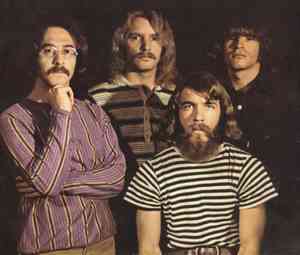 Creedence Clearwater Revival L to R: Stu/ Tom/ Doug/ John Source: Recorder |
|
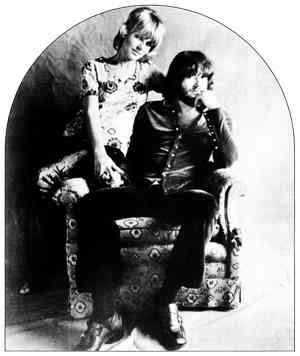 Delaney & Bonnie Source: Wikipedia |
Delaney & Bonnie [1,
2,
3]
was a brief-lived duo which marriage and professional partnership ran from
1967 to 1972. Delaney Bramlett [1939-08/ 1,
2] had begun his career in the early sixties as
a songwriter in Los Angeles after leaving the US Navy. He released his first
record in 1962 with Chuck Rio on the Toppa label: 'Doin' the Bossa Nova' bw
'I'm Older Than You Think'. From '64 into '65 he issued solo six sides on
GNP Crescendo, those during the time he performed with the Shindogs, house
band for the 'Shindig' television program (1964-66).
Leon Russell was also a member of that
crew. Bonnie [O'Farrell/ 1944-present/ 1,
2] had sung as early as age fourteen with
Albert King. The next year she spent a
brief time with
Ike & Tina Turner. It
was 1967 when she went to Los Angeles and met Delaney who was performing at
a bowling alley with the Shindogs. The two swiftly married and would have a
child, the singer, Bekka Bramlett. Delaney & Bonnie taped their first promo
in 1967 per Independence: 'You've Lost That Lovin' Feelin''. Delaney had
just recorded 'Guess I Must Be Dreamin'' bw 'Don't Let It (Be the Last
Time)' for the same label. Their first sides to be issued were 'It's Been a
Long Time Coming' bw 'We've Just Been Feeling Bad'. The albums, 'Home' and
'Accept No Substitute', followed in 1969. The couple released seven albums
to 'D&B Together', their final in 1972. Among titles they had composed
together were 'All We Really Want to Do' in '69 and 'Hard Luck and Troubles'
in '70 [1,
2]. They divorced in '73. Delaney
continued his career largely in a backup capacity. He released eight albums
from 1972 ('Some Things Coming') to 2007 ('A New Kind of Blues'),
dying the
next year on December 27. Bonnie went onward with a solo career, releasing 'Sweet Bonnie Bramlett' in 1973. Her fifth solo LP, 'Step By Step', was issued in 1981,
after which she ceased recording, spending the eighties acting in the
television sitcom, 'Roseanne'. She returned to recording again in 2002 with
'I'm Still the Same' and has issued several LPs since, 'Beautiful' her
latest in 2008. Discos for D&B with various credits: 1,
2,
3.
Delaney at Discogs.
Bonnie at Discogs.
D&B in visual media.
Per 1969 below, 'Live at Royal Albert Hall' was recorded in
1969, issued in 2010 on 'On Tour with Eric Clapton: Deluxe Edition Box Set'. Delaney Bramlett 1964 Composition: Tommy Durden Mae Boren Axton (mother to Hoyt) Delaney & the Shindogs 'Shindig' Delaney Bramlett 1965 Composition: Jackie De Shannon Delaney Bramlett 1967 Composition: Don Nix/Leon Russell Delaney & Bonnie 1968 Composition: Bonnie Bramlett/Delaney Bramlett Composition: Eddie Floyd/Steve Cropper Delaney & Bonnie 1969 Album Album With Eric Clapton Issued 2010 Filmed concert 'The Price of Fame' Delaney & Bonnie 1970 Album Album Delaney & Bonnie 1971 Album Delaney Bramlett 1972 LP: 'Some Things Coming' LP: 'Some Things Coming' Delaney & Bonnie 1972 Album Filmed live Composition: Delaney Bramlett Bonnie Bramlett 1973 Filmed live Album Delaney Bramlett 1977 Composition: Barrett Strong/Norman Whitfield/Roger Penzabene Composition: Delaney Bramlett Delaney Bramlett 1998 Composition: David Morgan/Delaney Bramlett LP: 'Sounds From Home' Bonnie Bramlett 2006 Composition: Original issue: Sam Cooke 1964 LP: 'I Can Laugh About It Now' Delaney Bramlett 2007 Composition: Delaney Bramlett LP: 'A New Kind of Blues' Composition: Delaney Bramlett LP: 'A New Kind of Blues' Bonnie Bramlett 2014 Filmed live Composition: Bonnie Bramlett/Leon Russell Filmed with Bekka Bramlett Bonnie Bramlett 2016 Filmed live Composition: Bonnie Bramlett/Leon Russell
|
|
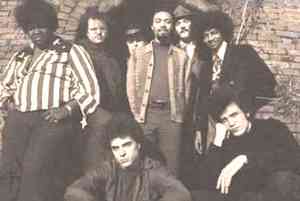 Electric Flag Source: Manzana Verde |
Born in Omaha, NE, in 1947,
Buddy Miles [1,
2,
3,
4,
5,
6] was Junior to Senior who had played upright bass
professionally with such as Duke
Ellington,
Count Basie,
Charlie Parker and
Dexter Gordon. He had a band called the Bebops with which Junior played as
an adolescent. He began gigging with notable R&B bands at age sixteen when
he met
Jimi Hendrix, they working in Canada. Their
association would continue to California, then New York where Miles would
contribute drums and vocals to
Hendrix' third album, 'Electric Ladyland',
for issue in latter 1967. Other collaborations w
Hendrix included his
compositions, 'Changes' and 'We Got to Live Together' on 'Band of Gypsies',
recorded in Jan 1970, issued in March. Backing up to 1967, Miles joined blues composer and guitarist,
Mike Bloomfield, in the formation
of
Electric Flag [1,
2,
3,
4]. Nick Gravenites joined them on vocals.
Bloomfield had recently completed
composing the soundtrack to the 1967 film, 'The Trip ', concerning LSD, starring Peter
Fonda and written by Jack Nicholson. Electric Flag recorded the soundtrack,
'The Trip', issued the same year. Members in the band per its album, 'A
Long Time Comin'', in 1968 included Harvey Brooks on bass. In addition to four
keyboardists and three horn players, a crew of percussion and string
musicians participated in that LP. Only three months after the issue of
'Comin''
Bloomfield moved onward in June. Flag was left to issue 'The
Electric Flag: An American Music Band' without him in 1968. Which was the
end of Electric Flag until a reunion album in 1974. As for Miles, he had
already begun his solo recording career in 1968 with 'Expressway to Your
Skull'. 1970 found him on
John McLaughlin's 'Devotion', '72 on
Santana's
'Carlos Santana & Buddy Miles! Live!'. Having issued at least twenty
albums into the new millennium, his last was 'The Band of Gypsys Return'
with Billy Cox in 2006. In 2008 he died at his home in Austin, Texas, of
congestive heart disease, only fifty years of age. Discographies w various
credits for Miles [1,
2]
and Electric Flag.
Miles in visual media.
Electric Flag in visual media.
Electric Flag 1967 Soundtrack: 'The Trip' Composition: Electric Flag Soundtrack: 'The Trip' Composition: Electric Flag Buddy Miles 1967 Composition: Hendrix Jimi Hendrix LP: 'Electric Ladyland' Electric Flag 1968 Composition: James Oden (St. Louis Jimmy) LP: 'A Long Time Comin' Composition: Chester Burnett (Howlin' Wolf) LP: 'A Long Time Comin' Arrangement: Herbie Rich LP: 'An American Music Band' Arrangement guitar: Buddy Miles Arrangement horns: Stemsy Hunter LP: 'An American Music Band' Arrangement: Electric Flag LP: 'An American Music Band' Composition: Traditional Arrangement: Mike Bloomfield LP: 'A Long Time Comin' Buddy Miles 1968 Composition: Booker T. Jones/Deanie Parker Otis Redding/Steve Cropper LP: 'Expressway to Your Skull' Composition: Buddy Miles/Herbie Rich LP: 'Expressway to Your Skull' Composition: David Porter/Isaac Hayes LP: 'Expressway to Your Skull' Buddy Miles 1969 Filmed with Jimi Hendrix Buddy Miles 1970 Composition: Charlie Carp LP: 'Them Changes' Composition: Rufus Thomas LP: 'Them Changes' Buddy Miles 1971 Album Buddy Miles 1972 Composition: Greg Errico/Ron Johnson Buddy Miles/Carlos Santana LP: 'Carlos Santana & Buddy Miles! Live!' Composition: Buddy Miles LP: 'Carlos Santana & Buddy Miles! Live!' Hardware 1992 Album Buddy Miles 1997 Filmed live Buddy Miles 2002 Filmed live Composition: Hendrix
|
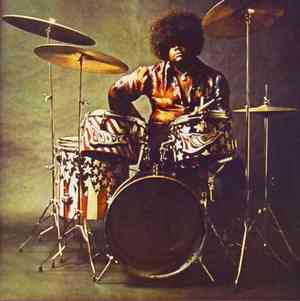 Buddy Miles Source: Manzana Verde |
|
Frijid Pink [1,
2,
3],
in alpha order on the menu above, follows at the tail end of 1968 chronologically.
Named after a Frigidaire refrigerator,
FP was formed in Detroit in 1967 out of a local cover band called the Detroit
Vibrations, of which Tom Harris (bass) and Rick Stevers (drums) were joined by
Tom Beaudry (vocals) and Gary Ray Thompson (guitar) at the time Frijid Pink
released its first issue in Dec 1968 [45Cat]: 'Tell Me Why'/'Cryin' Shame'
(Parrot 334). 'Drivin'
Blues'/'God Gave Me You' (Parrot 340) followed in Aug 1969. Come 'House of the Rising
Sun'/'Drivin' Blues' (Parrot 341) in December. The former title performed remarkably at #7 on Billboard's Hot 100
in April of '70.
FP's album in 1970, 'Frijid Pink', proved such a debacle to
British Invaders that bands like
Free avoided confronting Pink on an open
battlefield
for fear of being routed. Though Pink wouldn't score another victory like it
did at the Battle of 'Frigid' Pink', it kept the enemy pestered into the
seventies, issuing its fourth and last studio album in 1975: 'All Pink
Inside'. Decades later Frijid Pink formed again, issuing 'Inner Heat' in
2002. Another reformation of the band saw 'Frijid Pink Frijid Pink Frijid Pink'
(Repertoire REP 5242) issued in Germany in 2011 [Discogs]. "Made In
Detroit' was issued in 2014. Come 'Taste of Pink' in '17 and 'On the Edge'
in '18. Pink yet tours as of this writing with original
member, Rick Stevers, yet at drums w the current band.
Discos for Frijid Pink w various credits: 1,
2.
Stevers at YouTube. Per 1970 below, the album, 'Frigid
Pink', contains all six of the singles Pink issued in '69. Per 'Earth Omen'
in 1972 below, Discogs has all title written by Frijid Pink consisting of
Craig Webb, Jon Wearing, Larry Zelanka, Rick Stevers and Tom Harris. Frijid Pink 1968 Original issue Dec '68 Composition: Mike Valvano Frijid Pink 1969 Telecast Date estimated Composition: See Wikipedia Telecast Composition: Gary Thompson/Rick Stevers/Tom Beaudry Frijid Pink 1970 Album Album Frijid Pink 1971 Filmed live Composition: See Wikipedia Frijid Pink 1972 From the LP: 'Earth Omen': Frijid Pink 1972 From the LP: 'All Pink Inside': A Day Late a Dollar ShortComposition: Jo Baker/Craig Webb/Larry Popolizio Composition: Rockin' Reggie Vincent Composition: Riggs/Habeman School Days Composition: Chuck Berry |
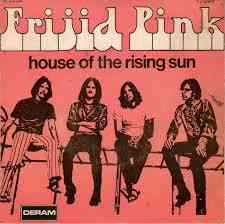 'Frijid Pink' 1970 Source: 45 Cat |
|
|
Iron Butterfly, formed in San Diego in 1966,
was, well, a heavy rock band. Though
Led Zeppelin wasn't properly a heavy
rock band, they more rhythm and blues in context, they were ordered by
Supreme Commander of the British Invasion,
Queen Elizabeth II, to sink Iron Butterfly, which they did after numerous
vicious battles over the air. The
Zeppelin were generals tasked on many
fronts during the invasion and major advisors to the Queen yet sniffing at
American attempts to defend themselves, including Iron Butterfly's debut LP,
'Heavy', in January 1968. But when Butterfly issued '
In-A-Gadda-Da-Vida' in
June (LP same title) the terror which was the UK realized the horror that was the US. Who in all of Great Britain's realms could be found to bitch slap
such
presumptive upstart rebels of iron?
Led Zeppelin released its first album
on January 12, 1969 ('Led Zeppelin'). But US Supreme Command received early
intel of such and Iron Butterfly was ready with 'Ball' five days later. The
diff between the Billboard #4 LP, 'In-A-Gadda-Da-Vida', and the #3 'Ball' is
that the latter went gold, but the former went platinum four times over,
selling more than 30 million copies. Once again US Supreme Command received
early intel: When the
Moody Blues issued 'A Question of
Balance' on August 7, 1970, the Butterfly were ready with
'Metamorphosis' six days later. After which the Queen had had enough
nonsense and focused even more intently upon Butterfly's extermination. And
what a horrible thing to do. Who would point a can of Raid at a nice
butterfly but a mean old Queen (age 44 in 1970), seen chasing
after the poor things in her garden like Elmer Fudd gone Wabbit? But she
zapped them good and the Butterfly went down in 1971, giving their last show
at Central Oregon Community College in Bend, Oregon, on May 23. Too bad: the Butterfly
reformed in 1974 to release 'Scorching Beauty' and
'Sun and Steel' in 1975 to a total of seven albums before
Butterfly could no longer flap at the enemy. Earth-bound ever since, at the time of its greatest success, 'In-A-Gadda-Da-Vida', Iron
Butterfly consisted of Eric Brann [aka Braunn/ guitar/ 1,
2,
3],
Lee Dorman (bass),
Ron Bushy
[drums/ 1,
2] and
Doug Ingle (organ). The group has employed every name taken by
the Census Bureau since then, but Bushy yet led the
current band until
recent illness.
Brann had died on July 25, 2003. Dorman followed on Dec 21, 2012. References for Iron Butterfly: 1,
2,
3,
4.
Members. Discographies w various credits: 1,
2.
Gigography.
IB in visual media.
Reviews.
Interviews: Ingle 1997;
Dorman 2001.
Further reading at PSF. Iron Butterfly 1968 Album Album Composition: Doug Ingle With film Filmed live Music: Doug Ingle/Danny Weis Lyrics: Ron Bushy Iron Butterfly 1969 Album Film Composition: Ron Bushy/Doug Ingle Filmed live Composition: Erik Brann/Ron Bushy/Lee Dorman/Doug Ingle Iron Butterfly 1970 Album Album Iron Butterfly 1971 Filmed live Composition: Ron Bushy/Lee Dorman/Doug Ingle Danish telecast Iron Butterfly 1975 Albums Iron Butterfly 1988 Recorded 1988 Issue unknown
|
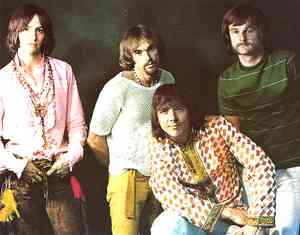 Iron Butterfly Source: My Gully |
|
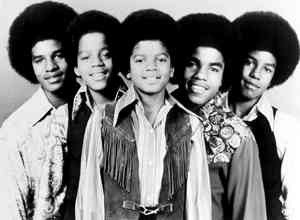 Jackson 5 Source: Barks |
Michael Jackson
was born in scenic Gary, Indiana, in 1958 to a large family. His father,
Joe, a former boxer, worked at US Steel. He also played professionally in a
band called the Falcons. It was 1963 when he formed the Jackson Brothers
consisting of sons Jackie, Tito, Jermaine and Marlon. Randy Jackson would
join later. As for Michael, he was six years old when he began in 1964 on
percussion. He started singing lead with Jermaine in 1965. Joe put his boys
to work on the chitlin' circuit (black-safe clubs and theatres) after
creating a reputation at talent shows. Their name was changed to the
Jackson
5 before their first recordings in November of '67, issued the next year in
January: 'Big Boy' bw 'We Don't Have to Be Over 21'. Those were for
Steeltown Records in Gary, Indiana, after which Joe took his gang to Detroit
to record for Motown in '69. Their first plate, 'I Want You Back' bw 'Who's
Lovin' You', ascended to #1 on Billboard's R&B for both songs. Appearing on
'The Ed Sullivan Show' in 1969, the group also released its first album that
year in December: 'Diana Ross Presents The Jackson 5'. From that point on
they spent the next twenty years in the Top Ten, releasing a total of 23
titles to attain that position until '2300 Jackson Street' in 1989 at #9.
The Jackson 5 also placed eight titles in Billboard's Dance Top Ten,
beginning with 'Forever Came Today' at #1 in 1975, the last 'Nothin'' in
1989. The Jackson 5 would see a couple of reformations in the 21st century.
By the time Randy replaced Jermaine in 1975, the latter off to a solo
career, the Jacksons had issued 174 singles for Motown. Switching to CBS for
greater artistic freedom, they released 'Enjoy Yourself' in '76. Jackson had
released his first solo single, 'Got to Be There', in 1971, with the LP by
the same name following the next year. The single strolled to #4 on
Billboard's R&B, after which Jackson spent the remainder of his career into
the 21st century descending to the Top Ten of some or other kind. His first
role in film arrived in 1978, playing the part of the scarecrow in the 'The
Wiz'. Ensuing from that was his solo release, 'You Can't Win', in January of
'79. Jackson's issue of 'Thriller' in Nov 1982 would go Platinum 33 times as
of 2017. Jackson also made great use of the music video. He had made several
before his first to air on MTV
(founded 1981) in 1983, 'Billie Jean',
helping to put MTV on the map. Out of 'Billie Jean' would be derived
Jackson's first jingle for Pepsi in 1984, his first contract with Pepsi
worth $5 million, his next in the latter eighties worth $10 million. He had
spent well above $47 million in 1985 to purchase the ATV catalogue loaded
with Beatles titles. Jackson released his autobiography, 'Moonwalk', in
1988, the same year he purchased the Neverland Ranch in the Santa Ynez
Valley of California for $17 million dollars. His income that year from
royalties and such was about $125 million. He renewed his contract with Sony
in 1991 for $65 million. The most controversial episodes during Jackson's
life had little to do with his obsessive compulsion about his appearance.
They more concerned sex with minors, he first accused of such in the summer of
1993. Whether the matter was actual or an extortion attempt seems unclear,
but Jackson was acquitted in 1994 upon an out of court settlement of $22
million dollars. He married Lisa Marie Presley, daughter of Elvis Presley,
that year, to divorce in January of 1996, after which he married Debbie Rowe
for three years. In 2003 Jackson was arrested on charges of, again, sex with
children, of which he was acquitted in '95. Jackson's last studio album to
be issued in his lifetime was 'Invincible'' in 2001. He died [1,
2,
3] of cardiac
arrest, only fifty years of age, in California on June 25 of 2009. Neverland
had increased in value to $33 million by that time. He owned 50% of his
Sony/ATV catalogue, that worth $390 million. With $20 million in antiques
and automobiles, and well above $600,000 in cash, after debt his net worth
by one estimate was $268 million dollars, slightly more than his dancing
contemporary,
Mick Jagger. The Jackson estate was yet
good for 825 million in gross earnings in 2016,
highest of any artist. Along
w Jackson's wealth had arrived not a few items somewhere between necessary
and frivolous: 1,
2. Wikipedia describes the
effect of Jackson's death on the internet: websites crashing from TMZ, the
Los Angeles Times and AOL Instant Messenger to Twitter and Wikipedia's
Michael Jackson biography page (one million visitors per hour). Fifteen
percent of Twitter's tweets concerned Michael Jackson at 5,000 per minute.
Google shut down its search engine for half an hour, thinking the explosion
of searches was a DDoS attack. During the first year after his death Jackson
was good for above eight million albums in the States, 35 million globally.
Downloads from the internet amounted to 2.6 million songs per week at one
point. Sony
paid the Jackson estate $250 million plus royalties to make the posthumous
release of 'Michael' in 2010. Jackson is the elder brother of the singer,
Janet Jackson, born in 1966 to begin her own solo recording career in the early
eighties. References for the Jackson 5: 1,
2,
3,
4,
5,
6,
7.
Members.
In visual media. Jackson 5/Jacksons at Discogs: 1,
2.
References for Michael Jackson encyclopedic: 1,
2,
3,
4,
5.
Musical: 1,
2,
3,
4.
Compositions.
Reviews: 1,
2.
Interviews: 1980,
2003,
2003.
Discos w various credits: 1,
2,
3,
4.
Jackson in visual media.
Official YouTube channel.
Internet hub.
Affects of Jackson's death (2009) on the internet: 1,
2,
3.
Wealth: 1,
2.
Neverland Ranch: 1,
2,
3,
4,
5.
Philanthropies: 1,
2.
Further reading: 1,
2,
3,
4,
5,
6. Per below,
titles credited to the Corporation = the production team of Berry Gordy,
Alphonso Mizell, Freddie Perren and Deke Richards. All titles for Michael Jackson are music videos unless
noted otherwise. Jackson 5 1968 Composition: Ed Sivers Composition: Sherman Nesberry Jackson 5 1968 'Ed Sullivan Show' Composition: The Corporation With telecast hosted by Diana Ross Composition: The Corporation 'Ed Sullivan Show' Composition: Smokey Robinson Jackson 5 1970 Composition: The Corporation Composition: Robert Kelly Jackson 5 1971 Telecast hosted by Diana Ross Composition: Dave Mason Telecast hosted by Diana Ross Composition: Berry Gordy/Bob West Willie Hutch/Hal Davis Michael Jackson 1972 Album Jackson 5 1975 Telecast Michael Jackson 1983 Composition: Michael Jackson Composition: Michael Jackson Composition: Rod Temperton Michael Jackson 1987 Composition: Michael Jackson Composition: Michael Jackson Michael Jackson 1988 Composition: Michael Jackson Michael Jackson 1991 Composition: Michael Jackson/Bill Bottrell Michael Jackson 1992 Composition: Teddy Riley/Michael Jackson/Bernard Belle Michael Jackson 1993 Filmed live Michael Jackson 1995 Composition: Michael Jackson Composition: Robert Kelly Michael Jackson 2001 Filmed at Madison Square Garden Composition: Michael Jackson Composition: Michael Jackson/Rodney Jerkins Fred Jerkins III/LaShawn Daniels/Norman Gregg LP: 'Invincible' Composition: Michael Jackson/Rodney Jerkins Fred Jerkins III/LaShawn Daniels/Nora Payne
|
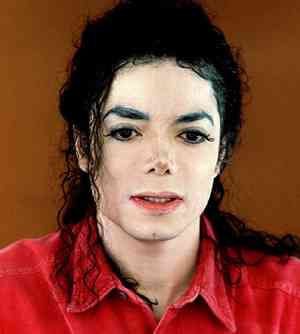 Michael Jackson Source: Daily Mail |
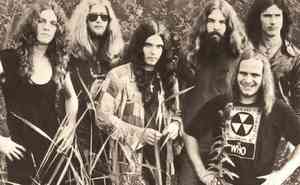 Lynyrd Skynyrd Source: Pittsburgh in Tune |
Lynyrd Skynyrd was a Southern country rock band which came to
prominence in the seventies. The group finds its way into this history of
bands issuing their first vinyl in the sixties by virtue of 'Need All My
Friends' bw 'Michelle' getting released as a demo of 300 copies in 1968, the
band's name spelled Lynyrd Skynyrd for that. Discogs and Wikipedia give it a
'68 release date though the former notes that to be debatable, Goldmine
giving it a date of 1971. It's also been given a date of 1970. Its copyright, anyway, is 1968 by Shady Tree
Records and, indeed, those sides were Skynard's first recordings at the Norm
Vincent Studios in Jacksonville, FL, that year. They were issued commercially in 1978
by Atina. Howsoever, Skynard having insinuated itself into this history with
a possible limited edition in '68, since it was indeed one of the better
bands of the seventies we might as well continue,
despite that few knew of their existence until their first commercial
releases which weren't until 1973. Skynard issued 'Gimme Three Steps' bw
'Mr. Banker' that year, as well as the album, '(Pronounced 'Lĕh-'nérd
'Skin-'nérd)'. Lynyrd Skynyrd had gone by various names
since its inception in 1964 in Jacksonville, Florida. They eventually named
themselves after a high school phys ed teacher, one
Leonard Skinner. At the
time they recorded their debut LP the band basically consisted of three lead
guitarists: Gary Rossington [1,
2], Allen Collins and Ed King. Ronnie Van Zant was
front with Billy Powell on keyboards, Bob Burns on drums and Leon Wilkeson
on bass. The only original member left to this date is Rossington. One cause
for that was the plane crash of 1977 that killed Van Zant and five others,
leaving twenty survivors. That was October 20, three days after the issue of
the LP, 'Street Survivors'. En route from Greenville, South Carolina to
Baton Rouge, Louisiana, the craft ran out of fuel near Gillsburg,
Mississippi. Something roughed up, the band took the next ten years off,
reforming in 1987, this time with four guitars: Rossington, King, Alan
Connins and Randall Hall. Bass was yet Wilkeson and keyboards yet Powell,
with Dale Krantz Rossington providing backup vocals. Artimis Pyle had been
drummer since 1974. That year ('87) they recorded the live album, 'Southern by the
Grace of God', released in '88. Skynard has issued at least 14 albums over
the years. Four went platinum: '(Pronounced 'Lĕh-'nérd 'Skin-'nérd)' ('73),
'Second Helping' ('74), 'Nuthin' Fancy' ('76) and 'Street Survivors' ('77).
'Gimme Back My Bullets' per 1976 turned gold. 'Last of a Dyin' Breed' was
Skynard's latest studio release in 2012. In 2015 the band issued the live
LP, 'One More for the Fans', recorded the prior year at the Fox Theatre in
Atlanta, GA. References for Lynyrd Scynyrd: 1,
2,
3,
4,
5,
6/
Timeline.
Members: Chrome Oxide;
Wikipedia.
Discographies w various credits: 1,
2,
3.
Official YouTube channel.
In other visual media.
Reviews.
LS as a Southern band and the Confederate Flag: 1,
2,
3.
Further reading: 1,
2
Lynyrd Skynyrd 1968 Demo Date moot Composition: Ronnie Van Zant/Allen Collins Lynyrd Skynyrd 1973 (Pronounced 'Leh 'nérd 'Skin 'nérd) Album Lynyrd Skynyrd 1974 Album Lynyrd Skynyrd 1975 Live at the Winterland Ballroom Concert filmed in San Francisco CA Lynyrd Skynyrd 1976 Album Lynyrd Skynyrd 1977 Concert filmed in Asbury Park NJ Album Lynyrd Skynyrd 1988 Album Lynyrd Skynyrd 2015 Filmed at Rockingham County Fair Composition: Allen Collins/Ronnie Van Zant Filmed at Rockingham County Fair Composition: Ronnie Van Zant/Gary Rossington
|
|
|
Born in Los Angeles in 1945,
Hammond organist,
Lee Michaels [1,
2], had played keyboards with a band called the
Sentinels in LA, then the Strangers and the Family Tree in San Francisco
before issuing his first LP in 1968, 'Carnival of Life', with
Reverend Gary Davis sharing bass and
organ. Michaels took full control of organ on his next album that year,
'Recital'. The eponymous 'Lee Micheals' was issued the next year. Michaels
issued seven more albums to 'Saturn Rings' in 1975 as well as a live album
in '73. His first produced by himself was '5th' in 1971. By the end of the decade
Michaels was semi-retired from the music industry. He
went on to found the small chain of Killer Shrimp restaurants w six
locations in California and Nevada as of 2015. Lee Michaels
happens to be the first of the few concerts I've attended. I recall a lot of complaining in the audience that he was too drunk to perform.
Discographies w various credits: 1,
2,
3,
4.
Reviews. Setlist traces above 140
concerts from Dec '66 to Dec '85. Michaels in visual media.
See also: *.
Per below, uncredited titles were composed by Michaels. Per 'Mad Dog',
Charles Sheffield refers to Mad Dog Sheffield (aka Prince Charles). On 'Space and First Takes' Michaels trades organ for guitar. Lee Michaels 1968 LP: 'Carnival of Life' LP: 'Carnival of Life' LP: 'Recital' Lee Michaels 1969 Composition: T-Bone Walker LP: 'Lee Michaels' Lee Michaels 1970 From the LP: 'Barrel': Composition: Charles Sheffield/Eddie Shuler Murder in My Heart for the Judge Composition: Jerry Miller/Don Stevenson Lee Michaels 1971 From the LP: '5th': Lee Michaels 1972 LP: 'Space and First Takes' Lee Michaels 1973 LP: 'Nice Day for Something'
|
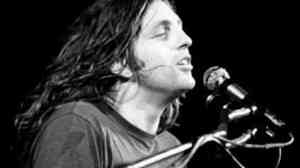 Lee Michaels Source: Rock n Roll Goulash |
|
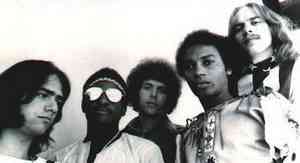 Pacific Gas & Electric Source: San Diego Reader |
Though not a major band,
Pacific Gas & Electric
[1,
2/ Archives:
1,
2] released the single, 'Are You Ready?', in 1970 to great success. It was also
about the best example of a blues rock band on this page. Formed by drummer
to become vocalist, Charlie Allen
[*], the group originated in 1968 to issue its
first LP that year: 'Get It On'. It issued 'Pacific Gas & Electric' in '69
followed by 'Are You Ready' in 1970. At the core of the band up to that time
were Brent Block (bass), Frank Cook (drums), Glenn Schwartz (lead guitar)
and Tom Marshall (rhythm guitar). It was inevitable that the Pacific Gas and
Electric utilities company would wish to avoid confusion with the band, the
group changing its name to PG&E in 1971, Allen now running a completely
different crew with Frank Peticca on bass, Ron Woods at drums and Ken
Utterback picking up lead guitar. PG&E issued 'PG&E' that year. Their next
and last album in 1973 was nevertheless titled 'Pacific Gas & Electric
Starring Charlie Allen'. 'Live 'n' Kicking at Lexington', recorded in 1970,
was released in 2007. Allen died in 1990, only 48 years of age, cause
unknown for all that can be determined. Discographies for PG&E w various credits at 1,
2.
PG&E in visual media. Per 1968 below, all tracks are from
the LP, 'Get It On'. Per 1970 all tracks are from the album, 'Are You Ready'. Pacific Gas & Electric 1968 Composition: Deadric Malone Composition: Booker T Jones/Al Jackson Jr/Junior Wells Composition: James Cotton Composition: Tom Marshall Composition: Al Smith Composition: Brent Block Pacific Gas & Electric 1969 Album Telecast Composition: Brent Block Pacific Gas & Electric 1970 Filmed live Composition: Charlie Allen/John HilComposition: O'Kelly, Ronald & Rudolph Isley Composition: Brent Block/Charlie Allen Frank Cook/Glenn Schwartz/Tom Marshall Composition: Otis Redding Composition: David Cochrane/John Hill Composition: Charlie Allen Composition: Brent Block Composition: Charlie Allen/John Hill
|
|
|
Conceived in Detroit in 1961, the Sunliners spent several years gigging in
clubs until changing their name to
Rare Earth to issue their first LP in 1968: 'Dreams/Answers'.
That contained 'Get Ready' (my theme song as a trucker). The original 'Get
Ready' had been issued by the
Temptations in 1966. The album
came and went without the notice it deserved, but Earth's next LP, 'Get
Ready' ('69 with the long version of 'Get Ready'), did extraordinarily well.
Also big time came 'Ecology' in 1970 and a couple in 1971, 'One World' and
'Rare Earth In Concert', before the group began its decline. There are 17
rare earth elements, twelve of them missing when Rare Earth formed in 1960 with
five members: Gil Bridges (saxophone/flute), Peter Hoorelbeke (drums/lead vocals), Kenny James (keyboards), John Persh (bass/trombone) and Rod Richards (lead guitar).
The band has
since employed everyone with a social security number over the years, its main
fire maker being Bridges, now lead vocals, who's been with the band since
its birth as the Sunliners and runs it to the present day. Rare Earth has
issued above twenty studio and live albums, 'A Brand New World' its latest
in 2008. References for Rare Earth: 1,
2,
3,
4,
5,
6.
Members.
Discographies w various credits: 1,
2.
Further reading at Louder.
Per below, 'Hey, Big Brother' was composed by Nick Zesses and Dino Fekaris. Rare Earth 1968 Filmed live Composition: Smokey Robinson Also on the LP 'Dreams/Answers' Composition: Paul Parrish LP: 'Dreams/Answers' Composition: Brian & Edward Holland Jr./Lamont Dozier LP: 'Dreams/Answers' Rare Earth 1969 Album Rare Earth 1970 Composition: Tom Baird LP: 'Ecology' Rare Earth 1971 Revolver TV Composition: Nick Zesses/Dino Fekaris Album Rare Earth 1972 'Revolver TV' Rare Earth 1974 Filmed live Rare Earth 1974 Filmed live Filmed live Composition: Nick Zesses/Dino Fekaris Rare Earth 2004 Live at Rock Festival Tennessee Filmed live Rare Earth 2016 Filmed live Filmed live Composition: Norman Whitfield Edward Holland Jr. Cornelius Grant Filmed live Composition: John D. Loudermilk
|
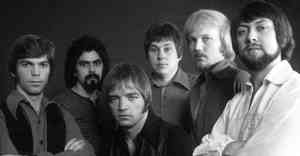 Rare Earth Source: Dimitris Moraitis |
|
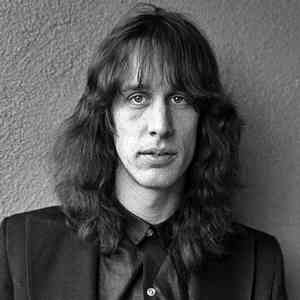 Todd Rundgren Source: Punk Globe |
Born in Philadelphia, PA, in 1948,
multi-instrumentalist guitarist,
Todd Rundgren was a member of Philly-based Woody's
Truck Stop before that group recorded its album, 'Woody's Truck Stop' for
issue in 1969. Upon leaving that band with bassist, Carson Van Osten, they
formed Nazz (not to be confused with
Alice Cooper's Nazz, its name
altered to Alice Cooper upon learning of Rundgren's
band). This Nazz consisted of drummer, Thom Mooney and
keyboardist, Robert Antoni. Nazz issued three albums: 'Nazz' ('68), 'Nazz
Nazz' ('69) and 'Nazz III' ('71). Rundgren issued his first solo album, 'Runt',
in 1970 with his band called Runt. Runt also employed the brothers, Hunt
Sales on drums and Tony Sales on bass. It was '69 that Rundgren had gone to New York City to
begin
producing and sound engineering for Albert Grossman, making his name within
the music industry more in that capacity than with Nazz. Among the bands
with which he worked were The
Band and the
Paul Butterfield Blues Band.
Runt released another album, 'Runt. The Ballad of Todd Rundgren', in 1971.
'Something/Anything?', a double album, saw release in 1972 upon Rundgren
having moved to Los Angeles. Brave heart Rundgren had been assigned by
Strategic Command to meet the British Invasion (Elizabeth II Supreme
Commander) against egregious aggressors such as
Yes. (But one proof among many of Elizabeth's complicity
in the war against the United States came late in 2002 when Queen
guitarist, Brian May, performed 'God Save the Queen' at the Golden Jubilee
of Elizabeth II.) Unfortunately Rundgren's lone daring against the odds
little phased the enemy, allowing them to massacre the minds of Americans by
the millions. Rundgren somehow managed to come out alive amidst widespread
devastation from sea to shining sea. He released a few more solo LPs while returning to New York to
form the band,
Utopia. Those were 'A Wizard, a True Star' ('73), 'Todd'
('74) and 'Initiation' ('75). 'Todd Rundgren's Utopia' had meanwhile seen
issue in '74. Utopia personnel continuously changed over the years, Rundgren
its chief in staff. He would lead a double career at that point, one solo, one
with Utopia. The latter saw some ten studio album issues to 'P.O.V.' in
1985, the same year Rundgren issued his eleventh solo LP, 'A Cappella'.
Utopia reunited for 'Redux '92: Live in Japan' released in '93, the same
year Rundgren issued 'No World Order' as TR-i (Todd Rundgren interactive) in
1993. Among Rundgren's beneficiaries as a producer in the 21st century have
been the New York Dolls, XTC and the New Cars,
Rundgren forming the last in 2005 w original members of the Cars, Elliot
Easton and Greg Hawkes, toward the issue of 'It's Alive!' in 2006. Rindgren is also notable for
his work in meshing the realms of computing with music and music production.
He had begun programming in the latter seventies and had developed a paint
program for Apple, the Utopia Graphics System, in 1979. The brain had also
helped develop the Flowfazer screensaver per 1990. Examples of Rundgren at
the computer are his 1981 music video for 'Time Heals' (his eighth for MTV)
and the animation of 'Change Myself' in 1991. In 1997 he founded PatroNet,
an early internet subscription service distributing music via download. Rundgren was another of rock's power generators of high productivity, he yet
touring like a thirty-year old as of this writing. He issued his 25th solo
studio album in April 2015: 'Global', that following 'State' in 2013. Come
'Runddans' in May 2015, followed by 'White Knight' in May 2017. He is also noted for his work with music
videos. References for Rundgren: 1,
2,
3,
4,
Rough Guide to Rock (Peter Buckley).
Compositions.
Discographies w various credits: 1,
2,
3.
Reviews.
Rundgren in visual media.
Interviews: 2005,
2009,
2013,
2014 NAMM,
2017.
Further reading: Pitchfork,
SoundonSound.
References for Nazz: 1,
2,
Chrome Oxide.
Discos w various credits: 1,
2,
3. References for
Utopia 1,
2.
Discos w various credits: 1,
2,
3.
Reviews.
Per Nazz below, 'Fungo Bat' contains sessions toward the releases of
'Nazz Nazz' and 'Nazz III'. Nazz 1968 Taped 1968-69 See 'The Fungo Bat Sessions' Castle Music 2006 Composition: Todd Rundgren Taped 1968-69 See 'The Fungo Bat Sessions' Castle Music 2006 Composition: Robert Antoni/Thom Mooney Todd Rundgren/Carson Van Osten Album Nazz 1969 Album Runt 1970 Composition: Todd Rundgren LP: 'Runt' Composition: Todd Rundgren LP: 'Runt' Runt 1971 Composition: Todd Rundgren LP: 'Runt. The Ballad of Todd Rundgren' Todd Rundgren 1973 Album Utopia 1974 Album Todd Rundgren 1976 Album Utopia 1976 Album Unknown Deluxe Edition Utopia 1977 Rockpalast concert in Koln Todd Rundgren 1978 Album Todd Rundgren 1989 Album Utopia 2011 Filmed in NYC Todd Rundgren 2014 Filmed with the Ringo All-Starr Band Composition: Todd Rundgren Todd Rundgren 2016 Filmed concert
|
|
|
Three Dog Night was
formed in Los Angeles in 1967 by core vocalists, Danny Hutton [1,
2,
3], Chuck Negron
[1,
2,
3]
and Cory Wells [1,
2,
3]. They filled their band with a bassist, drummer, guitarist
and keyboardist, they well-known by now, but at the time in great dread of
the assignment they'd been given as members of Three Dog Night, that to counter
the British invasive force that was the Nottingham band,
Ten Years After. Those brave enough
to fight with Three Dog Night at the battle of their first album in 1968,
'Three Dog Night' (aka 'One') were Joe Schermie [bass/ 1,
2], Michael Allsup
[guitar/ 1,
2],
Floyd Sneed [drums/ 1,
2] and keyboardist, Jimmy Greenspoon [1,
2]. With the exceptions of Allsup, Greenspoon, Hutton, Negron and Wells,
TDN would see numerous personnel changes over the years, Schermie leaving
the group in '73, Sneed to follow in '74, though would be back '81 to '84. Another
important member of TDN was bassist/guitarist, Paul Kingery [*], first upping
for a time
in 1985 and yet with the current band consisting of original members Hutton and
Allsup. Three
Dog Night had been named by actress, June Fairchild, having read about the
practice of indigenous Australians to sleep with a couple of dogs on cold
nights, with three dogs when especially so. And a charming dream it was,
sleeping through 12 gold albums beginning with their first, per above, that went
platinum. I recall a cold spring night in high school when I was riding on a traveling
carnival Ferris wheel next to a real nice girl I didn't know too well but
who's name I'll never forget. As we were circling about
in the air some girl in the car above us, perhaps another connoisseur of MD 20/20 popular
w kids those days, got sick and drenched the poor thing seated next to me
directly below. The ride was stopped and I walked her home in a bitter wind w TDN's
1971 'Joy to the World' playing over the loudspeakers as we left.
Gee, what can you do? As for TDN, 'Joy to the World' appeared on their fifth
LP, 'Naturally'. Wikipedia has the band issuing 11 studio albums to 'It's a Jungle in '83.
Live albums were 'Captured Live at the Forum' ('69), 'Around the World with
Three Dog Night' ('73) and 'Live' ('88). Years later they recorded titles
with the LSO that saw release on '35th Anniversary Hits Collection' (Intersound)
in 2002 and 'Three Dog Night with the London Symphony Orchestra' (Alchemy)
in 2003.
References for TDN: 1,
2,
3,
4.
Wikipedia: 1,
2,
3. Discos w various
credits: 1,
2,
3.
TDN in visual media.
Three Dog Night 1968 Lead: Negron Composition: Harry Nilsson LP: 'Three Dog Night' Three Dog Night 1969 Filmed live Lead: Negron Composition: Galt MacDermot/James Rado/Gerome Ragni Three Dog Night 1970 Telecast Lead: Negron Composition: Hoyt Axton Filmed live Lead: Wells Composition: Randy Newman Three Dog Night 1971 Lead: Wells Composition: Hoyt Axton LP: 'Harmony' 'Glen Campbell Goodtime Hour' Lead: Negron Composition: Paul Williams Three Dog Night 1972 Telecast Lead: Hutton Composition: David Arkin/Earl Robinson Three Dog Night 1973 Album Three Dog Night 1975 'Soundstage' Three Dog Night 1983 Composition: Charlie Black/Richard Feldman/Marcy Levy LP: 'It's a Jungle' Three Dog Night 2002 Live w the Tennessee Symphony Orchestra Filmed live Three Dog Night 2002 Filmed live
|
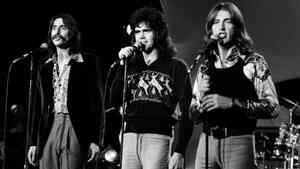 Three Dog Night L to R: Negron, Hutton, Wells Photo: Fred Sabine/Getty Images Source: LA Times |
|
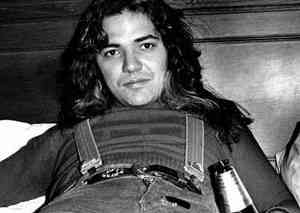 Tommy Bolin Source: Tommy Bolin |
Born in Sioux City, Iowa, in 1951,
Tommy Bolin's was a brief but illustrious career as guitarist
for
Zephyr from '69 to '71,
Billy Cobham in '73, the
James Gang from '73 to '74 and
Deep Purple in '75 and '76. He also
recorded with drummer, Alphonse Mouzon (debut recording as drummer on
Weather Report's initial
album in '71), and the Canadian group, Moxy.
Zephyr's first issue, 'Zephyr', was in 1969, the band formed in Boulder,
Colorado, out of a couple of previous bands, American Standard and Ethereal
Zephyr, the latter named after a railway between Chicago and Denver. The other original
members of Zephyr were Robbie Chamberlin (drums), John Faris (keyboards),
David Givens (bass) and Candy Givens
[vocals/ 1, 2]. Bolin remained with Zephyr
long enough to to record 'Going Back to Colorado' for its issue in 1971. The
group continued briefly without Bolin, issuing 'Sunset Ride' in '72. It
resurrected in the early eighties to release 'Zephyr Heartbeat' in 1982.
Bolin moved onward to other bands as mentioned above. He also issued two
solo albums during his short visit to Earth: 'Teaser' ('75) and 'Private
Eyes' ('76). Bolin gave his final performance in Miami in December of '76,
opening for British guitarist,
Jeff Beck. The last known photo of him is
sitting backstage with Beck after the
show, shot by "Rolling Stone'. He died hours later of a heroin overdose,
alcohol, cocaine and barbiturates also on his menu. Even at the confident
age of twenty-five and a demon with guitar one can't do just anything and
everything at all. References for Bolin: 1,
2,
3,
4,
5,
6,
7.
Discos w various credits: 1,
2.
Forum discussion.
Further reading: 1,
2,
3.
References for Zephyr: 1,
2,
3,
4.
Dave Givens interview 2016.
At Discogs. Tracks per 1969 below are from Zephyr's debut
album, 'Zephyr'. Tommy Bolin 1969 From the LP 'Zephyr': Composition: David Givens Composition: David Givens Composition: David Givens/Tommy Bolin Tommy Bolin 1970 Filmed in Houston with Zephyr Tommy Bolin 1971 Zephyr LP: 'Going Back To Colorado' Tommy Bolin 1973 Album by Billy Cobham Tommy Bolin 1974 Telecast with the James Gang Composition: Joe Walsh/Jim Fox/Dale Peters Tommy Bolin 1975 With Alphonse Mouzon Not issued until 1999 Rehearsal for 'Mind Transplant' Live with Deep Purple Composition: 1971 Deep Purple: Ritchie Blackmore/Ian Gillan Roger Glover/Jon Lord/Ian Paice Album by Moxy Bolin featured tracks 4-6 Album Tommy Bolin 1976 Recorded in Detroit Album
|
 Zephyr Source: Rock 6070 |
|
The British Invasion formally beginning with the
Beatles in 1964 called
for anti-airwave artillery, bands like
Blood Sweat & Tears (BS&T) and Chicago
formed to blast the enemy out
the skies with brass rock. First coming together in 1967 in Chicago, Chicago
would prove vastly more successful for considerably more years than its
early rival, BS&T. Its
personnel was more tightly glued together as well. Members of the band would
alter over the years but not to the degree of BS&T (the latter employing
some 140 musicians up to present times). At the time of Chicago's debut
album [1,
2,
3],
a double, in April of 1969, 'The Chicago Transit Authority',
members were Terry Kath (guitar/vocals), Peter Cetera (bass/vocals), Robert Lamm (keyboards/vocals) and Danny Seraphine on drums. On horns were Walter
Parazaider (sax), James Pankow (trombone) and Lee Loughnane on trumpet.
Chicago continues to this day with original members Parazaider, Pankow,
Loughnane and Lamm. Bill Champlin, had been with the group from 1981 into
the 21st century. Other important members would include Jason Scheff (bass) since
1985 and Tim Imboden (drums) since 1990, both well into the new millennium.
Chicago's first twelve albums from 1969 to '78 went platinum. One of those
was 'Chicago IX', a greatest hits release in '75 that has gone platinum five
times. Unfortunately, 'Chicago 13' fell over in 1979, only harvesting gold.
Five albums from 1982 to '89 went platinum, the last, 'Greatest Hits',
selling platinum five times over as well. The band didn't issue another
studio album of original material for eleven years after 'Night & Day Big
Band' in 1995, though a couple more gold LPs were issued
in the latter nineties, a greatest hits and a Christmas LP. The band yet
appealed to a huge audience into the
new millennium with 'The Very Best of Chicago: Only the Beginning' of 2002
going doubly
platinum, followed by 'The Best of Chicago: 40th Anniversary
Edition' in 2007 going gold. One of Chicago's platinum albums was 'Chicago at Carnegie
Hall' in 1971, notable in that live albums don't generally sell as well as
studio projects. Notable in the 21st century were a couple tours with the
Doobie Brothers in 2010 and '12. Chicago yet rocks as of this writing per
its current band.
References for Chicago: 1,
2,
3,
4,
5,
6.
Founding members.
Live appearances: 1,
2.
In visual media.
Discos w various credits: 1,
2,
3,
4.
Compositions by Peter Cetera.
Compositions by Robert Lamm.
Compositions by James Pankow. Chicago 1969 Lead: Robert Lamm Composition: Robert Lamm LP: 'Chicago Transit Authority' Filmed live Composition: Steve Winwood/Jimmy Miller Chicago 1970 Album Filmed in Massachusetts Chicago 1971 Album Chicago 1973 Does Anybody Really Know What Time It Is Filmed at Caribou Ranch Composition: Robert Lamm Chicago 1974 Filmed at Caribou Ranch Composition: Lee Loughnane Chicago 1977 Filmed in Essen, Germany Composition: Lee Loughnane Chicago 1984 Filmed live Composition: Robert Lamm/Bill Champlin/Deborah Neal Chicago 1991 Album Chicago 1995 Composition: Cole Porter LP: 'Night & Day' Chicago 2011 Filmed with the Notre Dame Marching Band Composition: Robert Lamm Chicago 2016 Ballet for a Girl from Buchanno Filmed at the Sedona Performing Arts Center Composition: James Pankow
|
 Chicago Source: Chicago |
|
|
Grand Funk Railroad
(GFR)
was named in 1969 after the Grand Trunk Western Railroad that ran from
Chicago through Michigan up into Canada and across Northeastern United
States. So far as they were concerned Queen Elizabeth II, Supreme Commander
of the British Invasion, was a big pantywaist,
though only her tailor really knew. Grand Funk Railroad proved a deadly
enemy to the British, they assigned by US Supreme Command to survey and
strike at will. The havoc they unleashed on not a few, from
Climax Blues Band to all the
unnamed soldiers who had dared to face so fierce the weapon as had been the
Railroad, put Elizabeth to something of a fuss. She was far from ready to
relinquish sovereignty as the Queen of Rock and Roll, but when GFR issued
'On Time' and 'Grand Funk' in 1969, the former to go gold, the latter
platinum, she began to see the light: Americans were now a threat, not just
a bother. That spurred her to redouble her efforts when the Railroad
released 'Closer to Home' in 1970, plunking a cannonball right through her
window. That would go platinum, the Queen become so darkly distracted that she began
to yarn booties like a nervous Muffet on her tuffet in a realm like a pickle jar painted black
though with some holes poked in its lid. In 1971 'Survival' and 'E luribia Funk', both to go
platinum, wrought the Queen so distraught that she Britishly brattishly
shouted "If I can't win I
won't play!" as she stomped away from her generals. Convinced that without a
Queen they might as well forfeit the game, the Brits turned up the heat,
only to be faced with 'Phoenix' in 1972 which would go gold. GFR was hardly
the only American band causing air raids in Great Britain, and by the time
they released 'We're an American Band' in 1973, to go platinum, the Brits
were sorry they'd ever sent the
Beatles to America in the first place. Too bad. GFR
pounded them with 'Shinin' On' and 'All the Girls in the World Beware!!!' in
1974, both of which would achieve gold. Unfortunately a few girls apparently took them for
their word and GFR never produced another metal album. The band's first
retirement arrived after 'Good Singin', Good Playin'' per 1976. A
reformation in 1981 lasted to 1983. The group was
resurrected yet again in 1996 until Farner left in 1998. Reforming minus
Farner
in 2000,
the group is currently active since. At the time
Grand Funk released its debut album it was a trio consisting of Don Brewer
(drums), Mel Schacher (bass) and Mark Farner (guitar/piano/harmonica). Among
others in multiple ensembles of GFR was Craig Frost who performed keyboards with the band from 1972 to '76.
Brewer and Schacher yet lead a hand of five. References
for GFR: 1,
2,
3,
4,
5,
6.
Synopsis.
In visual media.
Discos w various credits: 1,
2,
3.
Reviews: 1,
2.
Further reading: Rolling Stone 1971,
Rock's Backpages.
References for Don Brewer: 1,
2,
3.
2002 interview.
References for Mark Farner: 1,
2,
3,
4.
Compositions.
Interviews: 2002,
2017,
2018. Internet hub. Grand Funk Railroad 1969 Album Filmed live Composition: Eric Burdon/Chas Chandler From 'Rosie' by C. B. and Axe Gang Album 'Playboy After Dark' Composition: Don Brewer/Mark Farner Grand Funk Railroad 1970 Album Album Grand Funk Railroad 1971 Album Filmed live Composition: Mark Farner Album Album Grand Funk Railroad 1972 Album Grand Funk Railroad 1973 Album Grand Funk Railroad 1974 All the Girls In the World Beware Composition: Mark Farner/Craig Frost LP: 'All the Girls In the World Beware!!!' Composition: Don Brewer/Craig Frost LP: 'All the Girls In the World Beware!!!' Filmed concert Filmed in Los Angeles Composition: Don Brewer Album Filmed in Los Angeles Composition: Mark Farner Grand Funk Railroad 1976 Album Album Grand Funk Railroad 1981 Album Grand Funk Railroad 1983 Composition: Mark Farner LP: 'What's Funk?' Composition: Don Brewer LP: 'What's Funk?' Mark Farner 2016 Filmed live
|
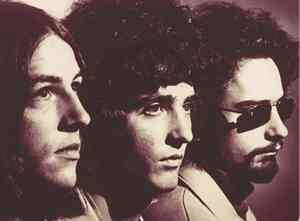 Grand Funk Railroad L to R: Farner, Brewer, Schacher Source: Ultimate Classic Rock |
|
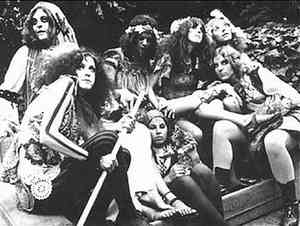 The GTOs Source: Radio Free Gunslinger |
The
GTOs (Girls Together anything spelled O, such as
Outrageously, Only, Objectively, Occasionally, ad infinitum) were a brief-lived
experiment by
Frank Zappa, issuing only one album in
'69, reuniting in '74, then vanishing into the bottomless pit of O. Members
of the GTOs were seven, with their more proper names in parentheses: Pamela
Ann Miller (Miss Pamela), Judith Edra Peters (Miss Mercy), Cynthia Sue Wells
(Miss Cynderella), Christine Ann Frka (Miss Christine), Luz Selenia Offerral
(Miss Lucy) and Sandra Lynn Rowe (Miss Sandra). As of this writing only
three of the GTOs remain living: Miss Pamela, Miss Mercy and Miss Sparky.
References: 1,
2,
3,
4,
5.
Synopsis.
Discogs. The GTOs 1969 Album
|
|
|
Santana was formed by Carlos Santana in San Francisco in
1969. Carlos had been born in Autlán de Navarro, Jalisco, Mexico, in July of 1947.
His elder brother, guitarist, Jorge [1,
2,
3,
4], had been born in Autlán as well in 1951.
Carlos picked up violin at age five and guitar at age eight, taught by his father, a
mariachi
musician. He early got moved to Tijuana where he was left in 1955 as his
father established himself in San Francisco,
he following in 1961 at age thirteen [*].
He there busked and washed dishes until 1966 when a no show by
Paul Butterfield (too drunk to
perform at the moment) at the Fillmore West auditorium forced manager, Bill
Graham, to quickly toss together a band. Carlos made his career that evening
with an impressive performance, forming the Carlos Santana Blues Band the
next year. In the latter portion of '68 Carlos contributed guitar to
'The Live Adventures of Mike Bloomfield and Al Kooper' issued in '69. It
was Graham who got Santana booked at the famous
Woodstock Festival in August
of '69, the same month Santana issued its debut LP, 'Santana'. Members of
Carlos' band, Santana, at the time were Carlos (lead), Mike Shreve (drums), David Brown
(bass), Gregg Rolie (organ), with percussionists, Michael Carabello and Jose
Areas. The group would quickly begin to employ all of Latin America with a
good portion of North by the time it arrived to the 21st century, but it was
Carlos' pack and he would make the Santana name as famous as Mexico,
beginning with 'Abraxas' released in
1970 containing 'Black Magic Woman' (Peter Green),
followed by 'Santana' (Santana III) in Sep '72. Oct '72 witnessed
'Caravanserai', the band's fourth LP to eventually go platinum. Come
Carlos first solo LP in 1973, 'Love Devotion Surrender', that to go gold. By
that time the threat
per the British Invasion that was
Led Zeppelin was wetting their fleece pajamas.
Zeppelin had launched their first air
assault, 'Led Zeppelin', in January of 1969, eight months before Santana's
debut LP. Queen Elizabeth II had thought she'd permanently cinched her assault on
the US with that, until the dissolution of the
Beatles in 1970, her
Invasion beginning to crack. Now come Santana, causing her to spill her tea as well
w every album issued. She'd
pretty much owned the States for the last six years. But now, as she was losing generals like
Lennon and
McCartney,
while the States had been acquiring new ones like
Jimi Hendrix and the
Allman Brothers, her
castle as the Queen of Rock was bearing blows from catapults that shook babies in their cradles Kingdom-wide with
every missile. America was no longer only resisting as in the
latter sixties, but now reawakening as a giant too large for her into the seventies and beyond,
host to numerous bands that would set the bar a little
higher as did Santana's. Despite the recognition of the numbering of her days,
Elizabeth kept battering the States through the seventies with, due to attrition,
the refuse of her realm in the form of punk bands. That until the unknown truce of News Years Day 1980 when the
Queen pronounced that the eighties would be Invasion free. British musicians tromping into
the United States or occupying American airwaves were to no longer be
classified as invaders. Pretty sneaky, but matters not. Elizabeth's gig in
the war was up anyway. As for Santana, the band lost grip after '72, releasing only four
gold albums until 1977 when they finally got their act together to release
platinum 'Moonflower'. Yet again the band fell to pieces, issuing only two
gold albums until 'Zebop!' in 1981 which would go platinum. All too soon the
group shattered again, releasing only one gold album ('Shango' '82) until platinum (15x)
'Supernatural' in 1999, that winning the 2000 Album of the Year Grammy Award. That would be the longest period, 17 years, between
original albums to achieve at least gold. 'Shaman' per 2002 would sell platinum as
well. But then Santana crumbled yet again, issuing only one gold LP
until 'Corazón' in 2014 which went platinum. About time. 'Santana IV' was
issued in April of 2016 to sell 40,000 copies in its first week and place at
#5 on Billboard. 2017 saw collaboration between Carlos and family w
Ron Isley and family on 'Power of
Peace'. But, what? Nine platinum albums through the years, plus eight
admittedly fallen gold LPs, and that's it? In the meantime Carlos is #15 on
the 'Rolling Stone' list of
100 Greatest Guitarists
(trailing
Hendrix at #1, with which most would likely agree,
Duane Allman at #2,
BB King at #3).
Carlos had published his memoir, 'The Universal Tone: Bringing My Story to
Light', in 2015. References for Carlos Santana: 1,
2,
3,
4,
5,
6,
7,
8.
Discos w various credits: 1,
2,
3.
Interviews: 1974,
2010,
2017,
2017.
Reviews. Further reading at Rolling Stone.
References for the band, Santana: 1,
2.
Current personnel.
Discos w various credits: 1,
2,
3.
(Carlos) Santana in visual media.
Reviews. Santana 1969 Composition: Carlos Santana/Gregg Rolie LP: 'Santana' Composition: Carlos Santana/Gregg Rolie/José Areas David Brown/Michael Carabello/Michael Shrieve LP: 'Santana' Santana 1970 Album Filmed concert Santana 1973 Filmed concert Santana 1981 Composition: Cat Stevens LP: 'Zebop!' Composition: Graham Lear/David Margen Alan Pasqua/Carlos Santana LP: 'Zebop!' Santana 1989 Filmed concert Santana 1993 Album Recorded 1988 Santana 1997 Album Recorded 1987 with Buddy Miles Santana 1999 Composition: Carlos Santana/Dave Matthews LP: 'Supernatural' Vocal: Dave Matthews Composition: Itaal Shur/Rob Thomas LP: 'Supernatural' Vocal: Rob Thomas Santana 2000 Concert filmed in Tokyo Santana 2016 Composition: Gregg Rolie LP: 'Santana IV'
|
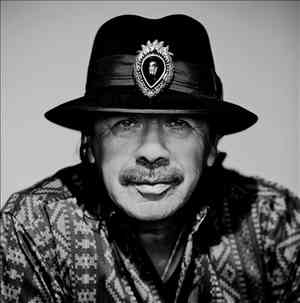 Carlos Santana Photo: Ruben Martin Source: Radio Zurqui |
|
|
Warren Zevon (vocals, guitar, piano, harmonica)
was born in Chicago in 1947, his father a Jewish immigrant from Russia, his
mother an English Mormon. His father was also a bookie known as Stumpy for
Jewish mobster, Micky Cohen (1913-76). Zevon was raised a teenager in
Fresno, California. His parents divorcing at age sixteen, he quit school and
took off for New York City to become involved in the folk scene there,
writing compositions and jingles while working as a studio musician. His
initial LP, 'Wanted Dead or Alive'
[1,
2] emerged in 1969. During the early
seventies he toured with the Everly
Brothers. He lived briefly in Spain in 1975 before returning to Los
Angeles to record 'Warren Zevon' for release in 1976. That fared not so
well, but 'Excitable Boy' [1,
2] per 1978 would go platinum. That contained
'Excitable Boy',
'Lawyers, Guns and Money' and
'Werewolves of London'. After 'Bad Luck Streak
in Dancing School' in 1980 Zevon's albums largely fell off the charts until
'The Wind' [1,
2] per 2003 went gold, that his twelfth and final studio LP. Zevon
had discovered he had cancer (pleural mesothelioma) in 2002, but chose to
continue working rather than enter into iffy situations with doctors and the
considerable inconvenience of a lifestyle of
treatments and pills. He
died [1,
2]
the next year on 7 September 2003 less than two weeks
after the August issue of 'The Wind' which won him two posthumous Grammy
Awards. His ashes were dispersed over the Pacific Ocean near Los Angeles.
2007 saw the publishing of 'I'll Sleep When I'm Dead: The Dirty Life and
Times of Warren Zevon' by Zevon's ex-wife, Crystal.
References for Zevon: 1,
2,
3,
4,
5,
6.
7.
Compositions. Discos w
various credits: 1,
2,
3.
Concert recordings 1976 to 2001.
In visual media.
Interviews: 1982,
2000. Further reading:
Washington Post '78,
Rolling Stone '81,
Guardian '13,
Paste '17,
Ringer '17.
Uncredited titles below were authored music and text by Zevon. Warren Zevon 1969 Album Warren Zevon 1976 Live Warren Zevon 1978 Album Title track written by LeRoy Marinell/Zevon Warren Zevon 1980 Composition: Jorge Calderón/Zevon LP: 'Bad Luck Streak In Dancing School' Filmed concert Warren Zevon 1982 Filmed in Passaic NJ Filmed concert Warren Zevon 1987 LP: 'Sentimental Hygiene' LP: 'Sentimental Hygiene' Warren Zevon 1989 'Night Music with David Sanborn' LP: 'Transverse City' Warren Zevon 1993 'David Letterman Show' Composition: Jorge Calderón/Zevon Warren Zevon 1995 'Sound FX' Composition: Carl Hiaasen/Zevon Warren Zevon 2002 Filmed live Composition: Paul Muldoon/Zevon LP: 'My Ride's Here' 'David Letterman Show' Composition: Paul Muldoon/Zevon Warren Zevon 2003 Composition: Jorge Calderón/Zevon Music video with Bruce Springsteen LP: 'The Wind' Composition: Jorge Calderón/Zevon Music video LP: 'The Wind'
|
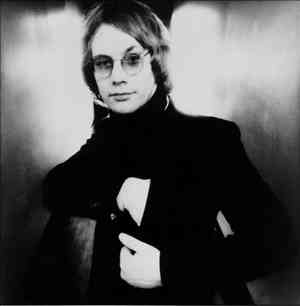 Warren Zevon Source: All Music |
|
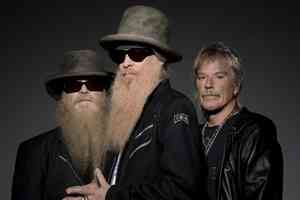 ZZ Top Photo: Ross Halfin Source: Ultimate Classic Rock |
ZZ Top
was formed in Houston in 1969, named after blues vocalist, ZZ Hill, and
BB King, "top" musician to the mind of guitarist/vocalist, Billy Gibbons. ZZ
Top was another of the Southern rock bands which helped to deflate Queen Elizabeth's
pretensions to rule rock and roll as a monarchy per the
British Invasion. Gibbons didn't want to
dance so he formed ZZ Top, which the War Dept. then employed to help put old
Lizzie out to pasture, she only age 43 in 1969 and at the height of her
form, but not long later would go dopey as does any bowling pen after so many blows. The ZZ Top were at
first organist, Lanier Greig [1,
2,
3], and drummer, Dan Mitchell. It was that
configuration which issued 'Salt Lick'/'Miller's Farm' in 1969 on the Scat
label (45-500). 'ZZ Top's First Album' in 1971, however, featured Dusty Hill
on bass and keyboards, with Frank Beard on drums. That configuration had
already issued the 45, '(Somebody Else Been) Shakin' Your Tree'/'Neighbor,
Neighbor', in 1970 for London (45-138). The trio of Gibbons, Beard and Hill
has stuck together to this day, Beard, ironically, was the only presentable member of the trio,
not getting twigs and such stuck in a beard. Gibbons was once seen mopping the floor w his.
Hill let dirty little sparrows nest in his own abundant bush now and then. The Queen thought ZZ Top was just another
pack of American lapdogs, or so she told herself, the war having become so
intense that even the
Beatles, her top generals, refused to fight
anymore, disbanding in 1969-70. When ZZ Top issued 'Tres Hombres' in 1973 it
had gold written on it. Elizabeth was even yet in a state of denial when
'Fandango! ('75) and 'Tejas' ('76) were issued, each to go gold ('Fandango'
platinum in Canada). 'Degüello' in 1979 would go platinum, and the Queen
would hang on to sanity by a thread, forced to resign as Supreme Commander
by her generals who wished to war no more, thinking it time to tour the United
States as allies rather than enemies. ZZ Top itself first toured Europe in
1980, appearing in Germany on the 'Rockpalast' television program. The now
demented Queen was well out of the way, left to cut Play-Doh cookies into
shapes like hearts and stars and bake them in the sun in her courtyard when ZZ Top issued 'El Loco' in 1981 to go gold.
Poor Elizabeth couldn't have cared less, she now living in the cobwebs of the good old days when she had
bands like the Stones to do her dirty work for her.
In 1983 ZZ Top released 'Eliminator' which would go not platinum, but
diamond. Hill, who carried a derringer in his boot, accidentally shot himself in the
abdomen in 1984. 'Afterburner' per 1985 would tick platinum five times. In 1990
'Recycler' would see platinum, as well as 'Antenna' ('94). Top remains a
major American band to date, 'La Futura' going gold in Germany as late as
2012 and attaining to #6 on Billboard's album chart. References for ZZ Top
encyclopedic: 1,
2,
3.
Musical: 1,
2,
3,
4.
Highlights.
Discos w various credits: 1,
2,
3.
In visual media.
Equipment used.
Internet hub. Further reading:
Guardian '76,
Rock's Backpages.
References for Billy Gibbons (b Dec '49): 1,
2,
3,
4.
Catalogs: 1,
2.
Interviews: 2015,
2016,
2016.
1983 interview w Frank Beard
[b Jun '49/ 1,
2]. Interviews
w Dusty Hill (b May '49):
2010,
2016. Uncredited titles below were
jointly authored by Gibbons, Hill and Beard as were most. ZZ Top 1969 Composition: Gibbons Composition: Gibbons ZZ Top 1971 Album ZZ Top 1972 Album ZZ Top 1973 Album ZZ Top 1975 Album ZZ Top 1976 Album ZZ Top 1979 Album ZZ Top 1981 Album ZZ Top 1983 Album Music video Music video Music video ZZ Top 1985 Album Music video Music video ZZ Top 1990 Music video Album ZZ Top 1994 Composition: Gibbons LP: 'Antenna' LP: 'Antenna' ZZ Top 1999 Album ZZ Top 2003 Filmed concert Album ZZ Top 2004 Filmed at the Crossroads Guitar Festival ZZ Top 2011 Composition: Gibbons Filmed live ZZ Top 2012 Album ZZ Top 2013 Filmed concert
|
|
|
We suspend this section of the history of early Rock & Roll with ZZ Top. 1970 would see the first record releases by such as Jimmy Buffet, the Eagles, Funkadelic, the J Geils Band, Sugarloaf, and the soul group, the Stylistics. Following in 1971 were the initial issues of America, Commander Cody, the Doobie Brothers, Little Feat, the Manhattan Transfer, the New Riders of the Purple Sage and the R&B/soul acts, Bill Withers, Sister Sledge, and Mike Tyson's the Undisputed Truth. |
|
Black Gospel
Blues
Early Blues 2: Vocal - Other Instruments
Modern Blues 2: Vocal - Other Instruments
Classical
Romantic: Composers born 1770 to 1840
Modern: Composers born 1900 to 1950
Country
Folk Music
Jazz
Early Jazz 1: Ragtime - Bands - Horn
Early Jazz 2: Ragtime - Other Instrumentation
Modern 4: Guitar - Other String
Modern 5: Percussion - Other Orchestration
Modern 7: Latin Jazz - Latin Recording
Modern 8: United States 1960 - 1970
Modern 9: International 1960 - 1970
Latin
Latin Recording 2: The Caribbean
Latin Recording 3: South America
Popular Music
Rock & Roll
Total War - Sixties American Rock
Musician Indexes
Classical - Medieval to Renaissance
Classical - Baroque to Classical
Jazz Early - Ragtime - Swing Jazz
Jazz Modern - Percussion - Song - Other
Boogie Woogie - Doo Wop - R&B - Rock & Roll - Soul - Disco
Sixties American Rock - Popular
Latin Recording - The Caribbean - South America
Internet Music Poetry Vaping
![]()
vfssmail (at) gmaill (dot) com